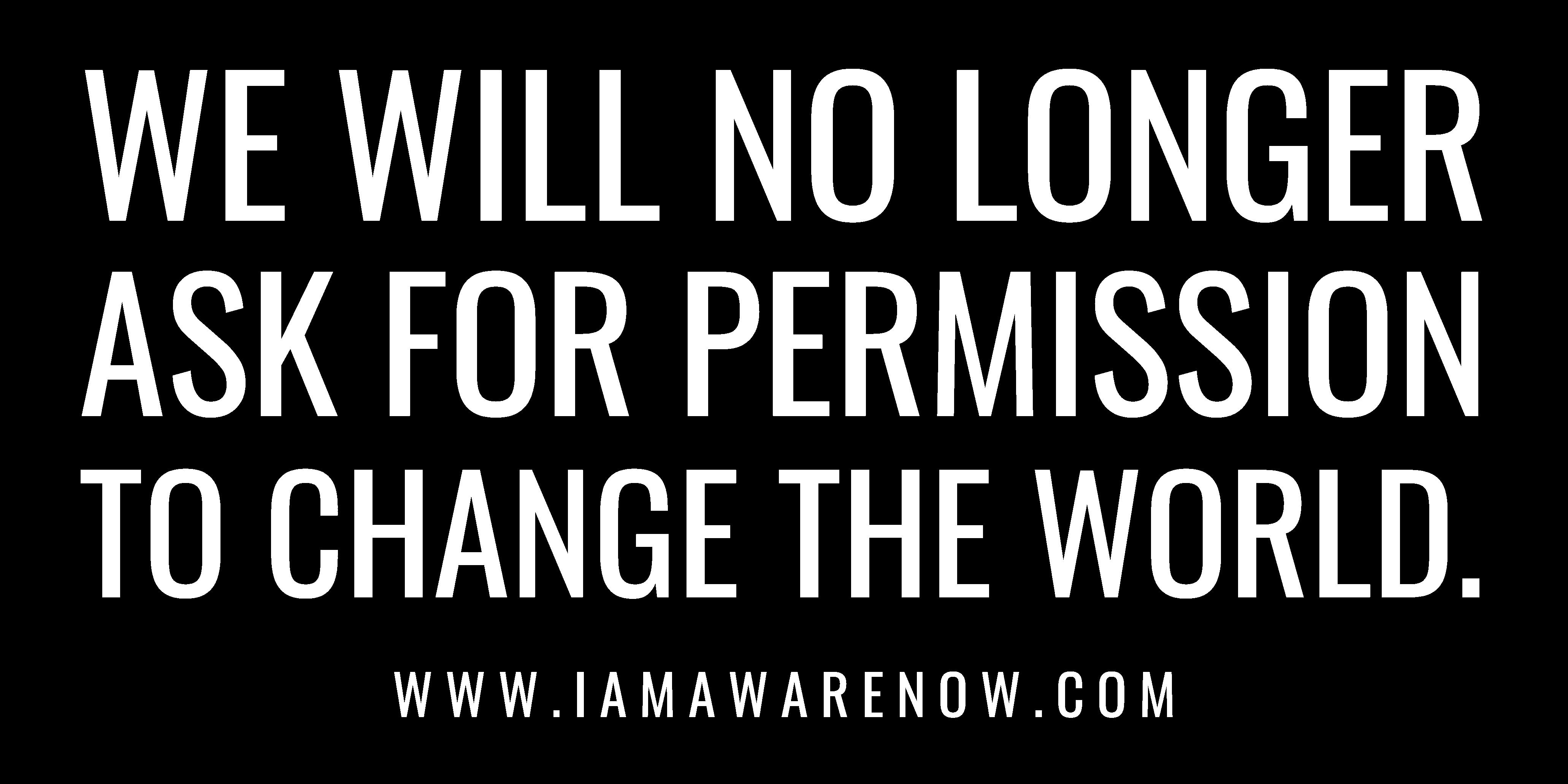AWARENOW
THE WORLD'S OFFICIAL MAGAZINE FOR CAUSES






A CATALYST FOR CHARACTER AND CHANGE
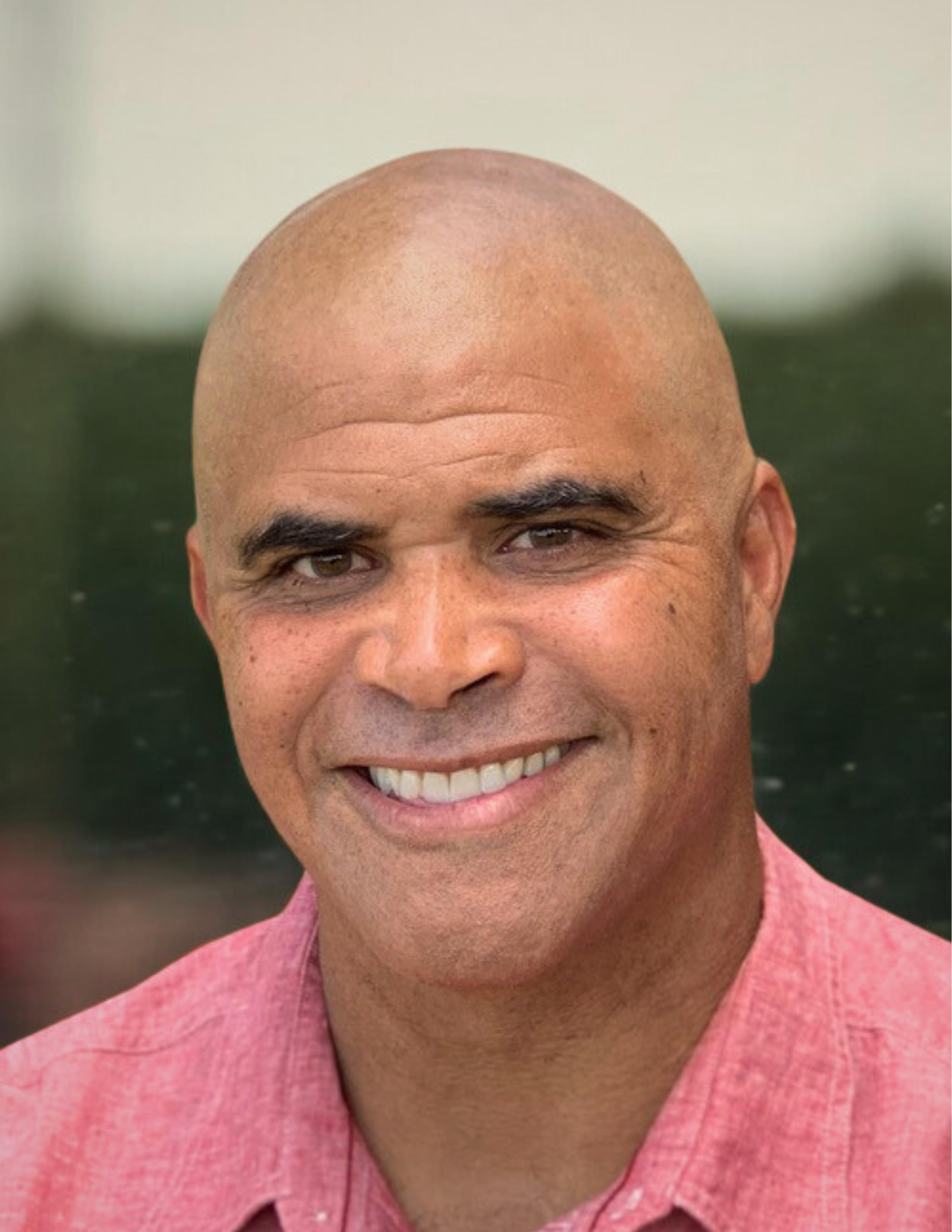

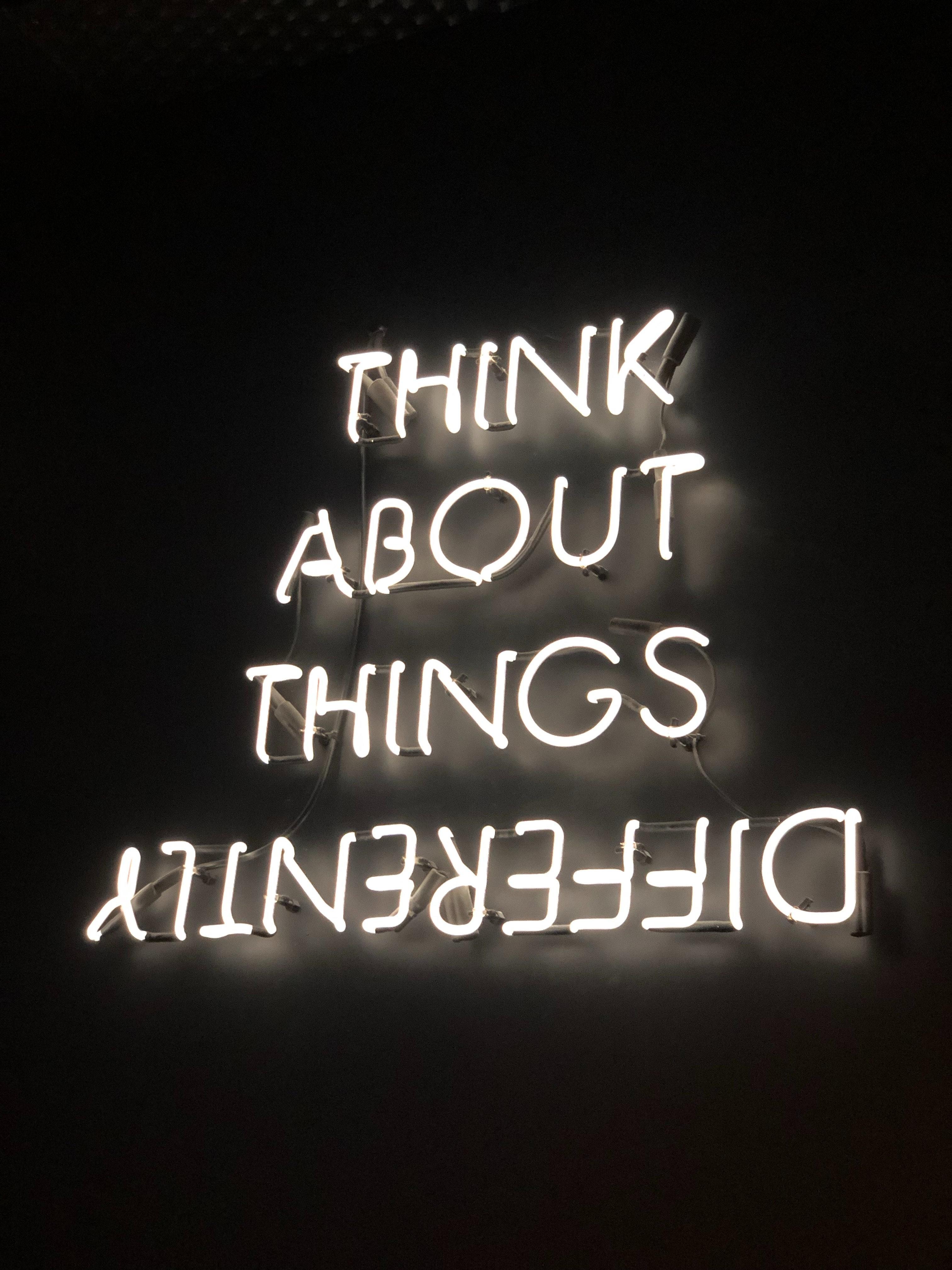







A CATALYST FOR CHARACTER AND CHANGE



AwareNow Magazine is a monthly publication produced by AwareNow Media™, a storytelling platform dedicated to creating and sustaining positive social change with content that inspires and informs, while raising awareness for causes one story at a time.
BOBBY
VISION
PAUL

“It’s not whether you get knocked down, it’s whether you get up.”

Vince Lombardi

In this edition of AwareNow, we turn our attention to sports — not just as games won or records broken, but as a lens into the human experience. Beyond the roar of the crowd and the numbers on the scoreboard are stories of mental health struggles, triumph over adversity, identity reclaimed, and resilience redefined.
Our cover story with Aaron Taylor reflects this truth, as he opens up about the mental toll of the NFL and the journey beyond the Super Bowl. His story reminds us that the real battles aren’t always on the field.
AwareNow Sports exists at this intersection of athletic excellence and the human cause. From the Super Bowl to the Paralympics, from playgrounds to professional arenas, every athlete carries a story that transcends the field of play.
Always aware. Always free. AwareNow… More than ever.

ALLIÉ McGUIRE
CEO & Co-Founder of AwareNow Media

Allié McGuire began her career as a performance poet, transitioned into digital storytelling as a wine personality, and later produced the Hollywood Film Festival. Now, as co-founder of AwareNow Media, she uses her platform to elevate voices and champion causes, connecting audiences to stories that inspire change.

McGUIRE
President & Co-Founder of AwareNow Media
Jack McGuire’s career spans the Navy, hospitality, and producing the Hollywood Film Festival. Now, he co-leads AwareNow Media with Allié, focusing on powerful storytelling for worthy causes. His commitment to service fuels AwareNow’s mission to connect and inspire audiences.
The views and opinions expressed in AwareNow are those of the authors and do not necessarily reflect the official Any content provided by our columnists or interviewees is of their opinion and not intended to malign any religion, ethnic group, political group, organization, company, or individual. Stories shared are not intended to vilify anyone or anything. Their intent is to make you think.
* Please note that you may find a spelling or punctuation error here or there, as our Editor-In-Chief has MS and lost vision in her right eye. That said, she still has perfect vision in her left and rocks it as best as she can.
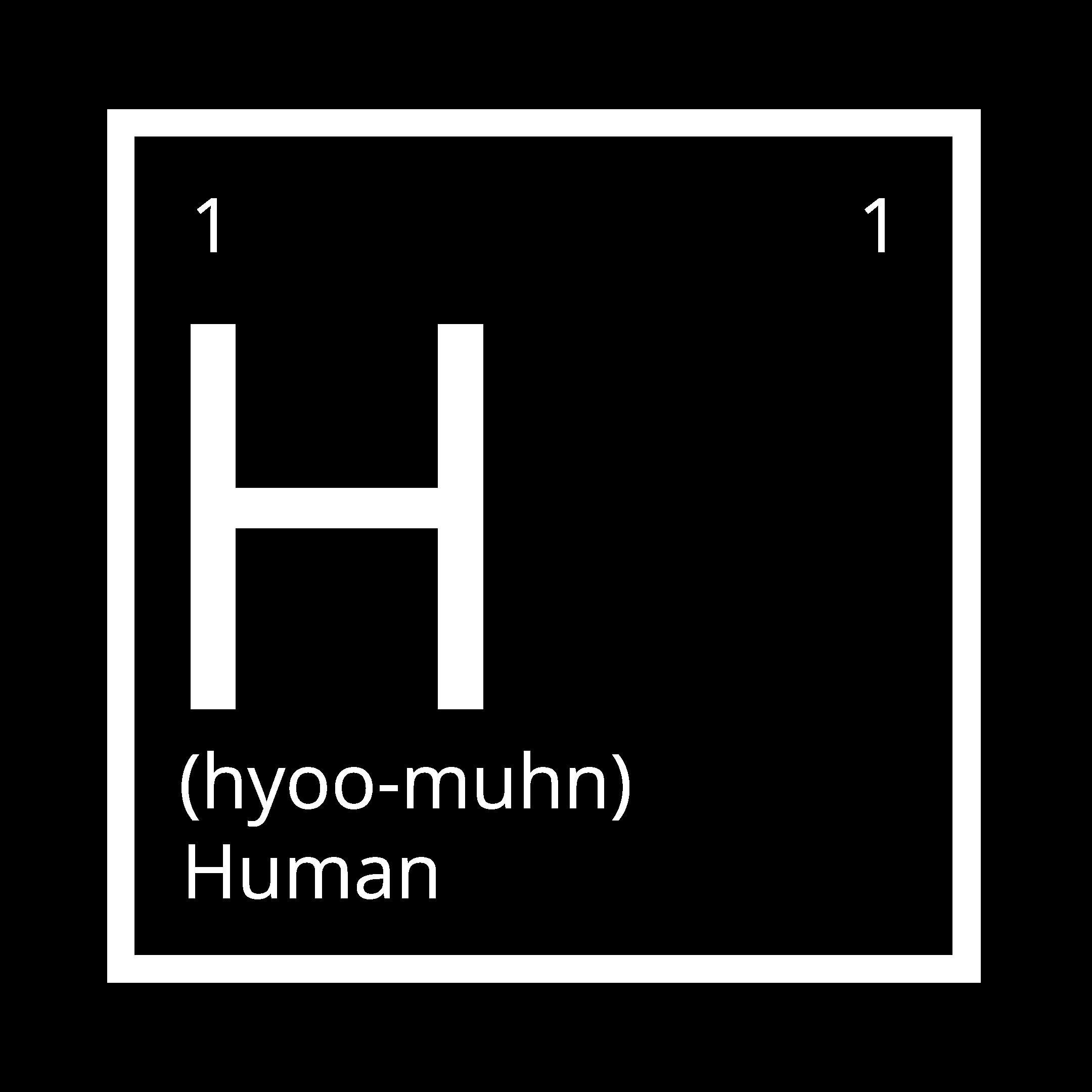


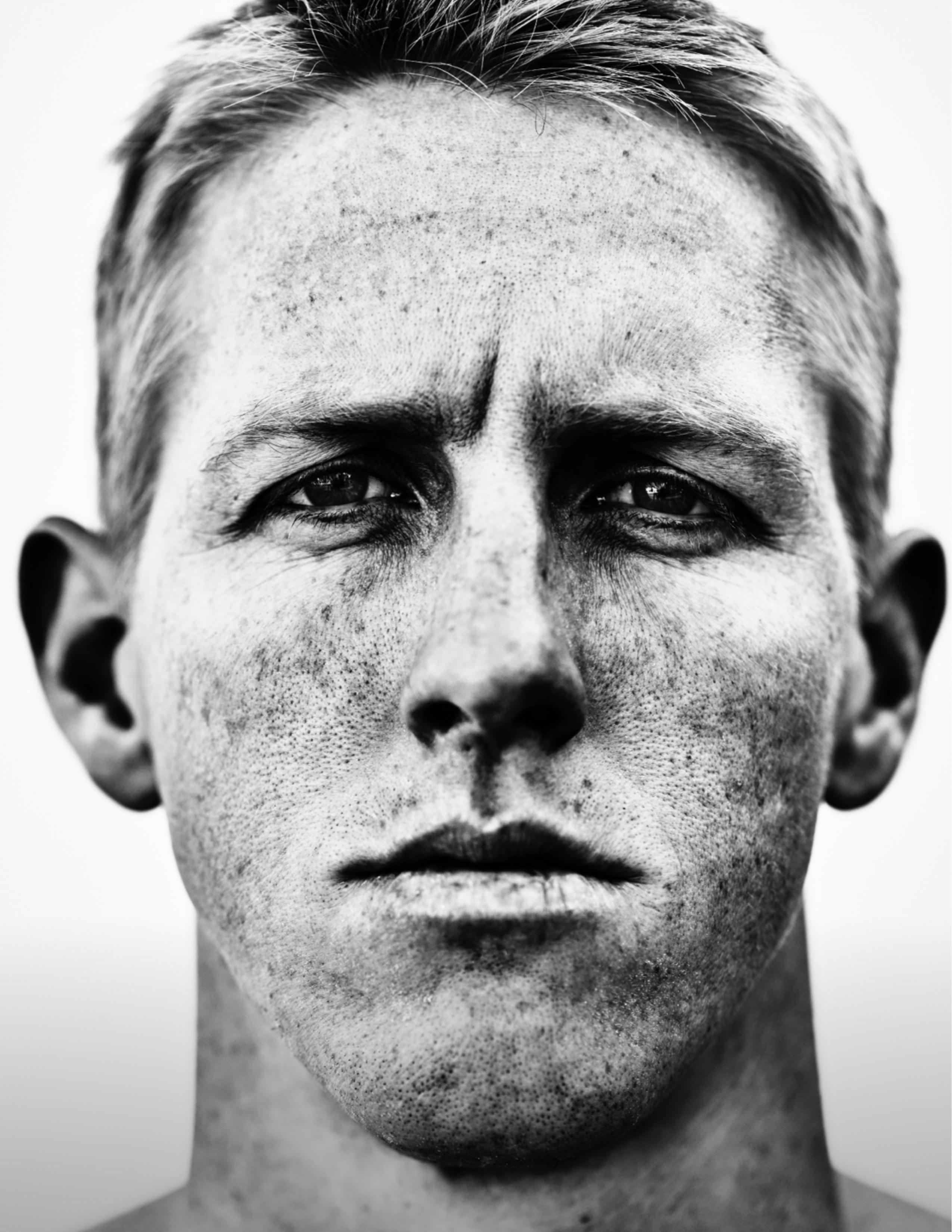
For more than a decade, Tri Bourne chased greatness on the beach—rising through the ranks as a professional beach volleyball player and representing Team USA in the Olympics, and redefining what resilience looks like in sport. But this isn’t just a story about volleyball. It’s about grit and grace, about the power of choosing your moment instead of letting the moment choose you. In this conversation, we look back on the climb, sit with the weight of the goodbye, and look ahead to what comes after the game— fatherhood, freedom, and the fire that still burns.
ALLIÉ: Tri, let’s start at the beginning—not necessarily with the first medals or the major match points before or after being part of the AVP or playing in the Olympics. Do you remember the moment when volleyball stopped being just something you did and started becoming a part of who you are?
TRI: Right. It's interesting looking back on it now, because when you're younger, you don't realize that that's what you're doing, right? You're creating this identity for yourself. I think if you knew that, maybe you'd go about it a little bit
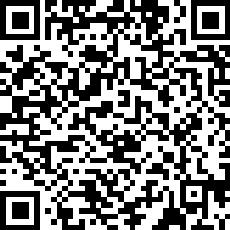
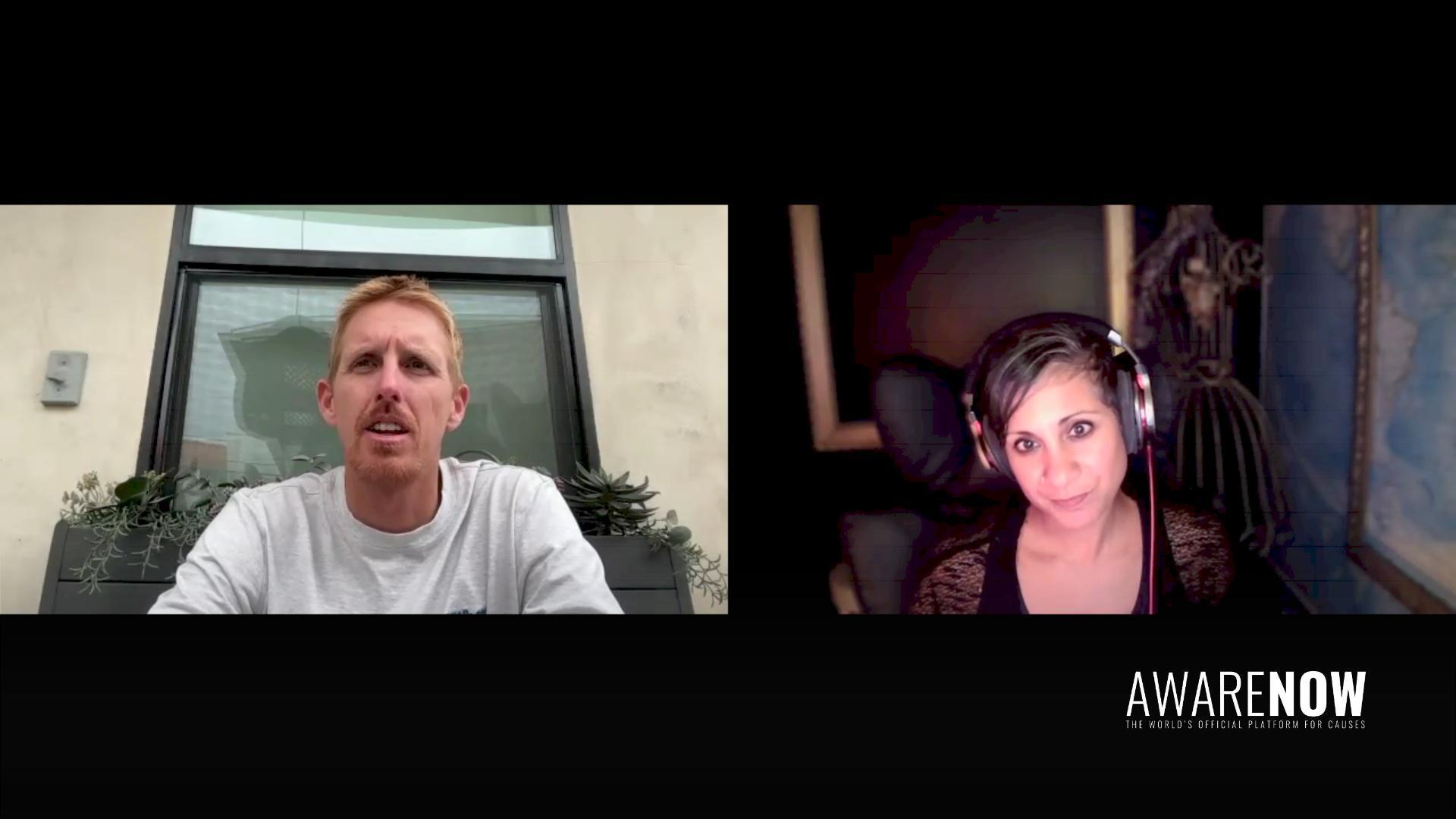



“The circumstances are out of my control, so I can't stress out about that.”
TRI: (continued) with youth national team stuff when I was 16 or 17. So back then, it was just like something to do, something to play. But I think, obviously, when I went to college, I started getting notoriety and that's when it kind of clicked that what I'm doing on the court has a bit of a bigger impact outside of just myself. I'm representing a university and that kind of thing. And then when I went pro, I was on my own. And so I had that hint of playing for something bigger than myself, but now it was like, I get to start from scratch and make this professional career whatever I want it to be. And what that ended up being was just like, I wonder what it's like to be a world-class professional athlete. That's been my dream. I wonder what that is. And I had a realization that I didn't need to actually be the best athlete in the world to experience what it's like to be a world-class athlete. Obviously, there are some opportunities that you have to earn by winning and all that, but I could go about my business in that way. And when I decided that, I think that's when my identity started to kind of get glued to volleyball and I started to realize that, wow, this is like a big life move and a big thing that's going to set up the foundation for the rest of my life—the person that I've become on and off the court. And I think the biggest part in hindsight, looking back, is the challenges, the highs and the lows, and how I treated those, and how I learned from the lows, learned from the wins as well. But yeah, I think it started probably right when I realized that I had the potential to go professional and once I set on that course, I started building this new person.
ALLIÉ: It became part of you. Not just what you did, but part of who you are. So—14 years at this, on tour, playing in the sand with both the weight of dreams and also that constant grind of the reality of it all. When you look back, Tri, what was the hardest thing to carry?
TRI: Letting go of control, I think, was probably the biggest thing. With a lot of my successes, I gained this crazy confidence, but the circumstances changed year to year, month to month. So it got very frustrating with this almost perfectionism mindset where I wanted everything to go the right way and I visualized it going a certain way. And so when it didn’t, it was really hard. But then time and time again, I had to learn those lessons of it's not in my control. The circumstances are out of my control, so I can't stress out about that, and that's what was hard for me.
Then I got the biggest lesson, which was getting the autoimmune disease, having to step back from the sport in my prime for two years. That was a life changer because I had to spend so much time in my own head. I didn't have that outlet of the sport, of the exercise, the adrenaline, and all that. So that was probably the time where I made the biggest leaps in terms of realizing that my circumstances, my story, is just different from everyone else’s, and that's neither good nor bad. It just is what it is. And I had to really lean into my own story and being unique and special in my own way. So I think that's what it probably is.
ALLIÉ: Yeah, for sure. Control—it’s a hard thing to let go of.
TRI: Yeah, let go of the reins…
ALLIÉ: Letting those reins go is hard. So let’s go to the flip side of that then. Over the course of these 14 years, what's something from the game that you'll always hold close to you?
TRI: I think something I showed myself was just perseverance and resilience, and I learned a lot. And I don't have regrets, but obviously I’d do things differently in hindsight because hindsight is usually 20/20, right? But I think just the perseverance, the strength to go through the highs and the lows, and to maintain the integrity and always come back out of the lows and find the positives eventually, and always try—at least—to have high values and virtues and have


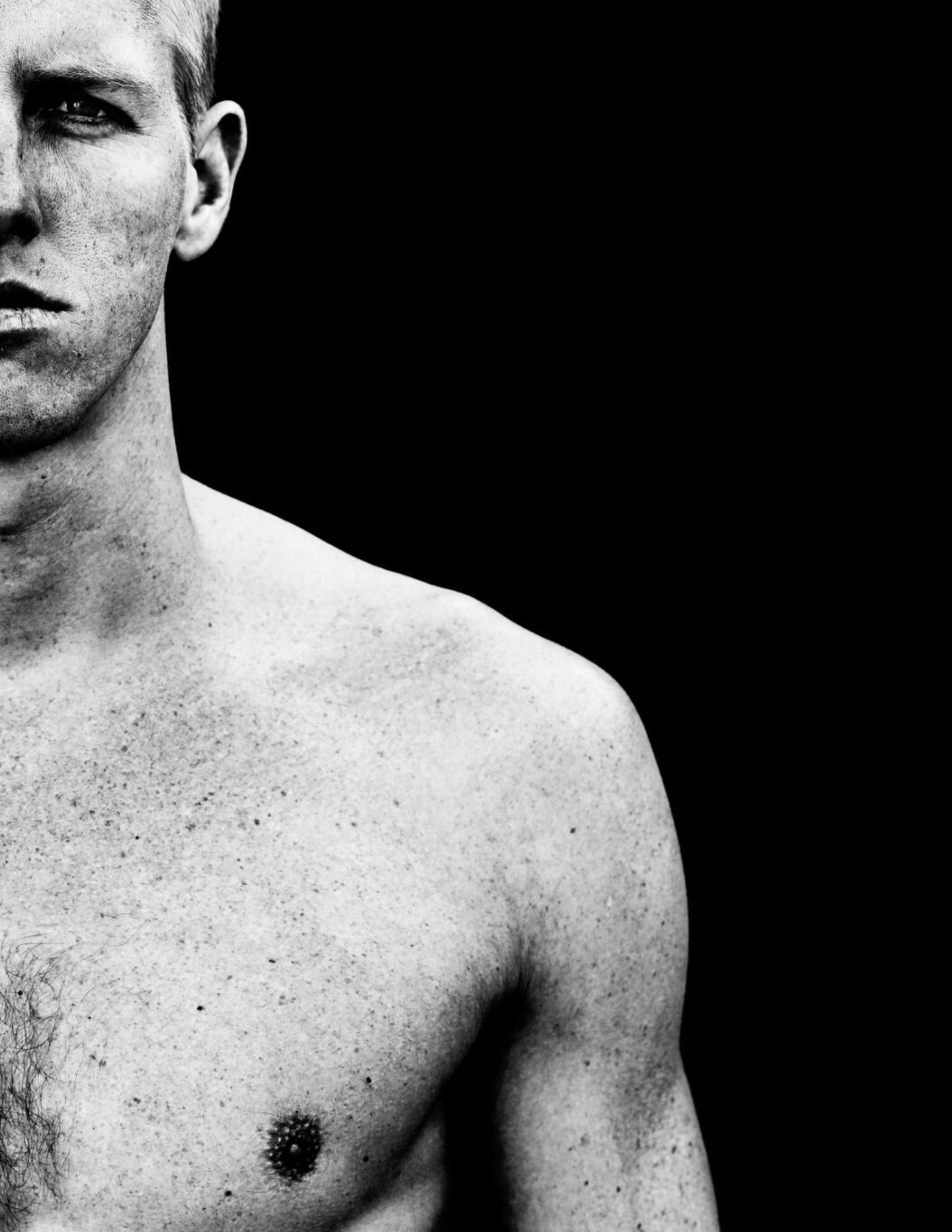

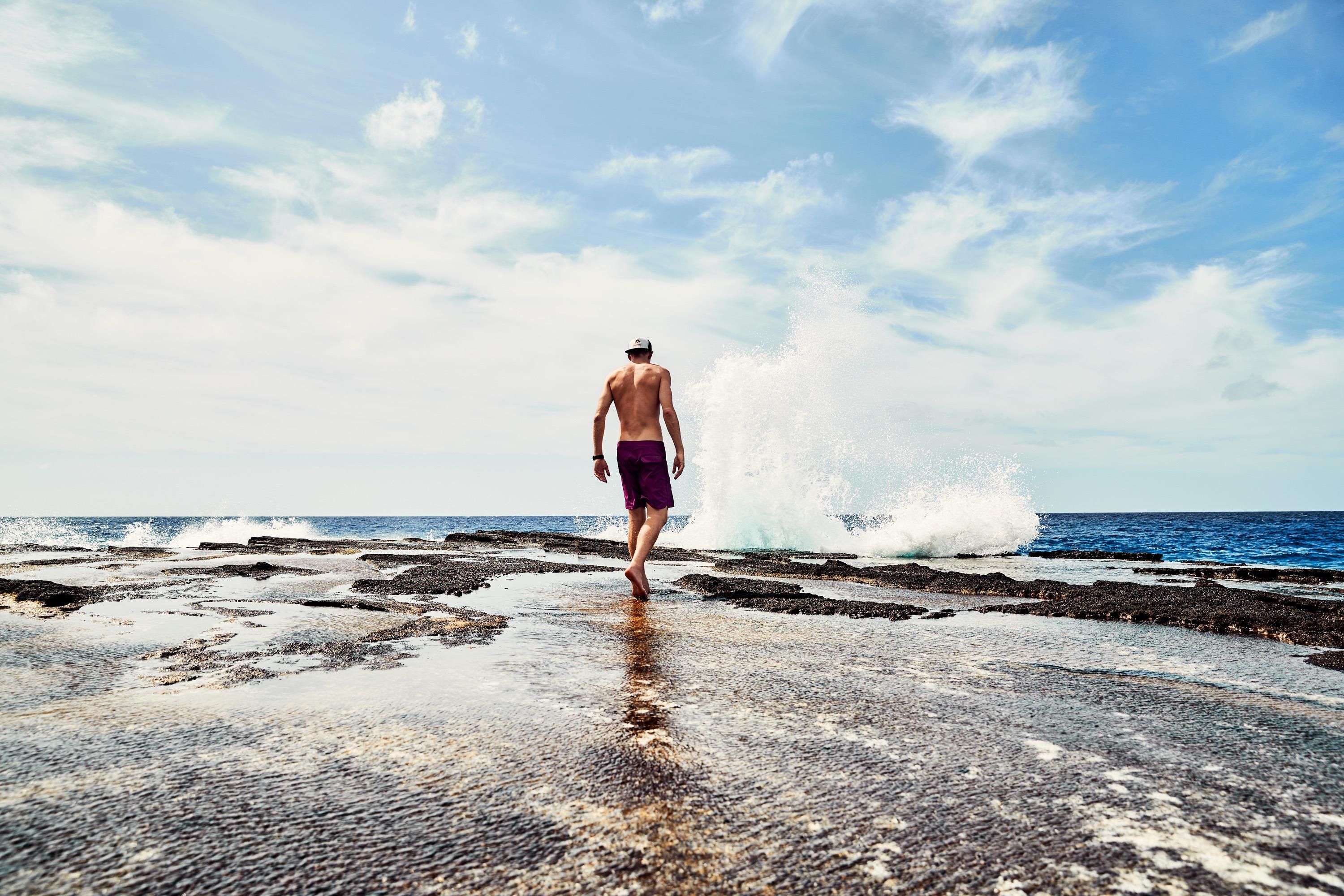

TRI: (continued) my actions follow those values, it just gave me a lot of confidence in my ability to overcome whatever is next. Whether it's having kids or whatever life throws at me, it gives me confidence going forward because I was able to face those challenges and go through them—not try to get around them or act like they weren't there, but just own it, face it. It's my challenge. It's my unique story. There's no comparison. I think I can use that going forward, and what might be even more valuable of all is that I can maybe pass it down to other people and I can help others with it.
ALLIÉ: Yeah, I know. And that's the course, right? It's never around, above, or below—you have to go through it.
TRI: Yeah, you can't dodge it. It'll just follow you until you face it.
ALLIÉ: Yeah, non-dodgeable. Let's make that a term. I'd like to switch gears for a moment. Gabby's been by your side through all of this—from the climbs through the chaos, from Naia's first steps to Mox's first breath. What does it mean to share this journey with her? Not just as your wife, but as your partner. What does it mean to you?
TRI: I think now that it's over—you know, when I'm in it, we're just kind of going for it. But when I get to step back and really look at it, and right now, obviously being at the end of my career, it's looking back a lot and just realizing that I had it so good. Somehow she found value in pursuing this life that was about me pursuing my dream. And I think that's probably rare. I think if she wasn't feeling fulfilled in that, then I would've had to pivot and things would've gone differently. And maybe I’d feel like I had more to give, but I just feel super grateful. And we're as close as ever—even closer—as we have kids.
I know that the stresses get higher, but because of the highs and lows we've gone through, there's just no hesitance in our commitment and our next steps together or whatever it might be. It's like, we're just fully committed to this life together. It's all we know and it's all we want to know. And she carried a lot of the heavy-burden stuff that I didn't have the energy to carry—whether it was calling the doctors for me, remembering what they said, taking notes, or reminding me of things. And she never really cared about what I did on the court. She just wanted me to go out there and “do what you want to do. You enjoy it, so go do it.”
But when you come back, I don't really care if you won or lost. She cares less. So that took pressure off of me, it allowed me to play free and just do it for my own reasons and then come back and be home. And then also, I got to have a kid while having a career as well because she's holding it down. And so it's cool, and the thing I'm most excited about now is kind of supporting her in that reverse role to whatever extent she's excited to work—which she’s really excited about right now. So it's cool. We get a little trade-off and now I kind of get to see how she did it, how to return the favor, and hopefully do it well.
ALLIÉ: That's awesome. We know life is all about balance, but when you have a relationship like the two of you have, it’s about just keeping that balance and—
TRI: Yeah. I just feel super grateful, like I hit the jackpot.
ALLIÉ: Yeah. Well, I think you both lucked out very much to find each other. So let’s go back to you, Tri. Stepping away at 35—not because you have to, but because you choose to—what was it that gave you the clarity and the will to retire while you’re still at the top?
TRI: Just turned 36, by the way. So now I'm on the back half. But it's been a long time coming, and I feel like whatever life's energy was working to give me this clarity, it's been a slow burn. And I push through a lot—I’m very determined once I set myself a goal and I think that I'm capable of it. So I think that life realized, we're going to have to give this guy a lot to make him see the clarity and stop, which maybe if I'm not as hardheaded going forward and I learn from this, I won't need such hard lessons that life has to bring me. We'll see.
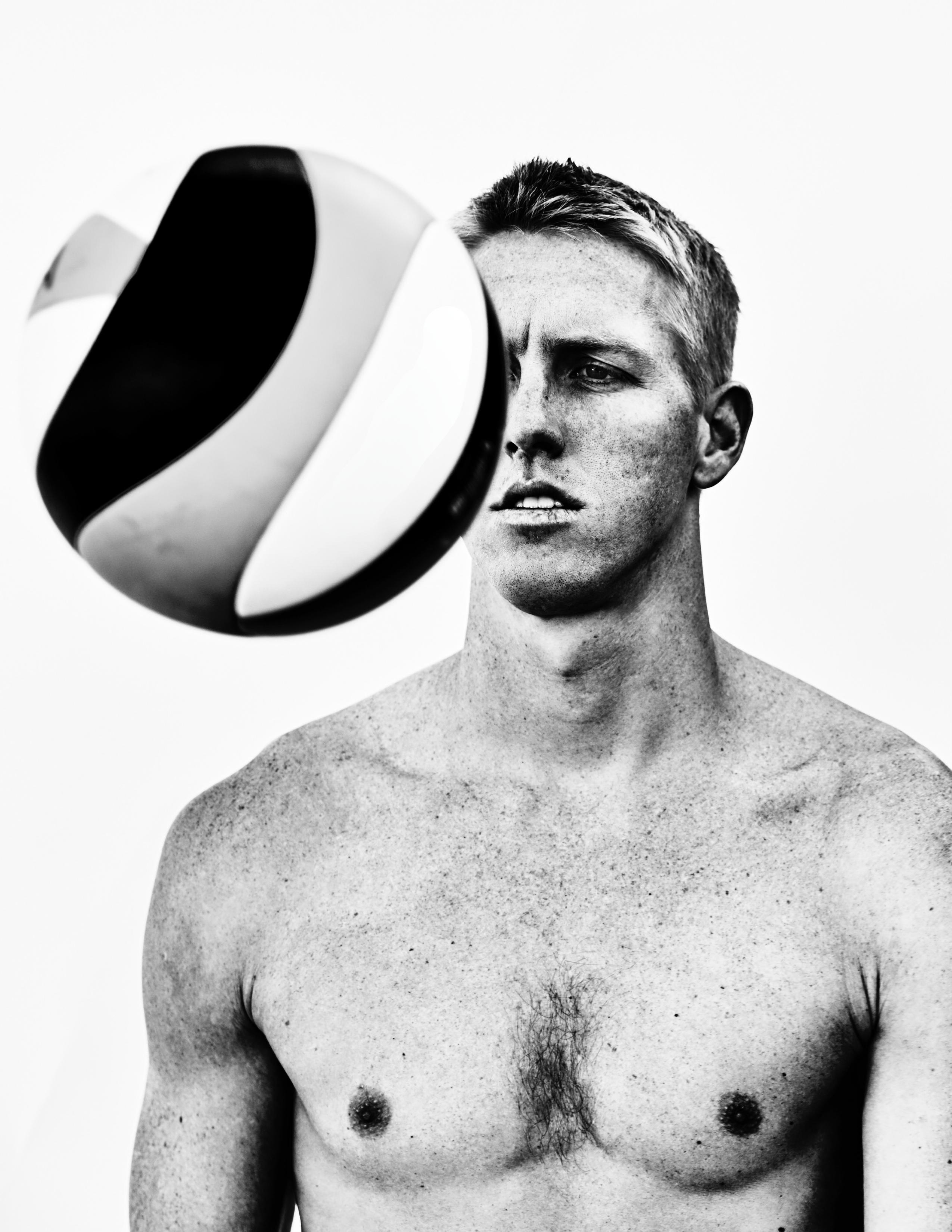

I accomplished more than I ever could've imagined, and so anything else would just be kind of selfish—I just don’t need it.
TRI: (continued) But I think it's like this respect for the body. If it keeps getting hurt, obviously I'm not being my best version of myself. I'm stressed out for long periods of time. I'm just not comfortable. I'm not being my best version of myself. And then that sacrifice started turning into not allowing me to do my best on the court. And then it's like, okay, now I'm just selfishly doing this. It's not helping my family. I'm not necessarily going to achieve these dreams if the body's not on board.
The family is fully committed to it, but it's my responsibility. Them not telling me it’s time to stop puts it on me. It's my responsibility to know when to stop and what's best. And just realizing that the body’s good—it just kind of gave it. In terms of competing at the level I like to compete, the body gave me all it could for that particular style of training. And then the family gave me all the time I needed as well.
So, there just wasn't much else to gain and I felt like going forward is kind of just a little bit selfish, because we can create more opportunities for Gabby and I can be there more for the family. But also, it's almost like an egotistical chase for more accolades and success when life's clearly telling me, hey, it's time to shift. So it's just a matter of listening.
But there are so many signs now, and I have done enough self-work to realize it is just time. I can hear the messages, I can hear the signs, I know that I'm good. I accomplished more than I ever could've imagined, and so anything else would just be kind of selfish, it feels like, and I just don't need it. Like, let's move on. We don't need to beat a dead horse, as they say.
ALLIÉ: I just think that speaks volumes about you—not only as an athlete, but as a person, as a father, as a husband. How does it feel to reclaim your narrative on your own terms? Because so many people go and go and go, and then it’s like “uhh,” but you’re just saying, no—it’s my choice. How does that feel?
TRI: Yeah, it does feel good. I definitely feel a sense of relief and excitement knowing that I took the time to think about it and give myself the opportunity, at least, to step out on my terms. Because I was able to do that, now I get to make an announcement, I get to spend the month on my gratitude tour—I’m calling it My Last Few Weeks—just thinking back and being grateful and sending messages of thanks to whoever I can. And I get to enjoy it and I get to celebrate the end of this.
Because I chose to do it early enough, it wasn’t forcing the sport to keep sending me out. And then, you know, the writing's on the wall and people can see like, what are you doing? So, it feels good and it feels like another move where I am doing the right thing, not necessarily the thing I 100% want to do, it's just the right thing, which doesn't always feel good. Like, it's hard for me to retire and see everyone else continue and whatnot, but I know it's the right thing because I've done the self-work and I know that I want to live a life of following those values of mine.
ALLIÉ: So awesome, Tri. Just a couple more questions. Now that the jersey is coming off, who is Tri now without the sport, the stats, or the sand? Who is Tri?
Exclusive Interview with Tri Bourne https://awarenow.us/podcast/the-final-serve




TRI: Yeah, it’s a good question. I'm definitely in a state of open-mindedness. I don't necessarily want to force that definition or try to define who I am, but continue to just live a life of my values and observe who I am outside of volleyball rather than trying to force it and control it. There are so many of these lessons that I learned in sport that I know are going to translate and have given me this confidence.
I don't know why I'm confident, I don't know what I'm going to do, but I'm confident in my ability to adapt and figure it out. But I know that I’ve got to be patient and I’ve got to just let it come to me and take the time to let the muddy water settle and kind of meditate on it. But it's a cool feeling too because for the first time I'm not going to be a volleyball player—I'm only going to be a man of my values, which is family and all that. So it'll be a good headspace to be in, I think, if I can really be present, which takes a little bit of work.
ALLIÉ: Yeah, it does—especially since you've been so regimented for so long to say, “this is my next, this is my next.” But it's not your next, it's your now. What is your now? And you have full control of that now.
So we looked at now—looking forward—how do you hope those kiddos, Naia and Mox, will one day tell the story of the man you became after the game? What do you want them to say of you?
TRI: I think my best version of parenting is kind of like sport—it’s me just being present. That's when my best version of myself comes out in sport, and so I kind of translate that into life and especially parenting. If I can be there, giving them my attention, I trust myself to tell them the right things, to do the right things. I don't know what those are all going to be, but I think if they're looking back and saying that, “he was just there for us, present, and he gave us his attention”—that's my best chance of them really loving how I raised them. ∎





Santia Deck doesn’t just break records—she breaks barriers, builds businesses, and redefines what it means to be a modern athlete. From her days as a collegiate track star to becoming the highest-paid woman in professional football, and now a founder, author, and advocate, her journey is as dynamic as it is disruptive. In this conversation, we talk about what sports taught her, what success means now, and how she’s using her platform to create space for other women to rise.
ALLIÉ: Let’s start here, Santia. Before the contracts, the companies, and the millions of followers—there was a girl on the track who wanted to prove something.
SANTIA: Absolutely.
ALLIÉ: When you look back now at that moment—at that girl—what do you think sports unlocked in you that changed






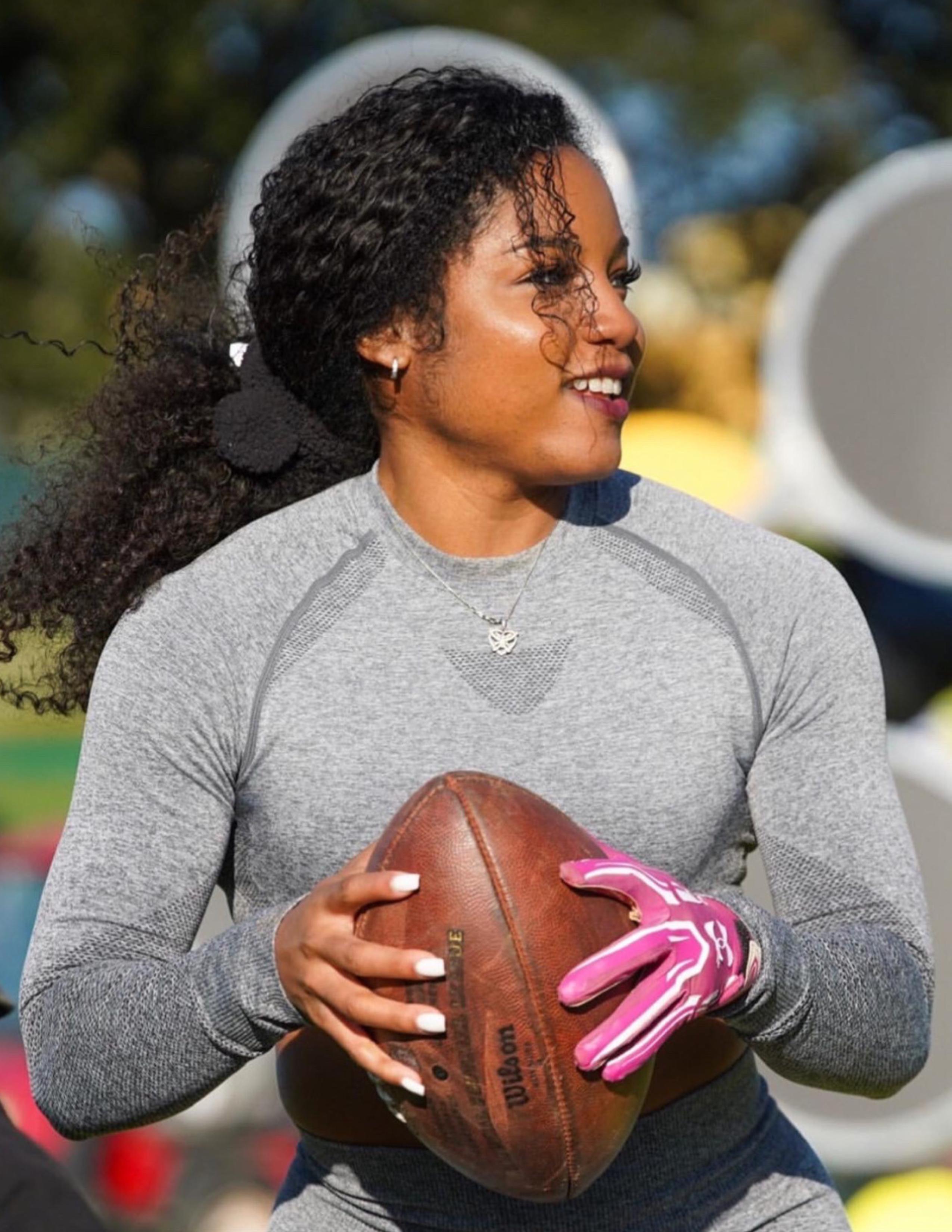

“That ‘do or die’ mentality from sports carried over into my entrepreneurial life and built this relentlessness in me.”
SANTIA: I love that question. I’d say it gave me the ability to persevere, to handle trials and conflict, to work within a team, to understand leadership, and to sometimes put other people’s needs ahead of my own. It taught me humility, too. I owe so much to that little girl who started at five—not knowing what world she was stepping into. All I knew was I wanted to be as fast as a cheetah. I never imagined it would lead me here today. I’m just grateful.
ALLIÉ: And that’s a big word—humility. Sports is certainly steeped in it.
SANTIA: Absolutely.
ALLIÉ: You’ve broken records, launched brands, and built platforms. But I imagine some of the most important things you’ve built came from moments no one saw. So, when it comes to your character, Santia, what did being an athlete build in you—specifically you?
SANTIA: Wow. These are great questions. I think my journey through sports was… unique. I was very good— sometimes maybe too much so—because I was laser-focused on my end goal. Back then, that goal was to be an Olympian. If something didn’t align with that, it was a distraction, and I cut it out. I even ended friendships in high school because I felt they were pulling me away from the Olympics.
That focus became one of my strongest traits, and it’s still with me today. If I have a goal, that’s where all my attention goes. Anything outside of that just isn’t a priority, and if I have to cut it off, I will. I was also the kind of kid who didn’t understand procrastination—my mom loved that. I knew that if I wanted to go outside and play with my friends, I had to get my work done. Sometimes I’d work weeks ahead just so I could enjoy that time without worrying about homework. I was always doing extra, studying harder, and making sure every assignment was finished early.
There’s a good and bad side to that. The bad side is not knowing when to stop—when to tell myself, “You’ve done enough.” I’m always looking at the goal. But in business, that drive has been a huge asset. If I want something, I’ll find a way to get it, no matter what it takes. That “do or die” mentality from sports carried over into my entrepreneurial life and built this relentlessness in me. I understand what it takes to reach a goal, and I’ll do it—even if it comes at a cost. But I’ve learned rest is important too. My husband has been a big influence there. He’s taught me to breathe, unwind, recover, and then apply what I’ve learned before jumping back in. As entrepreneurs—especially women entrepreneurs —I think we often feel like we have to prove ourselves by doing more and more until we burn out. I’ve burned out several times, both as an athlete and as a business owner.
I’ve had to go back and talk to that younger version of myself—the one who believed in going harder, faster, stronger. I tell her, “Yes, that mindset was drilled into you, but it’s okay to rest. It wasn’t okay then to ignore it, and it’s not okay now.” Coaches rarely emphasize recovery and rest, but it’s just as important as training. Now, I make myself take walks, step away from the computer, and take a few hours off when I need to.
So, yes—I may have gone on a little rant—but what I’ve really carried from sports is that relentlessness, that resilience, and the ability to focus. Those are my biggest takeaways.


“The truth is, if I don’t know who you are, I can’t be a fan.”
ALLIÉ: I think little Santia and little Allié need to take a walk together and just relax.
SANTIA: Yeah.
ALLIÉ: Because little Allié doesn’t pay attention to all that—and she needs to listen up. Okay, let’s talk about Winning Her Way. You’re creating a space for female athletes to be seen, heard, and—big word here—valued.
SANTIA: Yes.
ALLIÉ: Valued not just as players, but as people… people with power. What fueled that mission for you? Because it’s one thing to make your own mark—but what made it important for you to help other women make theirs?
SANTIA: It actually started during an interview I did with a former NBA player. He asked me what I thought needed to change in women’s sports for it to move forward. I went straight into storytelling—because I believe it’s everything.
We all know the big names: Serena, Simone Biles, Caitlin Clark, Angel Reese. But there are so many more incredible athletes—in Nigeria, Vietnam, and all over the world—who are just as amazing, but don’t have the platform. The truth is, if I don’t know who you are, I can’t be a fan. I’m not buying your merch, I’m not coming to your games, I’m not sponsoring you—because I don’t even know you exist. You can’t have five or ten athletes carrying all of women’s sports. We need more stories, more visibility, more opportunities for people to connect with these women.
In men’s sports, you can know everything about an athlete—where they were born, their star sign, what their parents did. With women’s sports? That’s rare. Outside of Serena Williams, whose story we know thanks to a recent movie, I couldn’t tell you much about the parents of Simone Biles, Juju Watkins, Angel Reese, or Caitlin Clark. And if I can’t relate to you, if I can’t see myself in you, it’s harder to become a fan.
So I explained all this, and he just laughed and said, “Nobody cares about women’s sports.” That lit a fire in me. I thought, “Be the change you want to see.” That’s when Winning Her Way was born.
I started interviewing amazing female athletes from all over the world—different levels, different backgrounds. It grew into a platform with social media, newsletters, and a media hub, all dedicated to amplifying these voices. And it’s not just for the stars—it’s for the underdogs, the high school girls, anyone who deserves to be seen and heard.
Part of this is personal. I have a twin brother, so I saw the differences in what he got versus what I got. It never felt good. My mom did her best to shield me from it, but I still noticed—like when he could walk into a sports store and find everything he needed, while I struggled to find sports bras, supplements, or even shoes in female sizes. Those moments stick with you.
So Winning Her Way is my way of helping the next generation of girls feel seen, valued, and supported—so they know their stories matter, too.
ALLIÉ: To your point—if you want to be the change, you have to rewrite the narrative. You have to use the power of storytelling to make people feel. And I love that you’re helping female athletes navigate life beyond the field.


“I looked in the mirror and realized: I don’t completely know who I am without sports.”
SANTIA: Yes. That’s important.
ALLIÉ: Because there are identity shifts… we are so often what society sees us as, and nothing more. So—identity shifts, business moves, mental health struggles—was there a moment when you had to redefine who you were outside of sports?
SANTIA: Absolutely. One of my most painful memories was in 2022, tearing my ACL. To this day, I’m still not 100% over it. It’s a grieving process—and honestly, I don’t think athletes ever truly get over it, especially when it happens unexpectedly, without you doing anything “wrong.” When it’s out of your control, it cuts deeper.
At the time, I was at the height of my career. I was lined up for a Coca-Cola Super Bowl commercial, playing in the Super Bowl Celebrity Game, doing all these big things right as flag football was blowing up. And then—gone. It was dark. I had a shoe company, I was an influencer, I had my “plan B” ready… but I didn’t realize how much of it was still tied to being an athlete.
I looked in the mirror and realized: I don’t completely know who I am without sports. I’d been an athlete since I was five. The person I’d been my whole life was suddenly… gone. And even if you recover physically, mentally you’re never quite the same. You don’t cut as hard, you don’t move as freely—the wildness and freedom you had before is just… different.
So, I had to ask myself, “Who are you outside of this?” It took time, faith, and an incredible support system to realize: you’re more than an athlete. You’re an author, a wife, a friend, a daughter… You’re someone with a voice, with values, with purpose beyond the game.
I thought my purpose was to inspire little girls to play sports. Now, sports will always be part of me, but I see a bigger picture: financial freedom, using my voice, impacting people through my character and what I stand for. Since then, I’ve written my book More Than an Athlete, met my husband (something I never would have made time for while competing), built new friendships, and faced some truths about the wear and tear sports had put on my body. I had to ask—do I want to be able to pick up my grandkids decades from now? That meant changing how I live now.
It’s still not easy. I still cry sometimes. It really is like a death—you grieve, you adapt, and you keep going.
ALLIÉ: Yeah. And that’s such a powerful comparison—that there’s a grieving process. It’s like getting a scar. It may fade, but it’s always part of you.
SANTIA: Absolutely. When I look at my knee, I see it—and it’s a reminder. I think about the athletes who don’t have what I had—no platform, no plan B—and the mental chaos they must go through. It’s like going to war. It’s PTSD. Your brain can’t comprehend that you’re no longer under the lights, hearing your name, living that life. One day you’re an athlete, the next you’re a “regular” citizen. Nobody prepares you for that.
Exclusive Interview with Dr. Santia Deck https://awarenow.us/podcast/winning-her-way



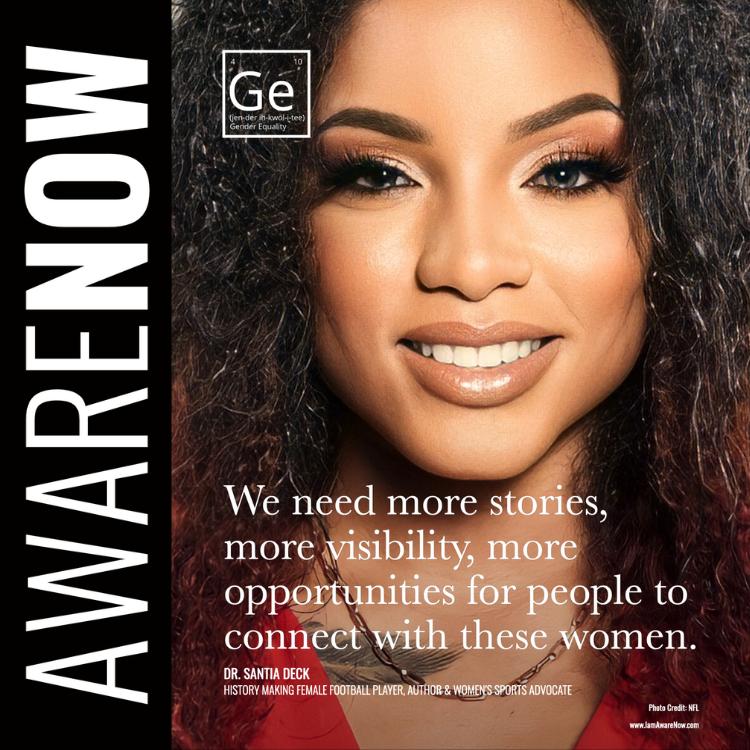
SANTIA: (continued) And that’s why I do what I do. Because honestly, I don’t know where I’d be without the support I had. The weight of it—it’s so heavy. It’s hard to even explain.
ALLIÉ: The fact that you can speak to it—you can name it, call it grief—instead of wrestling with some nameless thing… that’s powerful.
SANTIA: Yeah.
ALLIÉ: Sorry, we’re getting deep…
SANTIA: No, you’re good. This is good. It’s a conversation that needs to be had.
ALLIÉ: It does. Okay—one more thing for you today, Santia. From cleats to crowns, you’ve walked a path no one else has. We all have our own path, but yours—right now, in this season of your life—what does the “W” word, what does winning look like to you?
SANTIA: That definition has changed a lot for me over the last five to ten years. For me now, winning is about impact —how much of a difference you can make in the world.
In sports, your impact used to be physical. Now, it’s about finding other ways to create that same level of influence. For me, that means helping one million athletes build their brands, understand financial literacy, and create a legacy off the field—so they have a plan B and aren’t lost when the game ends.
I also want to help take women’s sports from $1 billion to $100 billion. I know—it sounds crazy. But if the most powerful leaders in women’s sports came together and pooled our resources, I truly believe it’s possible. I hope to be a small wave in that ocean—while also making sure athletes know who they are, what their purpose is, and that they’re more than an athlete. I want them to feel seen, heard, and understood. To realize they have the power to impact more people than they can imagine—and that their worth isn’t in stats, points, or touchdowns. It’s in who they impact and how they change the world. ∎





Aaron Taylor is a College Football Hall of Famer, Super Bowl champion, and one of the most respected voices in the game. A two-time All-American at Notre Dame and Lombardi Award winner, he went on to play in the NFL before injuries ended his career early. But Aaron’s most powerful work began off the field—becoming an advocate for mental health and redefining what strength looks like beyond the helmet and pads.
ALLIÉ: Let’s start here—with me admitting the truth: I’ve never won a Super Bowl. Most people haven’t. You, my friend, have. So, take me back to that moment. What did it actually feel like to reach the peak of what so many people dream about?
AARON: That’s a great question. The simple answer? It felt weird. Surreal. Unlike anything I had ever experienced. I started playing sports when I was six or seven—officially, anyway. I’d been playing in the backyard since I was probably two. But I had never won a championship at that level. I’d won high school championships. We’d finished as high as number two in college. But every kid who plays football has that dream—posters on the wall, daydreams in





“It was the last thing I would have ever asked for, but it turned out to be the first thing that truly worked in getting me back to myself.”
For me, at 28, that moment came in the 1996 season—technically January 1997—against the New England Patriots. We had a two-touchdown lead late in the game and were in our “four-minute offense,” trying to run out the clock. I remember Brett Favre taking the snap, dropping to one knee, and with less than 30 seconds left, we knew for certain we had won. Confetti started to fall, and it was like a surreal slow-motion montage of everything I’d worked for: every offseason workout, every winter conditioning session, summer training, four or five knee surgeries—all of it.
It felt like standing on top of Mount Everest. That was it. We did it. No next week. No “one step closer.” Just… done. NFL Films even caught me pirouetting through the confetti because I instantly became a little kid again. Ironically, much of my professional career hadn’t been joyful—it was work, pain, and stress. I’d lost the intrinsic joy I’d had as a kid. But for those brief 30 to 45 seconds, all of that melted away. I was that eight-year-old boy again, living the manifestation of his childhood dream.
ALLIÉ: Thank you for sharing that. I felt every detail right along with you. I imagine that after a moment like that, there must have been a strange kind of silence—when the noise fades, when the cameras stop flashing. They say when you’re on top, there’s only one way to go. So when you think back to after the win, Aaron, what was a moment when things began to slide? Because we can’t stay in that euphoric space forever.
AARON: It’s interesting—the greatest silence I felt after the Super Bowl was the silence of my girlfriend, watching me receive the phone number of another woman right in front of her because I was so intoxicated. I can say that now with a smile—and even a little joy—only because I was a glorious, beautiful train wreck. It certainly wasn’t one of my proudest moments, but it represented just how far away from myself I had drifted.
The NFL doesn’t require you to live that way, but it certainly invites it. I wasn’t disciplined or strong enough to resist those temptations. Thankfully, I didn’t cross even more lines or take it further than it already had gone. But that moment was emblematic of what would eventually become my fall from grace—when I shut it all down completely.
When you retire from the NFL—or from anything where you’re part of an elite unit—there aren’t many people on the planet who know what you know or can do what you do. You have this rare skill set, you’re compensated extremely well, and you love what you do. When all of that goes poof in an instant, you’re left in a vacuum you’ve never experienced before. For the first time in my life, I felt insecure, unsure of what was next.
The football world is highly cadenced—nothing is planned further than three months out, maybe six at most. Suddenly, I had no idea what was coming. At 28, being “all grown up” felt harrowing. So, I did what many respectable, “successful” people do—I started drinking a lot of Wild Turkey, five or six nights a week, trying to fill the void.
I was hugely depressed. I had no sense of purpose, no identity. My income stream was gone. I’d lost my community— the locker room. And without that, I didn’t feel I had a reason to get out of bed. I floundered. I tried to recreate what I’d lost in all kinds of ways, but here’s the truth: when we go from Point A to Point B in life, transition requires transformation. We have to become something different than we were before. And that isn’t always fun, and it’s not always easy.
For me, the turning point came when I hit my own version of rock bottom—failed relationship number 277. That was my opportunity to go inward, to rip my chest open, to really examine what was driving my poor decision-making. That process slowly helped me start making my way back to the path I’m on now—or at least closer to it. It was the last thing I would have ever asked for, but it turned out to be the first thing that truly worked in getting me back to myself.
ALLIÉ: Wow. What a journey. And to your point, to be this in one instant—and then, in the very next, not at all—that’s a hard reconciliation. Your identity, your purpose—or the sudden lack thereof—had been something you’d never had to go looking for before. It was always there. You’d had a career most people would define as the pinnacle of success. But sometimes, the moments that define us don’t look like success at all. They look messy and scattered. They’re quieter, far more complicated. Could you talk for a moment, Aaron, about one of those moments—one of those invisible lows—you rose from?
AARON: Man, there are so many. But the easiest one that comes to mind is the moment I decided to give up drugs and alcohol. Looking back, I didn’t drink or use because of the way it made me feel—though that’s what I thought at the time. I drank and used because of the way it prevented me from feeling.
I come from a long line of alcoholics on my father’s side. Addiction runs in my family. We like what we like, and there’s no middle ground—no gray area. It’s all or nothing. In recovery, they say, “One is too many, and a thousand is never enough.” That was certainly true for me—not just with drugs and alcohol, but with food, bread, sugar, Netflix… anything. I like what I like.
I’d mentioned that failed relationship. In that mess, we tried the on-again-off-again thing, but it was more of an emotional hostage situation than a relationship—probably for both of us. She had cheated on me with her ex-fiancé, and I was the rebound guy. We were both in bad places. At one point, she said she thought she had a drinking problem, so I took her to a meeting at a church and dropped her off. The women there came out, hugged her, and took her in. I remember thinking, Yeah, good cover story.
About a week later, she called and said, “Hey, just wanted to thank you for taking me to the meeting. I’m an alcoholic, and I’m going to try recovery. I’m doing this for me. And… I’ll be honest—this will probably be the last time we speak. But there’s one more thing I want you to know.”
I said, “Yeah? What’s that?”
She said, “You and I drink and use the same.”
Allié, the deafening silence that followed those words changed the course of my life forever. I heard her. And in that instant, every piece of my life—the doubts, the questions, the masks, the charade, the pretending, the desperate hope that no one would find me out, the imposter syndrome, the constant management of my image—just fell away. That sentence stuck with me. It rang in my ears.
The next day, I went to the gym and sat on a treadmill talking to a mutual friend. I told her about the conversation, and she said, “You know, my husband used to go to a recovery meeting up on the hill in our neighborhood. If you’re interested, I can give you his number.”
Now, my first thought was, Go talk to strangers? I just won a Super Bowl. I’m on TV right now. I’m an NFL guy—I’m not walking into a meeting full of people who live under park benches drinking out of paper bags. But for whatever reason, I said, “Okay.”
That was Monday. I called him Tuesday. He invited me to his garage—heaven, as it turned out. That garage became the place where I learned how to be human again. It’s where I dropped the facade, learned how to be Aaron again, and became a good teammate again—to myself, to my community, to my friends, to my employers. It’s where I let go of the lie, got honest, became willing, made amends, and started cleaning up the wreckage of my life. Some moments, some phone calls, matter more than others. Looking back, that one quiet moment didn’t look like much from the outside. But everything that came after it changed everything.
I’m grateful for all the pain I had to go through to earn the opportunity to walk into that garage. I’m grateful for those guys who laughed at me—but laughed with me—when I introduced myself by saying, “Yeah, my name’s Aaron, and I don’t think I have a drinking problem, but I’m here to explore it.” And they said, “Yeah, man, that’s new. Sit down.” It was that kind of, Sit down, rook. We got this. We’re the vets in this room. You’ve got two ears and one mouth. Shut your mouth, and use your ears. And keep coming back.
And I did. I owe everything I have in my life today to that. I’ve got a life I wouldn’t trade anything for. If you gave me a magic wand and told me I could change my job, my house, where I live, my kids, my looks—anything—I wouldn’t change a thing. Because everything I have is a gift. It’s all a blessing. My wife and kids might not always say that’s true, but in my heart of hearts, that’s how I feel. That moment was a turning point I will never forget.
“The truth is, we don’t see the world the way it is. We see it the way we are.”
ALLIÉ: I think it’s really beautiful to say that such a degree of grace can be found in a garage. You know, Aaron, you and I have come from different worlds, and yet they’re the same in one regard: strength. Strength that was all about grit, about wins, about pushing through at all costs. Perhaps you’re like I am—the older I get, the more I’ve realized that kind of strength can’t carry you forever. So, my question for you now is this: what does strength look like for you today? Not the NFL version, but the kind that gets you through an ordinary Friday. What is strength to you now?
AARON: Give me a second… I’m gonna find this quote someone sent me because it’s so dang good and it sums up exactly what I’m about to say: “The problem is not that there are problems. The problem is expecting otherwise and thinking that having problems is a problem.” —Theodore Rubin.
The Buddhists like to say that pain is inevitable, but suffering is optional. And for me, the suffering in my life comes when I’m unwilling to accept things as they are—when I want them to be different. When I want my wife to act a certain way. When I expect my kids to follow every instruction perfectly. When the reds, the blues, the purples— whoever it is in the world—don’t line up with my preferences, that’s when I’m the most anxious. That’s when I suffer. When I’m able to let things go and let the world be what it is, I’m good.
Being a college football analyst for CBS Sports is a long season—it’s a grind. But I’m wired for that. I like it hot and intense, like a meteor—boom! But I also need a carrot at the end of the stick. For many years, that carrot was heading down to Baja. I love the area north of Cabo—it’s remote, quiet.
One morning, I was on the beach meditating. The sun was rising behind me over the Sierra Lagunas, painting the sky pink and orange. Out front, the ocean was alive—whales spouting so close it felt like you could walk across their backs. It was idyllic, serene.
And then—out of nowhere—I see this one guy walking along the beach with about ten dogs. Turns out he rescues them, which is a big deal in Baja where spaying and neutering aren’t common. But these dogs? They were unruly. Barking like crazy. And here I am, all Zen, and this dude is wrecking my serenity.
So I’m sitting there, watching him, thinking all kinds of thoughts… and I start getting tight. Irritated. Two or three minutes into this, I catch myself and think, Oh my God. This is what I do. I’m literally surrounded by beauty and peace, and I’m zooming in on this tiny speck of negativity. That realization hit me like a brick: I don’t see the world the way it is—I see it the way I am.
Both things were true in that moment—serenity, sunrise, whales, meditation… and a man rescuing dogs. But the world I chose to live in for those few minutes was the negative one—focused on the interruption instead of the blessing. I wasn’t present.
So now, whenever I get too full of myself—caught up in politics, what’s happening in the world, my neighbors, the this and the that—I try to remember that story. I ask myself, How can I shift my focus? What else is true right now?
When my wife wants something from me but doesn’t verbalize it—God bless her soul—and I’m feeling frustrated, I try to pause and remember all the things I love about her. And in that moment, those little pet peeves that come with a 16-year marriage just don’t carry the same weight they used to.
The truth is, we don’t see the world the way it is. We see it the way we are. That’s why it’s critical to be intentional about where we place our focus and attention—and therefore our time and effort. Because when we control where our focus, attention, time, and effort go, we give ourselves the power to change our fate.
ALLIÉ: I love that—and I love how you just said, What else is true about this moment? What else is true about my wife? What else is true here in the serenity on the beach? Because there were so many other things that were true— not just the dogs. That’s powerful. I feel like we’re already talking about some deep stuff, but I want to go even deeper.


ALLIÉ: (continued) Let’s talk about something like anger. And now, this is me as a woman saying this, but I feel like— society in general—a lot of men use anger as a socially acceptable mask for everything: sadness, fear, vulnerability. Has that ever been true for you?
AARON: Has it ever not been true for me? I think the truest part about that is the awakening to that dynamic. For me, when I’m afraid… when I’m scared… when I feel uncertainty… when I’m sad—I don’t like those feelings. They make me feel vulnerable. And I’ve been hurt in my life when I’ve felt vulnerable. You know when I don’t feel vulnerable? When I’m big. Mad. Angry. The big guy.
I think a lot of men either watch, learn, or just figure out that anger is a safety valve—a mechanism. I, like many people, absolutely default to anger. The first thing I actually feel might be fear or sadness, but the first thing I show is anger. Because when I’m angry, I feel strong and powerful. I’ve got the ax in my hands and I’m ready to swing. When I’m afraid, I feel weak—and who wants to feel that way?
It’s a process. Especially knowing how our brains work when we’re in a fear state—when cortisol or adrenaline kicks in and fight-or-flight takes over. Those chemicals take 15 to 20 minutes to process. And if we reinforce them with more negative thoughts, we can turn a molehill into a mountain in no time.
Take road rage, for example. Somebody cuts me off in traffic—this is what I do: I start playing it out in my head. What if I got out of the car at the next light and said this, and then he said that… And before I know it, I’m six miles down the road, having a full-blown argument in my head about something that’s never going to happen.
But here’s the truth: that driver cutting me off isn’t just about traffic. It’s about the times in my life when I’ve felt disrespected in ways that were much deeper and much darker. When I was sexually abused. When I was physically violated. When I was abandoned. I hated how that felt.
So, no—this guy in traffic isn’t putting his hands down my pants. But my brain, this giant association machine, recognizes that feeling and says, We know this feeling. We don’t like it. We need to protect you from it. That’s what being “triggered” is—something small that reminds us of a bigger danger our brain never forgot. It’s survival instinct. We don’t want the saber-toothed tiger jumping out of the bushes, so when we hear bushes rustling, we run. The trick is having a plan to respond to our triggers instead of just reacting to them.
I’m as guilty as anyone of using anger to mask my true emotions. And I’ll take it one step further, Allié—I’m the lovable big guy. I don’t want to come across like a jerk, so instead of being openly angry, I go passive-aggressive. I get sarcastic. I’ll slice you up with words and make it seem like I’m joking, but underneath there’s anger. For me, sarcasm is a warning sign. It’s been my default style of humor for years. I’m really working to correct that—to find more creative ways to be funny that don’t cut people down. Because for me, sarcasm has always been a double-edged sword. And truth be told, I’ve used it to cut a lot more than I’ve ever used it to bless.
ALLIÉ: I love that—just becoming so self-aware. For you, recognizing For me, sarcasm is this. For me, this is. And then creating from that set of knowings so we can take the appropriate action. I also love how you talked about the difference between responding and reacting. A reaction and a response are two very different things—one’s a kneejerk reflex, the other has intention behind it.
So, I’ve heard it through the grapevine that you’ve got a name for that voice inside your head—by the name of Ernie. Mine, I’ll share, is the editor… and she’s a real piece of work. So my question for you now, switching gears a bit: what do you do when Ernie is loud and relentless? What brings you back to center, Aaron?
AARON: First of all, I want to give a shout-out to Ernie. He’s got a bad rap. Granted, he’s always trying to f*ck sh*t up. He’s always trying to ruin a good thing. He never appreciates how good he’s got it. He also doesn’t have a lot of confidence, so he’s always trying to stand out and call attention to himself, just so you’ll tell him he’s a good boy… that he matters… that he’s seen. He means well, but, man—oh, man—it’s best if he stays in his room. I try to keep Ernie in his cage as much as I can because he likes to muck things up a little bit.
Ernie is my alter ego—my shadow piece. It’s the part of me I try to hide, repress, and deny… but it’s back there, pulling levers. What I’ve realized over the years is that he’s also persistent, energetic, and outgoing. There are some positive qualities to my ego—to my shadow. When I’m at my best, I try to draw on Ernie and that part of me I’ve worked so hard to stuff down.
AARON: (continued) Because whatever we repress continues to evolve and pop up. As the saying goes—whatever we resist, persists. I think I first heard that from Neale Donald Walsch in Conversations with God. When we hide, repress, or deny those shadow parts, they still find their way out. So now I’m trying to keep Ernie out in front of me— let him work for me instead of against me. And look—this may sound crazy to some people listening. I’m not saying I hear voices or talk to Ernie—it’s a metaphor. A way to describe those different parts of ourselves and the masks we wear to stay safe and navigate the world.
Here’s the thing—we all talk about “the hole” in ourselves, always looking for something to fill it so we can become whole. What I’m finding, in my current trajectory, is that what’s been missing… is me. All of me—including Ernie. This part of me that developed as a safety mechanism, as a way to navigate a challenging childhood. But just as much a part of me as Ernie is the benign, benevolent version—the one people write articles about. Ernie and Aaron are the same cat. And I think part of this journey for all of us is learning to integrate those pieces to be okay with everything we are and everything we’re not. Our wholeness is what makes us integral. That’s integrity—our thoughts, our words, our actions—all in alignment, even with the parts of us we might not want friends, neighbors, or loved ones to see.
ALLIÉ: There’s a specific word you used there—integral. Because when we think of integrity, we do need to integrate the verb of it, not just sit with the noun of it. We have to bring together these different parts and pieces of ourselves to form the whole version of who we are.
AARON: So what’s the flip side? I’m curious now—I’m going to flip this. Now we’re doing this podcast together. What’s the flip side of your editor? Is it discernment? Is it the ability to parse through information and pull out what’s helpful? What’s the positive side of the negative piece of your editor?
ALLIÉ: Yeah… I guess the editor always wants to make sure everything is done to a certain degree of excellence— and won’t have it any other way. So I have to remind her that I’m human. Allié is human. And that’s okay with me. I’ve got to convince her that it’s okay with her, too. So yeah, she can be a bitch, but most of the time we get along. And to your point—recognizing that I need her to do the work I do. But at the same time, I’ve got to remind her it’s okay not to be perfect… Because there’s no such thing.
AARON: Thank you for that.
ALLIÉ: Well, yeah—Ernie and the editor. I tell you what, we need them. We need to love them.
AARON: Yeah… they’re probably going to hook up for drinks after this.
ALLIÉ: Of course they would. Let’s talk now about showing up. Aaron, you’re showing up in very powerful ways—not just for yourself, but for so many others. A couple of examples come to mind: through Radical Hope, you’re helping young people find connection and support around mental health. And with the Joe Moore Award, you’re honoring the kind of grit and unity that doesn’t always get accolades or make headlines. So my next question is, what connects these two parts of your work? What do they say about the legacy you’re building off the field?
AARON: I think, at my core, if there’s one thing unquestionable about me, it’s my resilience. I don’t know what I did to earn it, to have it—or maybe I’m just temporarily holding it—but it’s there, and it’s always been there. Throughout my life, I’ve had people who reminded me of that, who nurtured it, who fed it when it was hungry.
I’ve lost 13 people I loved to suicide. I’ve lost a couple dozen more to deaths of despair—both from my football circles and from recovery. I don’t know why they didn’t have that same resilience. I’m just grateful that I do. And my life hasn’t been easy—not for me, not for any of us. Part of me suspects that’s the point.
Why we’re here is to be born perfect, then encounter things that make us question that perfection. We spend our whole lives trying to work our way back—only to realize we were perfect all along. Whether we accept that or not, that’s the journey. There’s divinity in that for me.
Hope is a verb. It requires action. I’ve found ways to take action—sometimes just by telling my story, leading with vulnerability. That’s a superpower of mine. It’s like, I’ll show you mine if you show me yours—but in healthy, loving ways. So whether it’s the Joe Moore Award, Radical Hope, this podcast, or any other work I do—I just want to be a good teammate and be a meaningful part of something worthwhile. Everything I’ve ever done—my family, my sports career, my time with you right here—fits into that. When I can do that, all the other noise just falls away.
“I think about that moment—the fear, the uncertainty—and how close I was to walking away from everything that came after.”
AARON: (continued) As hard and raw as this part of me is, it’s the best part of me. It’s the most authentic part of me. But it’s not easy to get on CBS and talk college football like this. I’m grateful, though, that I can talk college football— because that gives me the platform, the visibility, and the time to talk about things that matter more, that men are more than a third-and-seven.
Hope. Resilience. Being a good teammate… I’ve had mentors who changed my life forever. Joe Moore, my offensive line coach, taught me that I always had five more in me—that no matter how hard things got, I could always do five more reps. Bill Z, my longtime mentor, gave me a roadmap for happiness and serenity—how to forgive myself and others, how to lead, how to be grateful, how to be humble in the most glorious, grandiose sense.
My high school head coach, Bob Ladouceur, taught me to believe in myself and my potential. My mom—on my first day of football practice at De La Salle—gave me one of the most important lessons of my life. We had just moved. I was a D and F student. I’d been kicked out of the house. I wasn’t on my way to being a college football Hall of Famer or Super Bowl champ—not even a high school graduate.
That first practice? I got my ass chewed out. I was going the wrong way. I didn’t know what I was doing. I’d never really played organized football. I came home in tears and told my mom, “I’m sorry. I know we moved here for this, but I can’t do it. I can’t go back.”
Leading up to that, she had asked me what I wanted to do with my life. I’d said, “I don’t know… play pro football,” but I didn’t really believe it. That day, she looked at me and said, “You’ve got to figure out if what you want is worth the price you might have to pay for it. If the answer is yes, you have to find a way to get up and go to practice. If the answer is no, that’s okay—but you have to be honest with yourself.” Then she shut the door.
I wish you could have seen me sitting there on the edge of that bed, Allié. I didn’t know how I was going to go back… but I did. And I got my ass chewed again. But I made a block or two. I went back the next day, made another couple blocks. I kept going. And it turned out—I was pretty damn good at football. I just didn’t know it yet.
I think about that moment—the fear, the uncertainty—and how close I was to walking away from everything that came after. I had no idea what was possible, what I was capable of, the people I’d meet, the experiences I’d have, the money I’d make, the lives I’d touch, the people who’d touch mine. None of it. But I had hope. And I want other people to have that, too.
I want the world to know there are things each of us can do—in as little as five minutes—that can help us feel better and perform better in the moments that matter most. They don’t cost a thing. They just require willingness, honesty, and a little elbow grease. And my observation? When I’ve done that—and when others have, too—somehow, some way, things get better. And I ask you, Allié… how does it get better than that?
ALLIÉ: That’s a big word. It’s one of my favorites with just four letters—hope. Because sometimes you feel like you have nothing… but at the end of the day, you can always have hope. No one can take that away.
AARON: I’ll say this about hope—optimism is the belief that somehow things will get better. Hope is the belief that there are things we can do to make things better. There’s a big difference. Optimism is about desire—it relies on things happening outside our control. Hope? Hope’s a verb. It’s about action. It’s believing there are steps we can take to make our lives better—and that puts the ball back in our court. That’s true for everybody.
ALLIÉ: One hundred percent. Because we do always have the opportunity to remake, to course-correct. As long as we’re alive—if there’s still a chance, there’s still hope. And I want to shift one more time…
AARON: Oh, here we go. You want to go darker than this? Damn, Allié.
ALLIÉ: Okay, let’s go to the other side of it. Recently you were featured in a very powerful episode of Remade with Koby Stevens and Villa Licci. I want to talk that and specifically, what does the word remade mean to you?
AARON: That was a cool moment—the whole day, really—and how I got connected with Bill McCullough, the producer. He knows a good buddy of mine, Lonnie Paxton. Lonnie’s got his fingers in all kinds of things. We both played in the NFL—not together—but we know a lot of the same people, we’ve worked out together. It was just this beautiful confluence of all these circles of my life—football, recovery, transformation—coming together. What remade brought up for me immediately is the idea that the power of shared experience is transformational. That moment for me was being able to share—completely different sets of circumstances, sure—but a shared human experience. No different than me and your “editor” and my “Ernie.” Your lived experience and mine may seem worlds apart—you’re female, I’m male, you’re small, I’m big, different races, different genetics, different paths. But is it really different?
To me, being remade is like when a vase breaks and is repaired with gold lines—an art form from the East. The vase is damaged, but the gold creates something new with its own unique beauty. It’s not what it was before, but it’s equally beautiful—just in a different way. Being remade is the Humpty Dumpty of humanity. We fall off the wall, shatter into pieces, and if we’re lucky, we have people around us—and the courage within ourselves—to find the gold in our lives, piece it back together, and keep moving forward.
ALLIÉ: I love that. I love it so much. Just a couple more questions—on the lighter side. If every single thing you ever did on the field disappeared, and the only thing left was how you showed up as a father, a friend, a man—what would you want people to remember about you?
AARON: That’s a really good question. And honestly, I try to live my life with that in mind. I’ve always said—when I die, if the thing I’m best known for is how I played football, then I’ve been a colossal failure.
One of my mentors, Bill Z—who I mentioned earlier—helped me understand that football is part of who I am, but not the biggest part. It’s a launch pad, a piece of the puzzle. He told me that in my fifties, everything would start to come together—just like it did for him—and that’s when I’d be able to affect the most change. Here I am at 52, finding that to be true.
My wife, my kids, my friends—they’d probably say, “At times he was difficult… but he was always worth it in the end.” And if I make it to the pearly gates—assuming God doesn’t bring up spring break in ‘92—I think He might say I was a pretty good teammate. Someone you’d want on your team. Maybe not the most talented, but someone who helped you win, helped you get more of what you wanted, and made the journey better. I hope people would remember that we laughed a lot, cried a lot, and grew together. I try to bring that into everything I do.
Right now, I’ve got four months of the year where I get to laugh, have fun, and get paid to be on scholarship talking sports on television—and my opinions don’t even have to be right. Then I’ve got the other eight months, which fund my philanthropic habit—where I get to be purposeful, feel significant, be part of a community, and do something bigger than myself.
However we each do it, I believe having income, identity, purpose, significance, and community—those are the five pillars of fulfillment. They’re a foundation for an amazing life. None of those things have anything to do with football, but all five were there when I was playing—just a little more muted than I’d have liked. Good thing I’ve been an exathlete a hell of a lot longer than I played because I’m getting the opportunity to try to flip the script there.
ALLIÉ: That is awesome. Before we wrap up today, one more thing, Aaron. Not everyone who feels lost looks lost. Sometimes you can be surrounded by love, by success—and still feel like you’re not at home in your own skin. So my last question for you today is for someone sitting in that space right now—what would you say to them? And again, not as a former pro athlete, but as someone who’s been there and made it through—what would you say?
AARON: I love the way you framed that question—that not all people who are lost look lost. My response would be this: feelings aren’t facts. The way we feel about our circumstances, our lives, or the people around us isn’t necessarily the way they actually are. That’s really important for me to remember when life is sending eight-man blitzes and I’ve only got five people to pick them up. Feelings aren’t facts.
Here’s what’s true—our thoughts are electrical signals running through complex neural pathways in our brains. Based on the type of thought we have, our brain releases chemicals. If we have good, healthy, positive thoughts, our brain releases positive chemicals, and we feel good. If we have negative, fearful, or uncertain thoughts, our brain releases chemicals accordingly—and then we start to feel afraid.
Exclusive Interview with Aaron Taylor https://awarenow.us/podcast/where-grit-meets-growth

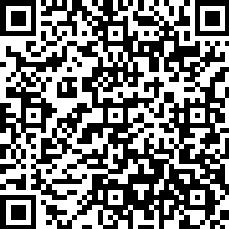


AARON: Our bodies translate those chemicals, and shortly after, that’s what we experience as emotion. Just because I think the guy cutting me off in traffic is disrespecting me doesn’t necessarily mean that’s the case. So the real question becomes: when we feel lost, how do we lash ourselves to the mast when the seas get rough? For me, there are many ways—but prayer, meditation, and service are my anchors.
When I’m at my worst, I’m usually focused outward on what everyone else is doing—but only in terms of how it affects me. That’s self-centeredness. So when I feel lost or unloved—even if I’m surrounded by love—one of the most effective ways I’ve found to flip the script is through simple acts of service.
For me, courtesy is the gateway to serenity. That can be as small as letting a car merge in front of me, giving up a parking spot, holding the door open for someone who’s way too far away, or telling them not to rush. Complimenting a stranger’s tie or pocket square. These little things get me outside of myself. And here’s what I’ve noticed—whenever I start to feel better, I can usually look back and pinpoint the moment it began: the moment I made the decision to take action, to be of service. Because in those moments, I’m reminded that I have value. That regardless of how I feel about myself or whatever messages the world has sent me, I do have something to offer.
I think, deep down, that’s what all of us are trying to figure out—on this big rock in the middle of nowhere—whether our lives have meaning, whether we matter, whether we make a difference. So if you’re out there feeling lost—if you’re losing hope but want to be reminded there are good things and good people out there—turn your focus outward. Think about what you can bring to a situation rather than what you can get from it. Practice kindness, acceptance, and courtesy. See if that starts to shift your perspective—just slightly—so that your attention is on how you do matter, how you do make a difference, how people are appreciative and grateful for exactly who you are. That’s integrity. That’s becoming the integral person you’ve always been, even if you’ve forgotten it for a while.
Courtesy is the gateway to serenity. So if you’re struggling, look outside yourself. Find someone to help—and in doing so, you’ll be reminded of who the hell you’ve been all along. ∎




DR. LEEDA RASHID ALAMEDA HEALTH SYSTEM HOSPITALIST
BY DR. LEEDA RASHID
On July 22, 2025, the San Francisco County Board of Supervisors introduced a resolution officially recognizing Afghan American Heritage Month. The San Francisco Bay Area has been home to me since my family arrived here as refugees in 1986. I took my first walk along the ocean at China Beach. I ate my first hot dog here. I fell in love with San Francisco.
I grew up just across the Bay in Alameda, less famous than its neighboring city, but just as formative. Alameda, along with the cities of Santa Clara, Sacramento, San Diego, Los Angeles, and others, has also adopted or is planning to adopt similar resolutions to honor the Afghan men and women who have made California their home.
What I know about my Afghan-American community is this: most of us came to the U.S. as refugees, many fleeing the Soviet-Afghan war of the '80s, the civil war of the '90s, or more recently, the Taliban’s return to power. We weren’t just escaping war, we were fleeing persecution, instability, and the erasure of our futures. Building a life here hasn’t been easy. It’s taken immense effort, moments of deep loneliness, and the quiet, often invisible work of becoming “Afghan-American.”
It's an interesting journey to have a hyphenated identity, but aren't we all split in some form or another? Navigating the playground of identity, who we were, who we are, and who we wish to be isn't a story of this community alone. It's indeed the American journey. It's the single mom with an aspiring singing career. It's the young cashier with his PhD on the horizon. It's the entrepreneur caregiving for a sick parent at home. It's all of us, finding ourselves in the greatest democratic experiment in the history of mankind and doing the work to keep its delicate balance. America is not a monolith, and when we forget this truth, we chip away at the very essence of what it means to be a democracy; a nation strengthened, not divided, by its many ‘Hyphen-American’ identities.
I urge you to visit an Afghan restaurant if you ever get the chance. Say hello to the owner or the server. You’ll meet some of the kindest, most hard-working, hospitable, and genuinely funny people you’ve ever encountered and you’ll eat the best rice and kabob on the planet. Coupling the survival instinct with the opportunity, you will see that besides serving great Kabob many Afghans you meet have moved on to become lawyers, engineers, doctors, policy makers, teachers, and good neighbors. We are known for this resilience internationally, and we have shaped the California around us with it.
Over the years, I’ve left California for school, for work, for love, even just to get away. And yet, I’ve always come back. Despite its frustrations, its imperfections and maybe because of them, it’s still home. Seeing this acknowledgment hit me harder than I would have expected, especially since I’m not sure I would’ve said I needed it if someone had asked. But it turns out I did. There’s something profoundly moving about feeling seen, truly seen, in the place you’ve called home. I think that’s something we can all understand. Today, as I reflect on what this recognition means to me, I’m reminded of why I keep returning: because California, in all its complexity, still makes space for stories like mine… that’s something to celebrate.
In a political climate where we’re too often pulled into fear-driven identity politics; where we’re told to see our neighbors as threats and “the other” as the problem, it feels especially powerful, even courageous, for these counties to take this step. It’s as if someone is quietly saying aloud what many of us already know to be true: that America’s strength lies in its diversity, in the beautiful, complicated tapestry of its immigrant stories.
In 1986, my father, a professor of law, a judge, and a political refugee with everything at stake had to choose between resettling in Saudi Arabia, Kuwait, Australia, or the United States. He didn’t hesitate. With his wife and four children, he boarded a plane to America with no debate and no doubt. He believed in this country then, and I still believe in it now. ∎
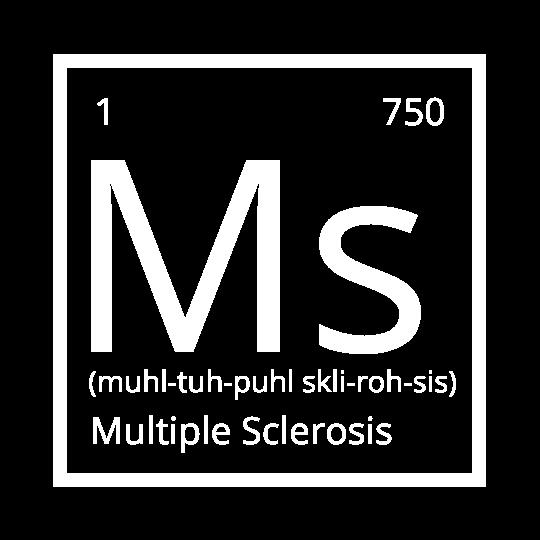

We sail all the time, but we can’t control the wind. All we can do is adjust our sails.
ZAC SINGER MS WARRIOR & FOUNDER OF SAIL MS
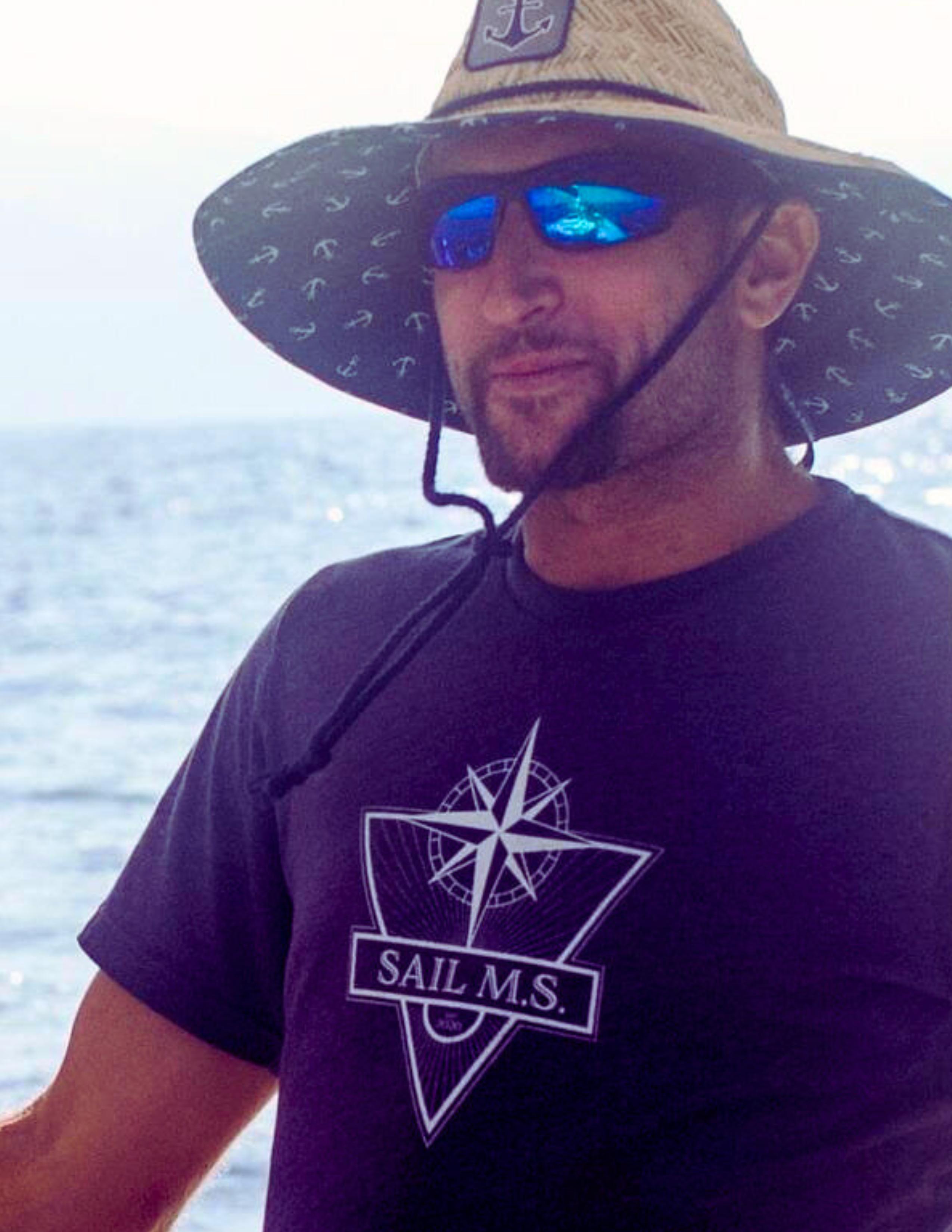

Captain Zachary "Zac" Singer is the founder of Sail MS, a nonprofit born from his own journey with multiple sclerosis. A licensed tugboat captain with a life spent at sea, Zac transformed his diagnosis into a mission—using the power of sailing to offer freedom, connection, and healing to others with MS. Through Sail MS, he merges maritime skill with deep purpose, helping others navigate their own uncharted waters.
ALLIÉ: Zac, you've spent your life on the water commanding tugboats and navigating the unknown. After your MS diagnosis, how did the ocean become more than just your workplace? How did it become your medicine?
ZAC: Well, it really comes down to me not fully realizing how much being a sailor was a part of me. It was kind of just my world. Once I took a break from that and didn’t know if I’d ever be able to do it again, I realized it was truly part of my identity. I was in an existential crisis of sorts: Who am I? What am I doing? Where am I going? On top of that were the fears of having MS and possibly being disabled in the future—really uncharted waters. I think that’s something most people with MS go through. If you’ve worked within a team-oriented environment, like the military, there’s an added level of existential threat because you lose part of your identity along with your occupation. Over half the people diagnosed with MS stop working within five years. Whether that’s psychological or physical, I know at least in the beginning—and throughout living with MS—that the psychological aspect is the biggest battle to undertake for all of us.
ALLIÉ: Oh, agreed one hundred percent. Let’s talk about the beginnings. Starting Sail MS wasn’t just a professional pivot. It was deeply personal as someone living with MS. What was the moment you knew you had to do this—not just for yourself, but for others?
ZAC: I actually knew the minute I was diagnosed. At that exact moment, I already knew I was going to do this. I don’t know how, I don’t know why, but I had carried this idea in my head for a long time—doing something like this with different groups of people. When the MS diagnosis came, everything clicked. The puzzle pieces came together. Now, after running Sail MS for nearly five years, I know there’s real magic in it. It doesn’t even have to be sailing specifically. It has to do with bringing together a purpose-driven group, all living with a common and difficult threat. It creates a bond that’s just magical from the very beginning. People are allowed to be vulnerable with each other, and then you’re locked into a boat for seven days—about 300 square feet of living space for seven or eight people. You get to know each other very well, very quickly, and more often than not, you leave bonded in a truly special way.
ALLIÉ: Speaking of those bonds, you became close with Cisco, who joins us. Cisco, I want to hear your story. How did your experience with Sail MS create a pivot, a change, a shift in how you dealt with your own life and diagnosis?
CISCO: First off, I had no experience sailing. I never wanted to go into the ocean. I barely knew how to swim. When I connected with Zac four years ago, it forced me to face fears and obstacles at every step. It made me realize I’m capable of doing pretty much whatever I want. That’s why I’m sitting here on a balcony in Greece right now. It made me look inward to discover who I am, what I’m capable of, and strengths I didn’t know I had.



“We talked about the illusion of immortality. MS lifts that veil.”
ALLIÉ: Like you said, it helped you look inward. Not to be too punny, but the sea helped you see what was within you. And Zac, you said it’s not only about a common diagnosis, but also a common threat. That parallel is so powerful: Cisco, you had never sailed before—just like you’d never lived with MS until the diagnosis. With both, you had to figure it out.
There’s something symbolic about sailing—charting a course, adjusting to the wind, facing storms. I’d like to hear from both of you on this. Zac, if you’ll go first: how does the act of sailing reflect what it’s like to live with MS?
ZAC: It really is the best metaphor. We sail all the time, but we can’t control the wind. All we can do is adjust our sails. That drives home the fact that none of us can control what’s happening. We might think we have control, but it’s an illusion. When I was diagnosed, I went to a psychologist for six months to wrap my head around it. We talked about the illusion of immortality. MS lifts that veil. You realize, Wow, anything can happen. That’s true for everyone, but most people live under the illusion that life is predictable.
When you’re sailing, you never really know what the wind or weather will bring, or how you’ll get where you’re going. You have to flow with it. And then, on a sail trip, there’s structure: we wake up, tackle tasks together, sail four or five hours, anchor, and settle in. What’s special is the presence. On these trips, I might see someone glance at their phone for five minutes in an entire week. It’s so rare. People are really present with themselves and each other. That’s powerful, especially when living with a disease that brings so much fear and makes it hard to live in the present. That’s where the magic happens.
ALLIÉ: So it’s about the opportunity to be present with each other—that real, raw connection. Cisco, let’s come back to you. How did you see the symbolism between sailing and MS? And also—let’s be real—what made you decide to get on a boat when you couldn’t even swim?
CISCO: I’m either crazy or not very smart. The first time I met Zac, he said, “Just come down to the dock. No pressure. You don’t have to sail—just watch us leave.” It was only a ten-minute drive, so I went. Next thing I knew, I was on the boat—and loving it.
Soon I was taking my first sailing class. My instructor told me, “Be careful, Cisco. Once the ocean gets its hooks in you, it won’t let go.” He was right. When I don’t sail for a while, I don’t feel right. Even when my MS symptoms flare— tiredness, balance issues—I’d still go out because I didn’t want Zac out there alone with new people. By the end of the day, I’d be exhausted, like after a workout, but my symptoms would feel minimized.
Symbolically, there are so many parallels. As Zac said, being present is key. Out there, you’re just connected—with the people on the boat and with the ocean. There’s no motor noise, just water and wind. You feel a sense of serenity. And you know everyone is either teaching or learning, but you’re all there for each other.
ALLIÉ: I love that—everyone’s in the same boat, literally and figuratively. So, Cisco, how would you compare your relationship with MS before Sail MS versus now?
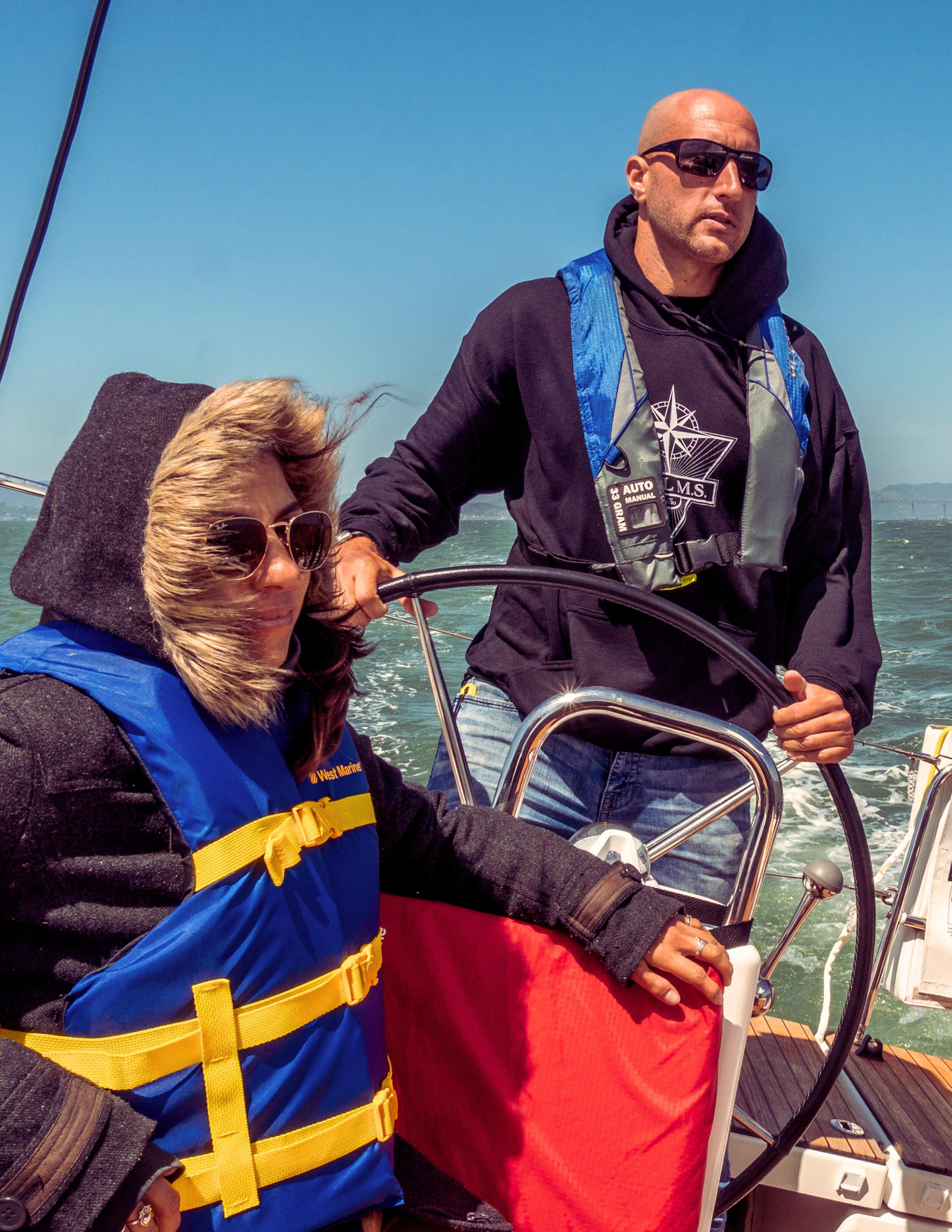

Exclusive Interview with Zac Singer https://awarenow.us/podcast/the-wind-within

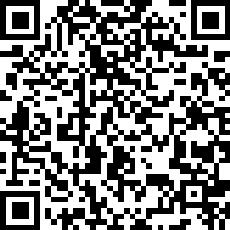


CISCO: One of my recent realizations is that MS will always be with me, and I have to work with it. Like the wind, you can’t control it—you adjust. I think of it like packing MS in my suitcase when I travel. As long as I respect it, live as healthy as I can, and slow down when I overdo it, we’re good. Before Sail MS, I read an old journal entry from about a year earlier. I had written, Maybe this is as good as it gets. That shocked me. After I met Zac and started sailing, my life flipped 180 degrees. Now I’m in Greece. The first time I came was two years ago, alone. I was scared, but I went. Sometimes you just have to take that leap of faith.
ALLIÉ: That’s awesome. Zac, we’ve heard Cisco’s transformation. What transformations do you hope others experience when they step aboard Sail MS?
ZAC: This past season, I had two newly diagnosed participants. One was a 36-year-old British Army Ranger diagnosed just three months earlier. When you get that diagnosis, you decide: victim group or fighter group. Am I going to let this dictate my life? Or am I going to fight tooth and nail?
If you’ve lived with MS for five years or more and you choose to board Sail MS, you’re automatically a fighter. People in a victim role wouldn’t choose to fly across the world and live on a sailboat with strangers for a week. For newly diagnosed participants, though, they’re still figuring out who they are. My goal is to help them see themselves in that fighter role. They’re surrounded by people who’ve already chosen that path. It solidifies their identity as warriors.
We had a woman, Patty Jean, who calls her MS “Massive Strength.” She’s lived with it for 30 years and lost her husband two years ago. She had more or less given up. Two years ago, she came with us—hesitant at first—and told me afterward it was the best experience of her life. She’s since returned for two more trips, restarted her coaching work, and reignited her life. That’s what Sail MS is about: helping people transform victimhood into victory.
ALLIÉ: I love that. You’re not just navigating boats—you’re helping people navigate life with MS. So, Zac, a personal question: when the waters get rough in your own journey, what keeps you steady?
ZAC: Breathing, first and foremost. I’ve learned how to breathe since being diagnosed, and I’m still learning. That, and the community we’ve built. Knowing those people are there for me—it’s uplifting. This community keeps me steady. ∎
Learn more about Sail MS: https://sailms.org Find & follow on Instagram: @sailingms


Every one is a part of everyone.


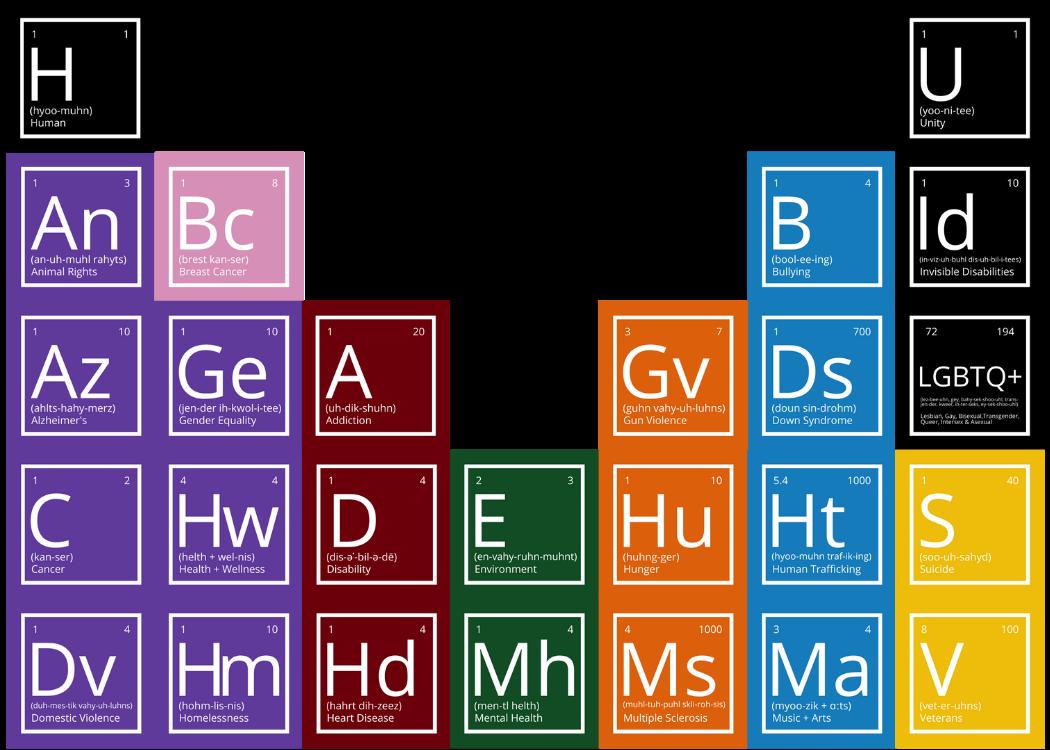

Miles to go before we sleep…
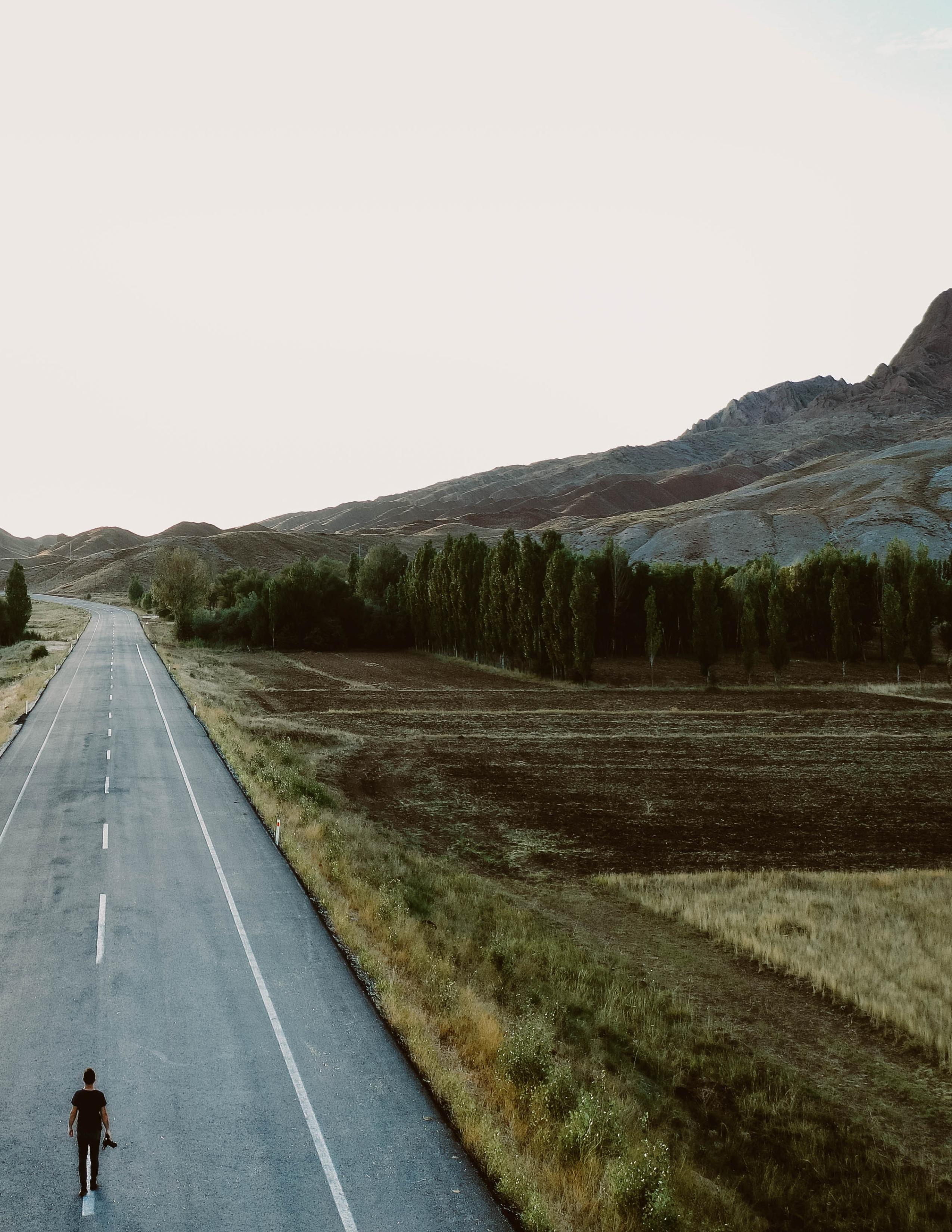



We’ve all been told to " find our voice"—but what if we were never taught how? CC Rice, a master voice and body language expert, invites us not just to speak louder, but to speak truer. In this conversation, we explore the power, pain, and possibility of what it means to reclaim the voice we were born with—and how doing so might just set us free.
ALLIÉ: As we've all heard, it's not what you say, but how you say it. We've heard this, we know this. So I would love to start here. I would love to hear you speak on how the weight of words is dependent on how they're delivered.
CC: Yeah. Well, I would honestly say it's both. It is what you say and it is how you say it, because our subconscious mind is revealing things all the time through the language that we choose. The language we choose is connected to our history, whatever image is in our mind, and how we are defining that image. However we've processed or interpreted a feeling is coming through a pathway that is as old as we are, even if it's unconscious.
And then there's the other unconscious or conscious part of it, which is pitch and placement and breath and support and the shape of the body that's creating all of those things. So my major philosophy is your body is the instrument. Your voice is its music. And so whatever the body is doing, the sound of the instrument is going to be a product of that



CC RICE MASTER VOICE AND BODY LANGUAGE
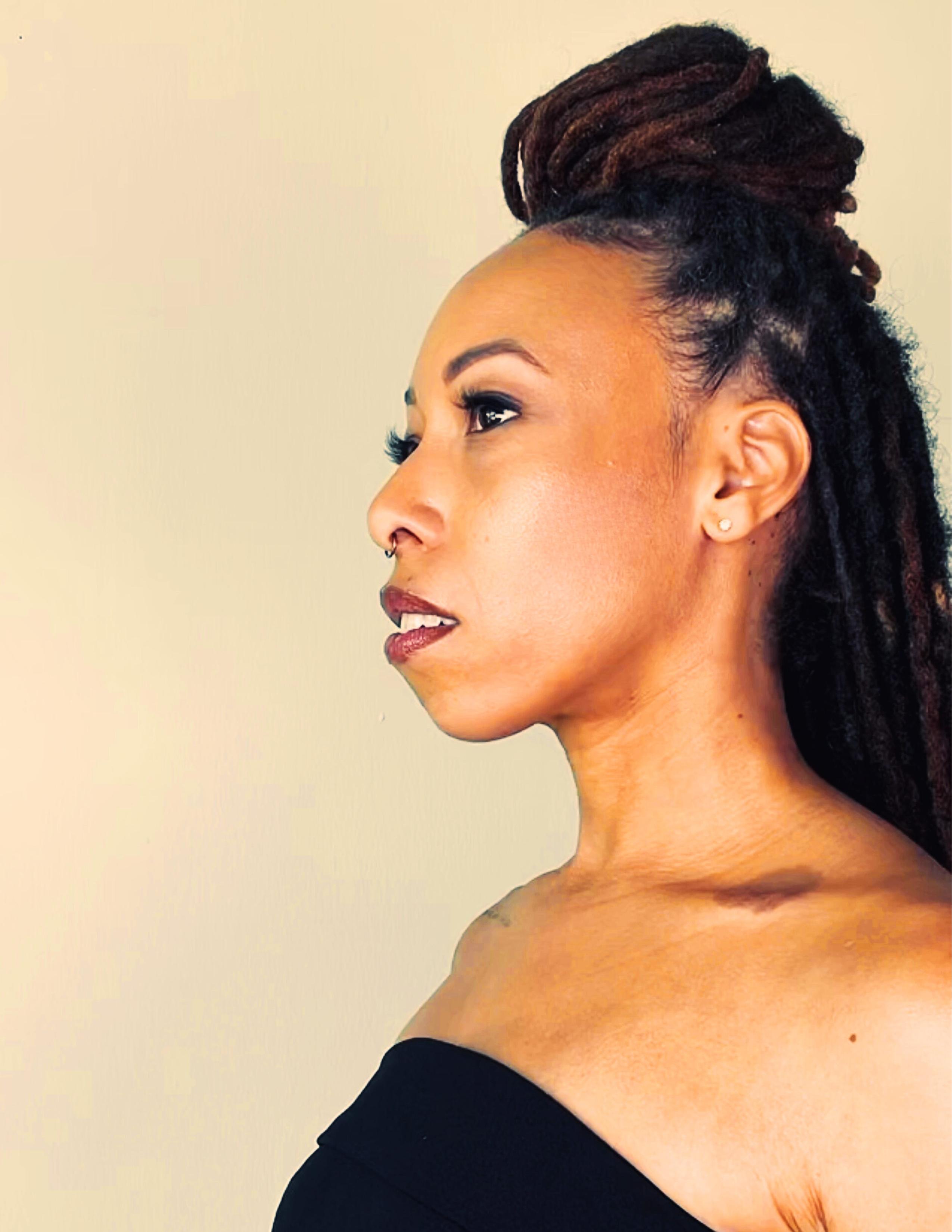

CC: (continued) And all of that is going to interact with our history and our trauma and our habits and our holdings and our stress level and our comfort level and our health. It's all going to be filtered through whatever music is being played by the voice in that moment. So it all matters. I say that a lot to my clients: everything matters. And it's really okay for things to matter if we can take ownership of what matters for us.
ALLIÉ: Yeah. Well, that's just about the most beautiful thing I've heard in response to that cliché that we all know. I will say that one thing, in terms of words and how we share and how we express them, is that I fell in love with sign language years ago. Because your body really becomes, as you said, the instrument. You know? And so you can say very different things. For example, I like to share: “I'm waiting.” You can say that [makes gesture], or you can say [makes gesture], or you can say [makes gesture]. Three different things I just said, and it had nothing to do with the words but with how they were conveyed.
CC: Absolutely. And that is beautiful, actually, because then you have to be attuned to all of it. You don't get to ignore any part of what's happening, and that's where I'm at.
ALLIÉ: Yes. Well, that's a beautiful place to be. So when we talk about the value of voice, we recognize it as more than a sound. It's, to your point, a memory, a vibration, even a wound. Question now for you is: when did you first realize that trauma can be voiced?
CC: Wow. I think I had to go through it to understand, and I had the opportunity to go through it pretty early in my life, which at the time I thought was a curse. But now I recognize that I was being prepared for a chapter in my life where I would actually be able to use these skills for people that are my peers—people that are not too much younger than I am—and that it actually helps me bridge a gap, you know. And so yeah, I realized it when I was probably 16 and my jaw started to lock. Every morning I'd wake up and I couldn't open my mouth. I write about this a lot in the book, and this started happening after years of having migraines. And I would get them pretty frequently—sometimes, you know, every day in a row.
When I started getting the migraines, I hadn't really put the pieces together. I didn't know that it was connected to all of these things that shifted and changed, to traumas and all of that, that had happened when I was eight—when the headaches started. I only put those pieces together later. But when I was about 16 or 17 and my jaw started locking, I had an inkling that it was connected to something I was holding onto, and that just continued to develop.
The more I took voice and speech courses in college, the more I took them in graduate school, the more traumas I remembered as a product of opening and releasing my body. Things would come back to me—memories I had blocked out. I would get sensations in my body and, the best way I can describe it, hear a little voice tell me what it was connected to. And then I started to work with my students as I progressed, and I'd put my hands on someone's body and it would talk to me. It would tell me, “Oh, this is where the pain is. Check right here.” I could both see it, feel it, and hear it, but I didn't know what I was doing or how I was doing it until I started to read books. The Body Keeps the Score was probably the first one. The Deepest Well was another one. And I started to practice reiki, and then things really started to make complete sense. But it was a slow process in developing the understanding of that connection. And it was through my teachers in voice and speech classes saying, “Let this go.” And letting something go in your body would lead to a drop in the voice, an expression of breath that you didn't feel as though you had control over, and the sound of your voice would change. I’d watch that happen to people over and over and over. They’d let something go, their voice would expand, it would usually deepen, and it would have more power behind it. And so I started to think, okay, here we go. This is a real thing.
ALLIÉ: Wow. As you're saying that, I'm becoming more conscious of my breath, my voice, and how the mind and body work as one—our emotional, spiritual, physical selves. There are layers of the entity of us. But the fact that you were attuned to that—the way you were, the degree that you were—I think we all carry some kind of learned performance in our voice. For me, it shows up when I feel like I have something to prove or something to protect.
CC, when you work with someone and they're still performing, how do you help them find their real voice beneath the practiced and rehearsed version?


CC: Well, first of all, I think it's really important that we let go of the idea of correcting ourselves in real time. One of the major practices I use is “set it and forget it.” You do the work: you move your body, you breathe, you spend time in your meditative practices, you do your warmups, you connect it to the voice, you move it through an easy belly, you practice your posture—and then you let it go. You live your life and allow the practice to show up for you, rather than forcing yourself to change.
You break a habit by overriding it, not by stopping doing something. The overwrite is making a more efficient pathway. So if your body gets comfortable being upright because you're practicing your floor work and aligning your spine every day, and you're meditating with that and breathing deeper, all of a sudden your body’s going to say, “It's not comfortable anymore to do this. It's not comfortable anymore to speak in a voice that is pushing. I can actually be easy and in myself, and that feels better.” And that's how it starts to shift on its own, essentially.
ALLIÉ: So it's almost like you're training yourself to be authentic.
CC: Yeah. It's like practicing scales to be able to play jazz. And when you're playing jazz, you have to be free. You can't be thinking about the scales, but you have to have practiced them enough that they're in you. You can hear, “Ah, this is the key we're in. I can play anything with these notes,” and then you just go. That’s basically what it is—setting the body in a place where it can release and continue to find comfort. That comfort will want to show up as the default if you give it time and actually practice.
ALLIÉ: Oh, fantastic. So your work feels like a bridge between classical and intuitive, the body and spirit, theater and therapy. What has it meant for you to stand at that intersection—especially, let’s give context now—as a woman and a voice of color doing something that doesn’t necessarily fit neatly into a box? What has this space felt like to you?
CC: I gave up on trying to fit into the box a long time ago because I just never could. I was always the round peg in a square hole, and that just wasn’t changing as I progressed through my life. So I had to embrace it.
I had hesitation about sharing what it is that I actually do with people. I had trouble sharing the intuitive piece of it— saying, “Yeah, this is actually in here.” I know it seems like something you can just read in a book or learn from a video, but actually there is a piece that comes from something we can’t really name. And that’s okay. It’s okay to embrace that. That was the hardest part.
But everything else—I was constantly in environments where I was getting feedback from people that they needed it. Every time I worked with someone and opened up a little more, gave a little more of what I knew was going on, and didn’t hold back the extra spice I uniquely bring—it got better. People trusted me more, they opened up more. It was a real energetic exchange. It was working with the universe, working with people. It was listening and saying yes to things, even though I was scared—and doing it anyway.
And as a woman of color, I think it’s very important—and I should say as a Black woman—it’s very important to show other Black women how to use their voices in a way that is sometimes perceived as threatening, and still be okay if that’s your natural voice. To exude kindness because of the kindness you show yourself—not because that’s what society wants you to do. You don’t always have to behave in a way that makes you seem angelic. Sometimes you do have to be ferocious. Sometimes you have to allow your righteousness to show up. Sometimes it’s appropriate to yell, sometimes it’s appropriate to cry. And again, the more I did that in my classrooms, and my students and clients could see that I was a real person demonstrating the full breadth of emotion, it gave other people permission to do so. And I kept getting that good feedback.
That’s also what theater does for you. In the rest of our lives, if you cry, yell at someone, or have a tantrum, people will often give you a negative reflection: “That was too much for me. That was too loud. That was too this, too that.” But you do that on stage in a Greek play—like the one I’m working on right now—and that’s what everybody needs to facilitate their own cathartic response to all those feelings they’ve been pushing down. And they applaud you for it. That really reoriented my relationship to emotional expression. I thought, “Oh my gosh, I have a place to put my big emotions, and people celebrate me for it.” Other people need a place to put their big emotions.
CC: (continued) So in this practice, you practice emotions. I teach people how to throw tantrums. I teach people how to yell in a way that’s not going to damage their voice but actually release the pain that wants to come out through sound.
ALLIÉ: I just love how you take your voice and are able to manifest so much healing—not only understanding how we understand others, but also how we understand ourselves, and how we utilize it as the tool it can be to help others and to help ourselves.
CC: Yeah. You must learn the self, because we are all so similar, as much as we are different. The more you learn about how your system works, the more empathetic you become toward how other people’s systems are working. “Oh, I recognize that. I’ve been there. I’ve seen that face. I’ve made that expression. I’ve heard that sound. I’ve made that sound.” That awareness is what awakens the part of our heart that wants to connect with other people.
ALLIÉ: And that’s the word I was just going to say—connection. I have a couple more questions. First of all, you mentioned your book earlier. Tell me more about your book. I need to know about this because I need to buy it, have it, ingest it. Tell me about this book of yours.
CC: Yeah, so the book is called The Root of Awareness: Tools to Ground and Grow Vocal and Physical Communication. It’s both an energy-reading book, where I’m teaching people how to read what is going on outside of themselves and inside of themselves by learning to read their own energy first, and a guide to connecting each energy center to the part of the voice it rules.
For instance, the root is connected to physical response. It is connected to the earth and our immediate, physical needs. It rules ages zero to two—the root of life—and that time period is where all the sounds you make are responsive to your physical well-being and environment. Baby’s gassy, baby’s tired, baby’s hungry—those are all going to be different cries, different sounds. Baby’s happy, baby’s sleeping—all of that. These are the sounds that just show up naturally. No one has to teach us how to use them. We don’t need a supreme understanding of anything. They are simply the sounds we come with.
Then we move up the body. Your sacral chakra is your intimate voice—the one you use when speaking to someone you want to be close with, someone with whom you can share intimacy. Then you move up to the solar plexus, the volume center, where the diaphragm lives. That’s where you can really produce more sound if you know how to activate that fire center.
Then you get to the heart—compassion—which also includes the lungs. Now we’re talking about pitch, and the heart voice is the compassionate voice. It’s the voice we use with babies: “Oh hi, how are you?” All that up-and-down we do, because we’re communicating through sound, not just language. The language is there because we need it, but we are using pitch so this other being can absorb us.
Then we get to clarity at the throat—where the teeth, lips, and tip of the tongue make sure what we are feeling comes through with clarity and containment. Then we move to the third eye, which is the inner voice. How do you talk to yourself? Whose voice is that? Is it yours? Your mother’s? God’s? A collection of voices?
Finally, we get to the crown—the head voice—our bell that can ring. Those high-pitched sounds that send frequency far beyond the body and help us connect to all the systems outside of us. The concept is like when opera singers hit a high note and it breaks glass: by reaching the same frequency, sound moves through space, beyond the body, finding things it can vibrate and synchronize with—bringing them into connection.
ALLIÉ: I’m kind of at a loss for words right now. That was so beautiful—the whole science and sacred quality of our voice, how and when we use it, and why. It really is powerful. Now, for anyone who feels like they’ve lost their voice—not just in the literal sense, but in the emotional and energetic one—what would you say to them? Not as a teacher, but as a fellow traveler on a path back to self. CC, what would you say?
Exclusive Interview with CC Rice https://awarenow.us/podcast/the-root-of-resonance




CC: Okay. Well, the first thing I would say is: read the book, because it’ll do a lot of that work for me. But part of the reason my company is called Guided Inspiration is because I tell my clients and students all the time: I’m not a coach. A coach is a person who stands on the sidelines and yells at you to do something better that they used to be able to do. A guide is someone who takes you along a path they’ve been down and shows you the way so that you can do it on your own.
So for me, it’s about, first, not thinking you have to do it by yourself. You must find community. You must find safe spaces. You must find safe people to practice expression with. And I think that’s really important—especially if you feel like you’ve lost connection to your voice. You can really only find that by experiencing speaking and letting it land on something or someone else, and feeling that energy reverberate through them.
It’s one thing to walk around and talk to yourself in your house, which I’m a big fan of and believe we should all do. It’s another thing to say those exact same things to the person they are meant for. You feel a completely different experience when you do that. But that takes practice, and it takes courage.
Oftentimes we’ve been put in positions where we’re in the deep end of communication without the foundational skills. That’s what the book is for—it’s all that foundational root work to slowly bring you back to trust within yourself. The root is the safety, security, and trust center. So we start at the bottom, with safety. Making sure you have a safe space, a community, a person, a place to send sound. Or reestablishing and healing the times in the past when you didn’t have safety. Identifying those, putting language to them if you can. And if you can’t put language to them, just releasing sound about them—just feeling whatever’s still stuck in there and letting it out.
A lot of times we’re just compacted. There’s so much holding in us—so much tension and tightness keeping the voice from being expressed in the moments it’s needed—that we have to undo. We have to let a little air out of the tire so that we become more malleable, more able to listen and to breathe. ∎

Get your copy of ‘The Root of Awareness’: https://awarenow.us/book/the-root-of-awareness



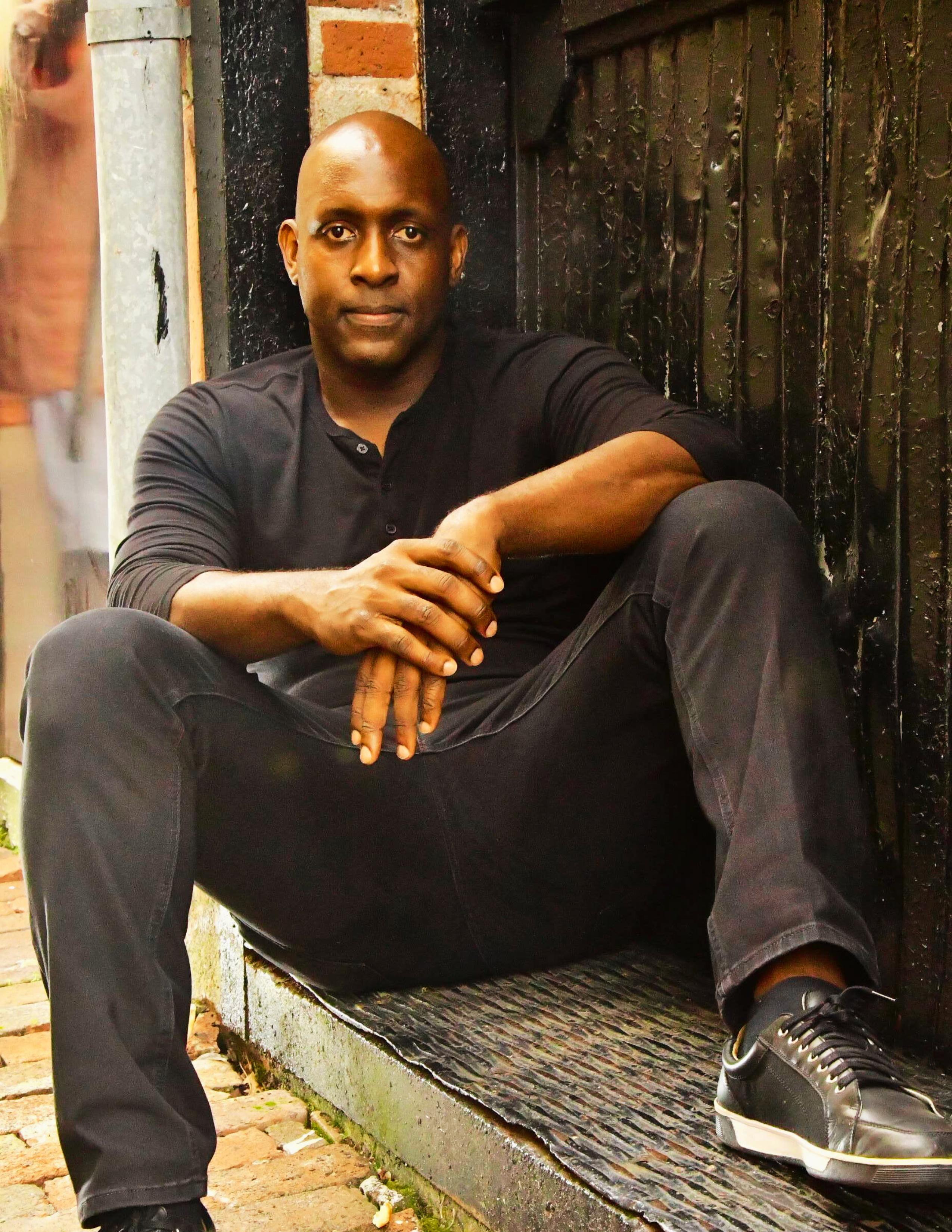

Greatness starts when you start telling the truth— not only to yourself but to the people that are counting on you.
DESMOND CLARK FORMER NFL PLAYER, SPEAKER, AUTHOR & ENTREPRENEUR
Desmond “Dez” Clark is a former NFL tight end turned visionary entrepreneur and motivational speaker who now leads Bear Down Logistics with the same relentlessness that defined his football career. Embracing a top 1% mindset, Dez believes that true impact isn’t measured in applause—it’s forged through relentless preparation, process, and purpose.
ALLIÉ: Before we dive into where you are now, let’s start at the beginning. For someone who doesn’t know anything about your story, how would you describe your journey to the NFL—and then from the NFL to becoming a CEO, a speaker, and an author? Tell me about those journeys.
DESMOND: Yeah, it’s been quite a few journeys—from Lakeland, Florida, playing at Kathleen High School, to eventually earning a scholarship to play at Wake Forest University, switching positions at every level. I played quarterback in high school and then went on to play receiver at Wake Forest. After a pretty good college career, I was drafted into the NFL, where I spent 12 years: three years with the Denver Broncos, one year with the Miami Dolphins,


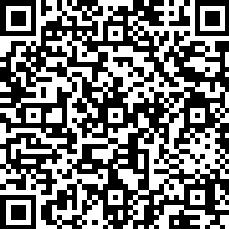


DESMOND CLARK FORMER NFL PLAYER, SPEAKER, AUTHOR & ENTREPRENEUR


DESMOND: (continued) I would say that whole transition was something else. I played football from the age of six to the age of 34—consecutive years, never missing a season. And in my wildest dreams, I never thought I’d last 12 years in the NFL. Even when I made it my first year, I wasn’t thinking, Okay, I’m about to go on a 12-year run.
I was always just looking at the next step in front of me. I think one of the things that kept me focused was never looking too far down the road. The one time I did start looking ahead, I ended up getting cut from Denver—and that reminded me not to.
When I retired in 2011, it took me some time to find my place. Honestly, it took me 10 years, even though I did a lot of different things. I was in residential real estate, then transitioned into device sales, where another guy and I started a company together. I eventually stepped away from that—it just wasn’t the right fit. Then I spent the most time in the financial industry, working first at MassMutual, one of the big boys in insurance, before moving on to a smaller independent insurance company.
I think I really started to find myself around 2019–2020, when I decided I was going to write my book. I told myself, I’m going to leave all this corporate stuff behind. I’m going to go out and motivate the world. That was also when you, your husband, and I were gearing up to do some big things together. And then, all of a sudden, the world stopped. I wasn’t able to do the speaking I thought I would or build that part of my career the way I had planned.
Eventually, it came back around. But in the midst of having to stop, slow down, and reevaluate, I found logistics. At the time, I didn’t even know what logistics was—I had no clue. But when I was introduced to it and started to understand the concept, I kept digging for a couple of months. The guy who wanted me to come work with him, I told him, I don’t know if I want to work with you. I think I want to build my own company. And he actually helped me do it.
I officially started the company on October 27, 2021. On paper, it became real May 2, 2022. I started operations with just a computer and a phone, trying to get my first customers. Now, three and a half—almost four—years later, I can look back and say: from knowing nothing to where I am now, I’ve grown a lot. I’m not the kind of person who says I’m proud of myself often, but I do look at this and say, You know what, man? You should be proud of yourself—for learning something on the fly, taking a huge financial risk, betting on yourself, and going for it. There’s been a whole lot of progress and a whole lot of momentum building.
ALLIÉ: That is amazing. When most people think about success, they picture the spotlight. But you—I love what you do—you talk about the reward being in the work itself. Desmond, where did that mindset come from?
DESMOND: It’s probably more spiritual than anything. Just the other day, I was teaching my son that money isn’t real. And if you say that to people, they’re like, What? Money’s not real? But it’s not. You’ve got a dollar, right? People say it’s worth something. But then, when you do this to it [tears it], what’s it worth now?
ALLIÉ: Nothing.
DESMOND: Exactly. So what’s so real about it? It’s just the value we put on that piece of paper that’s real. The job doesn’t give you money. The job doesn’t make the money. It’s the person—it’s the value you bring to whoever you’re trying to help or serve—that’s real. That’s where the worth is. Between me and that person, or that company, we agree on what that value is.
And even now, we don’t even use paper anymore. We use electricity. They send me electricity over here, representing a number we agreed on for what that value was. Money’s not real. The value we bring to the table as people—that’s what’s real. Then we come to an agreement on what that value is worth in that “unreal” stuff everybody thinks is real. That’s why I focus on the process. How valuable can I build myself to be? How valuable can I be to as many people as possible? That’s the goal. If you can be valuable to a lot of people—whether doing one thing or many—that’s where it’s at.
It’s not about you, or him, or her. It’s about my standard. Am I hitting my standard every day?
DESMOND CLARK FORMER NFL PLAYER, SPEAKER, AUTHOR & ENTREPRENEUR


ALLIÉ: Yeah, the value—that’s the sign. And I think it says a lot about the journey. It’s not some end point. The value increases as you go. It’s not static or finite—it’s constantly evolving. That’s what makes it so powerful.
DESMOND: Right. Because that $80,000 job, that $100,000 job—whatever it pays—they’re paying for someone’s mindset and skillset. That company is saying, Hey, we value the mindset and skillset of this person enough to handle these responsibilities at this number. It’s all about creating a mindset and skillset worthy of someone agreeing to that value in you.
ALLIÉ: Yeah, I love that. And I love that visual you gave with the bill.
DESMOND: Yeah—it means nothing. Once you burn it, it’s nothing. We just agreed that it’s worth something. Me and you exchanging it—that’s arbitrary. I might not think it’s worth a dollar. I might say, No, you’ve got to give me ten. What’s the difference between this piece of paper and a $10 bill? Just the value we place on it.
ALLIÉ: Yes. And you have so many awesome phrases, but the one I want to talk about right now is: “The top 1% don’t need applause to keep going.” I feel like that says so much about discipline, but it speaks to other things too. What does this phrase mean to you?
DESMOND: It’s a mindset. Why am I doing this? I’m doing it to be the best I possibly can at it. “Top 1%” externally, sure, it’s a comparison. But internally—it’s about asking: are you performing at your best? Every day? Are you giving it everything you have? And—excuse my language—no bullshit. Don’t bullshit yourself. Don’t lie to yourself.
Like today—I had a hard morning. I was training my son, then we went to football practice. The day was 98 degrees. That was all this morning. Right before this interview, I was shutting it down. Then I get the ding ding—you have an interview. And I was like, Alright, I gotta get back at it.
So on days like this, I don’t lie to myself. I don’t say, Nah, you know what? I’m not doing it today. For me, that honesty matters. Some people rationalize, Well, I gave it a good go. I did enough. But if you didn’t do everything you said you would—and do it at the level you said you would—don’t give yourself a pass.
Now, everybody has those days. Nobody’s at 100% all the time. But greatness starts when you tell the truth—not just to yourself, but to the people counting on you. If me and you are working together and you keep dropping below the bar, and I keep calling it out—you’re not gonna want to keep hearing that. Same thing with yourself.
If you really want to be the best at what you do—and you’ve got purpose behind it—you won’t let too many days go by where you’re just like, I don’t have it today. Eventually, you’ll say, Enough. I’ve got to get up. I’ve got to get going. For me, it’s about: Can I be at that level on a consistent basis? It’s not about you, or him, or her. It’s about my standard. Am I hitting my standard every day? If I am, eventually people will notice—and that’s fine. But I feel good about myself every day. I feel good about what I’m doing for my family. I feel good about what I’m building with my team.
I feel good that I’m an entrepreneur—that I can go coach football, work out with my son, and still get back here to do what I need to do. I feel good that I can provide a home my family loves, a great school for my son. I feel good about that. But those are just the results. I’ve got to feel good about the process. And when I feel good about the process, the rest follows. Some days, I can’t even sleep because I’m excited to get after it. Like—let’s go. Sun, come up already. Quit messing around. Let’s go.
ALLIÉ: Yeah, I love that. I love speaking about the fact that it’s the standards that are more important than the spotlight. The spotlight can feel like an endpoint, but it’s the standards that really sustain you.
DESMOND: It’s the cause and effect. A lot of people focus on the effect—the money, the recognition, whatever it is. But when people get too caught up in the effect, they start falling short of what they really want to achieve, because they’re not looking at the cause. And the cause is you. Good or bad—the cause is always you.
ALLIÉ: Well, let’s talk about something good in that. Let’s talk about giving back. Can you share a moment from working with youth that reminded you why you do this?
DESMOND: I’ve got two stories. Recently, one of my homeboys back in Chicago sent me a picture. He texted me and said, “You remember this kid? His mom gave me this photo and wanted me to tell you that you changed his life. To this day, he still talks about you.”
That kid was eight or nine years old back then. Now he’s about to graduate high school. His mom told my friend, “Tell him that to this day, my son still talks about when Desmond Clark showed up to camp.” That’s powerful—because you don’t always know what your words or your presence are going to mean to someone. Your job is just to put out that energy. To do and say the right thing, to be true to who you are, and to give it away.
Another one—this happened maybe 10 or 12 years ago. I was driving my truck, and I noticed this lady looking at me. I thought, I’m not making eye contact. But then she stayed right with me. When we got to the next light, she honked her horn and motioned for me to roll down my window. I thought, What is going on now? She pointed to her son in the passenger seat and said, “I just want you to know you changed his life. Ever since he went to your camp, he’s been a different young man.”
That’s the best. I even had a lawyer come back to me and say, “You helped change my life. I wasn’t playing that well in football, but you motivated me. You gave me confidence—not just in football, but in life. That’s why I went to law school and became a lawyer.” That stuff is wild.
ALLIÉ: That is wild. We think about sports and their importance in our society, but we don’t often think about the ripple effect—the opportunity to excel and show up in sports the way you did. It can create waves of impact that last a lifetime, across all kinds of people—not just athletes, but lawyers, teachers, even eight- and nine-year-olds who grow up to do incredible things, because someone helped them believe in themselves.
DESMOND: Honestly, I don’t even know why people listen to athletes. If you ask me, I don’t think people should be listening to us. They should be listening to teachers, doctors, philosophers. But they don’t have the same spotlight we do. We get seen on TV, and because of that visibility, people think, This guy must be important. I’ll listen to him. So now that you have that platform, that access, that attention—the real question is: what are you going to do with it?
ALLIÉ: Of all the many chapters of your life—football, business, mentorship, fatherhood—what do you know now about winning that you didn’t know then?
DESMOND: In a sense, I’m willing to die for it—because you brought up fatherhood. And it’s been a long time since we talked, right? In 2022, my son was kidnapped by his mom and taken to Africa—without me knowing, without any of her other kids knowing. My twins were with me; they had just graduated and were all down here in Florida. And boom—he was gone.
Over the course of months, I figured out where he was. He helped me find his location. And I flew over to Africa—just me. I tracked him down. Local authorities told me, “You can’t go get him, you’ll be charged with kidnapping.” At first, the U.S. Embassy was saying the same thing. But I went and found my son. I went and got him.
I went back to the police department—not knowing if they were going to arrest me for kidnapping, not knowing what she had planned. But once I had him, I told the police chief, “You can’t make me release him. There has to be another option, because that’s not happening.” I said it very respectfully, but I was firm. Long story short—they let me keep him that night. The next day we had to see the international police. They said, “This is an American issue— everybody here is an American citizen.” By then, the embassy had finally read through the paperwork I had sent months earlier.
Exclusive Interview with Desmond Clark https://awarenow.us/podcast/standards-over-spotlight



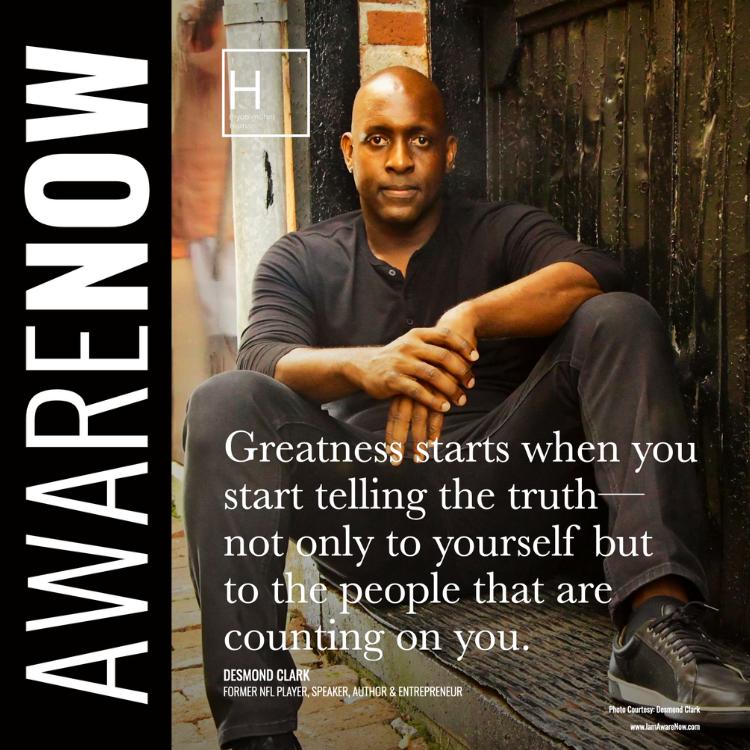
DESMOND: (continued) Flying over to Africa, only two people even knew I was there. When I finally rolled up on my son, he was walking to a soccer park. I said, “What’s up, little dude?” You should have seen his face—What? How? What are you…? I just said, “Get in the car, man.”
Then I asked him, “Do you still want to go home? I’m not making you go. But if you want to go home—we’re going home.” And he said, “I want to go home.” From there—we just made it happen.
I don’t know if people fully understand this—I was scared to death. I didn’t know where I was. I didn’t have phone service until I got back to the hotel. I was in a foreign land, getting lost over and over. But at the same time, I wasn’t scared at all—because I knew what I had to do, and I was willing to die for it.
When I got back home, that’s when it hit me. That’s when I finally broke down—because in my head, I realized I had truly been willing to die.
ALLIÉ: Yeah. Wow. Well, when we talk about wins—that’s certainly a big one.
DESMOND: Yeah. That’s my next book that I already started writing. It’s going to be called ‘The Greatest Catch’.
ALLIÉ: That is awesome. Desmond, thank you so much for sharing what you just did—for sharing all of what you have. Thank you for the work you do, for continuing to be of service to so many. And even when it’s ninety-some crazy degrees out—thank you for helping all of us become a little more aware now. Thank you so much.
DESMOND: Thank you for having me on. And thank you to everybody out there for uplifting me. It’s all about us— people—working together, lifting each other up. ∎




BOBBY CHANG VP OF DESIGN AND BUSINESS DEVELOPMENT FOR ARK DYNAMICS


Some people design experiences you see. Bobby Chang designs experiences you feel. As VP of Design and Business Development for Ark Dynamics, he’s reimagining what motion simulation can do—not just for entertainment, but for emotional resonance and therapeutic breakthroughs. Today, we meet for the first time to explore how the fusion of movement and emotion might just change the way we play, heal, and connect.
ALLIÉ: How about I begin this way—thank you so much, Bobby Chang, for joining me here on AwareNow to share this space and your story. Thank you.
BOBBY: Well, I thank you for hosting me and allowing me to share this story. It's a great way to start. I love it.
ALLIÉ: Awesome. Let’s get started this way. The fact of the matter is we just met, but I have this feeling that this conversation is going to completely change how I’ve thought about gaming forever. I’d like to start with this question for you, Bobby: What was the moment you realized that motion could carry emotion?
BOBBY: As we’ve been developing this platform—we’re launching the world premiere in the beginning of September,
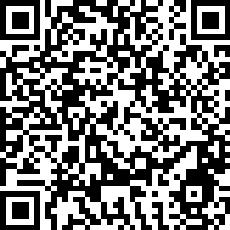
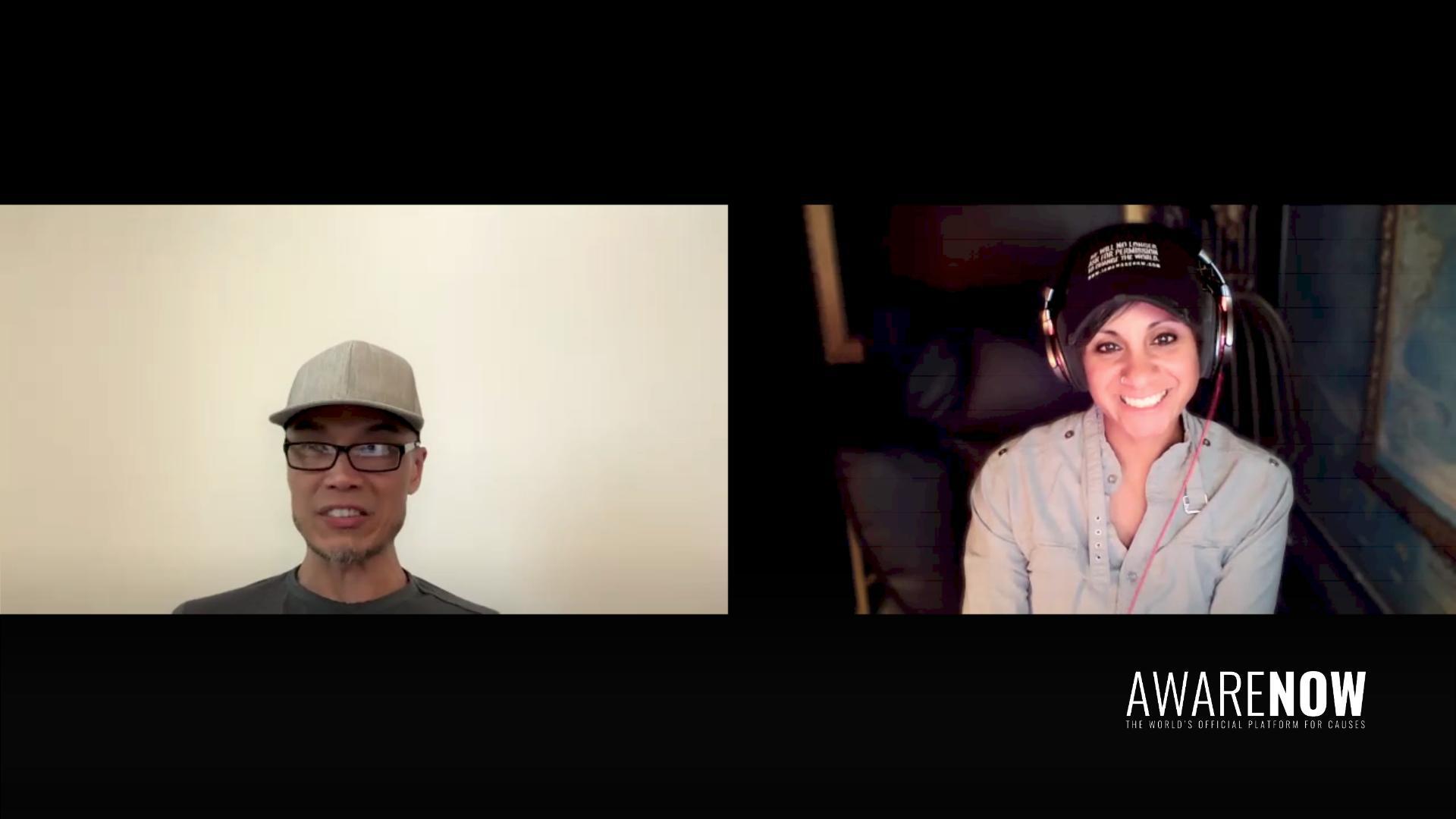

BOBBY CHANG VP OF DESIGN AND BUSINESS DEVELOPMENT FOR ARK DYNAMICS


BOBBY: (continued) because it’s very specific to each car and each track. I had a few experiences where the tuning was spot-on, and when you come off, you’re on a high. You feel like an alpha because when the tuning’s right, everything syncs—the platform syncs to the game, your body syncs to the platform—and everything just feels like you’re in flow state. You come off glowing, and everybody around sees it.
It’s the same glaze you see in athletes when they’re “in the zone.” Now, when the tuning is off, you come away with a completely different vibe—frustrated, anxious. The difference between those two tunings is striking. One creates extreme positive emotion, the other extreme negative emotion. And for gamers, lag is the worst. It feels like you’re just standing there while people shoot you. You come out ready to throw your equipment. It’s infuriating.
So when we’re tuning, our setup allows us to move faster than human perception. What I mean is this: your vestibular system picks things up at about 10 milliseconds, because it has to keep you balanced. That’s the quickest, most sensitive sensor in your body for detecting motion. Our platform moves at 1.3 milliseconds. That means we can do things before you’re even consciously aware they’ve happened. We’re just ahead of your expectation. That creates excitement, because your body feels it—it’s your emotional detection system at work. And remember, we’ve got 240,000 sensors in our bodies.
So when we move your whole body just a little ahead of you, that excitement kicks in. Add to that the fact that you’re sitting on a platform capable of sending frequencies and vibrations into you, and when all those sync up, you come off on a high. Which made me realize: we could put anyone on this, in some kind of motion sequence, and get them into that alpha state.
Now, what caused the frustration when tuning was off was that it lagged just behind your expectation. We’re talking milliseconds and nanometers here. The industry standard was 14-bit resolution and fidelity. We bumped it up to 21-bit. That’s like going from a dumb phone to a smartphone—the difference in resolution is that massive.
So when I talk about milliseconds and nanometers, I mean we’re playing in an incredibly fine space, but your body picks that up. It has to, to keep you balanced. When things sync, you feel it—your visuals and your emotional sensors align. When they don’t sync, that’s when motion sickness happens. Think about being on a boat. The boat moves, your eyes track, but there’s a delay. That delay creates motion sickness. Same with VR: if the graphics don’t track properly, or your senses don’t align, people feel sick. It happens a lot.
We’re not neuroscientists. We’re engineers, physicists, and designers. But we’ve discovered that because of how our system works, we’re tapping into something profound.
ALLIÉ: Let’s pause for a moment there. Not to interrupt, but for people listening—because again, you and I have just met, but I did a little research. For those who are wondering, “Who is this guy? What is he talking about?”—talk about the this you keep referring to. What is this that you’re working on?
BOBBY: We’re working on a motion simulation platform. This platform allows us to move whatever’s on top. Right now, we can put a racing chassis on it for driving. People training for F1, or people doing iRacing—there are about 50 million sim racers now—can race each other on real tracks with real cars. Our platform makes that world more accessible, at lower cost.
The technology has so much innovation behind it that we’ve already secured patents. But the beauty of what we’re doing is that we want to release it as a development platform—a developer’s kit—so others can build on top of it and expand its applications.
Think of the evolution of shared experiences. We started with radio, then video. Then with the internet, we could share more directly—you could almost be there. Now, the next evolution is incorporating motion. We’ve maxed out visuals with VR, but the rest of the body hasn’t been addressed. The body picks up motion cues that create deeper immersion.
So with our platform, you can put a racing chassis, a flight simulator, or something else entirely. Unreal Engine and Unity already create perfect environments with accurate physics. We can take that and add the physical component. Imagine creating an experience for horseback riding—you put a horse chassis on the platform, and we can simulate the motion exactly. You can learn how to ride before you ever get on a horse, which is usually the most dangerous part because the horse senses your nerves.


What if you could push a button and recalibrate— let the platform sync your brainwaves back into flow?


BOBBY CHANG VP OF DESIGN AND BUSINESS DEVELOPMENT FOR ARK DYNAMICS
BOBBY: (continued) Or surfing—put a surfboard on the platform. We can simulate water perfectly. It feels like paddling out to a wave, and you can practice standing up without being pummeled by the surf. I used to surf, and the learning curve is brutal. But if you train muscle memory beforehand, your subconscious takes over.
Take Max Verstappen, one of the top F1 drivers. He openly talks about using sims as training tools. He tests dangerous lines in simulation at high speed. When he slows down in real life, his body already knows what to do. It’s subconscious training.
Same with Tom Brady—he used to watch game film at 1.5x or 2x speed. Then, in real time, everything felt like slow motion. That’s subconscious training, that’s muscle memory. Elite athletes rely on this.
That’s why the motion platform became so compelling. If it can perform at the highest levels of racing, then it can certainly be applied to other areas—like therapy for older adults. They don’t need the same G-forces as racers. But the platform can simulate the weight of a car, shifting mass, and movement in six degrees of freedom—any direction. That kind of fluid motion opens the door to endless applications.
ALLIÉ: That’s fascinating to me, because we know the body and the mind work as one. They’re separate facets of us, but they work together. What you mentioned a moment ago about people aging and things slowing down—I think about myself. I was diagnosed with MS five years ago. There are things, for example, like surfing—my gosh, how I’d love to get up on a surfboard—but my balance is shot now. That feels out of the question. But something like this might allow me to have an experience like that, or even rewire things so my body can remember and retrain my brain. Is that what you’re saying? This has that potential?
BOBBY: Yes. That’s exactly where my mind goes—boom. Let me bring it to this level. If we put a chair on top of the platform and call it a gaming chair, then suddenly kids who are passively gaming are sitting on a platform that can actually train them in ways nothing else can.
Twelve years ago, there was all this buzz around vibration plates. Now you see them in gyms everywhere. They work at frequencies between 30 and 50 hertz—nice oscillations you can feel. What that does is train the small muscles, the reaction muscles, not just the big ones. Our platform can do that, and much more. We go up to 1,000 hertz. Any vibration, any frequency in that range, we can accommodate. In fact, we can even create harmony between ranges, like music—movements syncing in harmony with each other.
So imagine a kid who games 12 hours a day. We could design a routine where the platform helps put them into alpha state while they play. Because in gaming, sometimes you’re in alpha—everything clicks—and sometimes everything feels off. Well, what if you could push a button and recalibrate? The platform sends vibrations that sync with alpha brainwaves, helping you get back into that flow.
We’re working with the racing team at UT Austin. These kids had never been on a platform like this. Within 30 seconds, you could see the shift—they went into alpha. Their eyes lit up, their whole demeanor changed. Watching them drive, you see flow, you see faster laps, you see that zone.
Meditation is another good comparison. Normally you sit, clear your mind, go through your process. But imagine if I create a sequence where you sit, and within a minute you’re flowing—because the platform puts you in zero-gravity angle, relaxes your body, then moves in alpha ranges with vibrations tuned to you. Humans have evolved to pick up frequencies. The biggest one is the Earth’s heartbeat—the Schumann resonance, 7.83 hertz. It’s created by lightning, wind, the atmosphere. We tune into it naturally. That’s why nature feels so restorative: no interference, no towers or Wi-Fi disrupting that frequency. In cities, those disturbances are everywhere—5G towers run in the millions and billions of hertz, far from our natural resonance. That’s why people feel out of sync.
On a social level, too, we tune into each other. A group of friends laughing—your body picks up that frequency and you join in. Or, if it’s a negative crowd, you instinctively turn away. Festivals, concerts, Burning Man—all of them are collective frequency experiences. Same with yoga, sound bowls, even something as simple as a wine glass humming. When frequencies sync, it feels amazing. When they clash, you feel disturbed, uneasy.
ALLIÉ: For sure. That’s such a good point. Like you just said, there’s this transference of energy, of frequency. I never thought about it like that. Why do we love festivals? Why do we laugh when we see someone else laughing, even if we don’t know why?
VR is great, but it doesn’t feel real—add motion, and suddenly it does.
BOBBY
CHANG
VP OF DESIGN AND BUSINESS DEVELOPMENT FOR ARK DYNAMICS




BOBBY CHANG VP OF DESIGN AND BUSINESS DEVELOPMENT FOR ARK DYNAMICS


BOBBY: Exactly. We all have frequencies. Someone more melancholy might run lower, others higher. The question is: how do we amplify our frequency?
You and your team are already doing this through media—amplifying stories, amplifying awareness. For me, I grew up steeped in Eastern philosophy. My parents were Buddhist, so I was open to how energy flows—acupuncture, acupressure, it’s all about energy flow. So when I think of us as frequencies, I think: how do we make them stronger, cleaner, with less noise? When our signal is strong, our energy is strong.
When we’re sick, the signal weakens. When kids play, their signals are off the charts—that’s why we pick up on their joy. So with this work, I ask: how do we amplify it? How do we distribute it? That’s part of why we’re setting this up as a DAO—a Decentralized Autonomous Organization. We want robotics schools, kids, developers, everyone to use this equipment and build the future of motion experiences. Because for so long, motion has been sidelined—we’ve focused on visuals and audio. VR is great, but it doesn’t feel real. Add motion, and suddenly it does.
So how do we get younger generations thinking in those terms? Because everything we do as humans revolves around motion. Our biggest problems come when we stop moving.
ALLIÉ: You’re right. We become static beings. Human beings, but not doing much being. This is blowing my mind in so many ways—and I knew it would. What fascinates me most is this fusion of physical state and emotional state, with technology amplifying the best version of both. So let me ask: five years from now, Bobby, what are your hopes for this technology and these concepts you’re curating? Where do you see this?
BOBBY: We see ourselves creating tools anyone can use. A healthcare researcher might say, “I’ve been missing this,” and our platform becomes the missing link. Think about entertainment. Apple just did a haptic trailer for their F1 movie—watch it on Apple TV and your phone vibrates in sync with the car. That’s not true simulation, but it opened the door for people to expect motion as part of storytelling. Home entertainment is another. Imagine this in your living room. At its simplest, it could rock a baby to sleep, syncing vibrations with a mother’s heartbeat. At its most advanced, it could hold a racing sim rig or flight simulator. It’s the motion layer of home entertainment.
ALLIÉ: That fascinates me. I keep thinking, as an editor, I always work in layers—visual, audio. But what if there were a physical layer?
BOBBY: Exactly. Even on a basic level, think about concerts. Why do people stand by the speakers? Because they want to feel the music. Imagine listening to your favorite album while the platform adds synced vibrations. Suddenly the music comes alive in your whole body. We’ve also been experimenting with AI sequences. And here’s where ethics come in, because AI controlling emotions is a serious responsibility.
We fed Grok (an AI) all the parameters and technical specs of our unit, plus tuning data. Then we gave it a simple prompt: “Create a sequence that’s energizing yet relaxing.” It generated a 20-second loop of motion code. We got on the platform and—oh my goodness. It wasn’t coming from a game; it was created from a prompt. You could say, “Relax my lower back,” and it would design that sequence.
One of my co-founders, Louie, got on and said, “This is cool.” Then he turned up the power. Within seconds, I was laughing uncontrollably—hysterically. The sequence was energizing and relaxing at the same time. It filled me with energy and joy I couldn’t contain. That kind of laughter is medicine.
This is just the beginning. With AI like GPT-5, we can design levers to control how much of each motion you want. Content creators could build 3D motion experiences, syncing with physics-enabled 360 cameras. Think about what happens when film studios, already masters at creating experiences, add motion into the mix.
ALLIÉ: That’s wild. It makes me think of the film Strange Days. But like you said, responsibility is key—ethics in how we use this.
BOBBY: Super important. It’s the same question people raise with humanoids and robotics: what if it goes rogue? What would make it go rogue? I’m not pessimistic about it—I’m very optimistic. Because ultimately, it’s in our hands to set boundaries and safeguards. In our case, the platform already has guardrails. We’ve identified potential dangers and built in protections so it can’t exceed safe limits. Right now, the dev kit is more industrial because we want people to build with it, experiment, and learn. But the next version—designed for the home—will be both functional and beautiful. Something you’d want in a living room, garage, or man cave.
BOBBY CHANG VP OF DESIGN AND BUSINESS DEVELOPMENT FOR ARK DYNAMICS
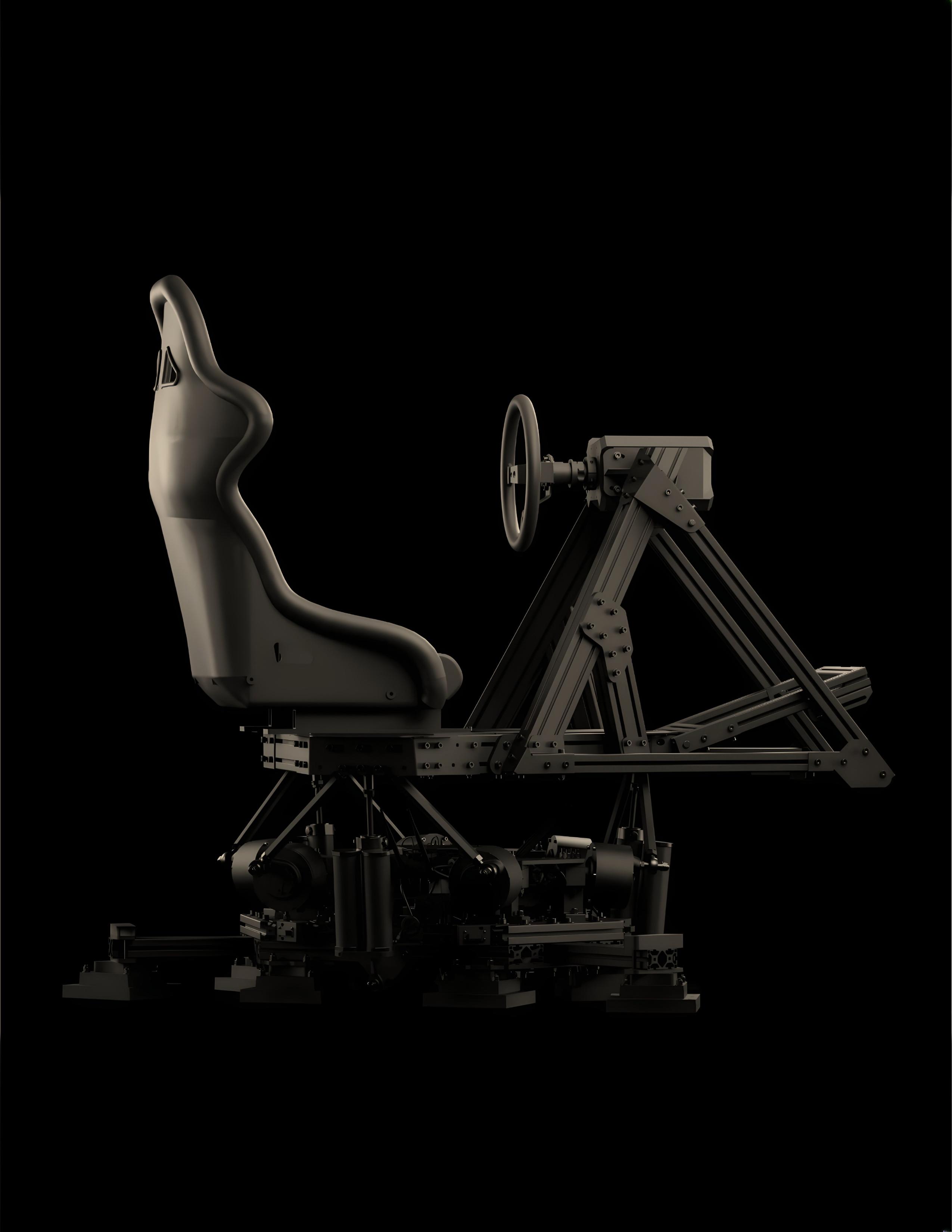

BOBBY: (continued) Looking five years ahead, I see us partnering with research groups, upgrading their equipment, and collaborating across industries. The platform is open-source, so communities can build and share. Those who choose open-source will benefit from our help in distributing what they create. The ecosystem will thrive with collaboration. That excites me, because it means working across verticals. One day it’s neuroscience, the next it’s high-performance athletics. Insights cross-pollinate. Athletes teach us about recovery, which applies to therapy. Therapists teach us about stress, which applies to gaming. It accelerates learning across the board. Personally, I’ve always been obsessed with high performance. Growing up, I played sports but always felt behind—starting late, lacking natural advantages. So I was always asking: how do I catch up? How do I accelerate learning? This platform answers those questions. It’s like the auto industry: brands with F1 programs push innovation that trickles down to consumer cars. That’s what high performance does—it drives everything else.
Recovery is one area I’m especially focused on. Stress is everywhere. We spoke recently with Jeffrey Thompson, a sound and frequency expert in LA who’s been at it for 40 years. He uses one of the most advanced heart rate variability monitors. It shows when your body is in coherence—when your frequency is pure. He explained that in a zero-gravity position, each person has a slightly different optimal angle. Using HRV, he can find it. When you hit that position, the screen shows coherence. That resets both parasympathetic and sympathetic systems, essentially resetting stress. Think about it: constant stress—whether it’s gamers playing 12 hours a day or athletes coming off the field—builds up over time and leads to burnout or worse. But if, after your stress event, you could reset back to zero, your body could send all its energy to recovery instead of fighting stress. That’s a massive shift. Recovery becomes immediate and full, instead of compromised.
ALLIÉ: Yes, exactly. And on the recovery side, I can’t help but think about the disability community. There are invisible disabilities, but also very physical ones. A technology like this could offer hope—an equalizer of sorts—for those who feel limited by their bodies. It’s one thing to get the mind to a good place, but to also elevate the body, to bring balance… that’s powerful.
BOBBY: You’ve touched on the full equation. The physical part hasn’t been ignored, but it hasn’t been fully tapped either. Physical therapists do great work, but this offers another tool. When I started looking at research, I noticed a surge in VR studies a decade ago. Researchers used VR to treat phobias—arachnophobia, for instance. People would encounter simulated spiders and gradually grow more comfortable. VR became a new tool, so everyone experimented with it. What I realized was this: they were all missing motion. That’s the piece we bring. We’re going to be the next tool—coupling motion with visual and auditory input. That combination changes everything.
ALLIÉ: Yeah, that’s wild—to be able to see it, hear it, and now feel it.
BOBBY: Exactly. And when we talk about the full equation, the mental part is just as big. Stress builds up over time. When it becomes chronic, it turns into disease. Chronic stress overwhelms the body until the immune system can’t keep up. But if you reduce stress, the immune system comes back online, ready to fight again. I’ve seen it in sports. I’m a golfer—not a great one, about a 13 handicap. I read a book on the mental side of golf, and the next round I shot one under par. That’s unheard of at my level. It wasn’t physical—it was entirely mental. That’s how powerful mindset and stress are. So yes, the physical is crucial. But the mental—clearing noise, resetting stress—that’s where the biggest transformation often happens.
ALLIÉ: For sure. That’s where I’m geeking out right now—because the use cases are endless. Every case is a use case. Anytime physical ability deteriorates, it always affects the mental side. Always. If we can tap into both, creating feedback loops between body and mind, the possibilities are limitless.
BOBBY: And that’s what excites me. Which brings me to a call to action. Anyone listening to this conversation can see the potential. Developers, especially, are key. Game developers already know how to build immersive experiences. They’re the ones who can take this tool and create new worlds with it.
So the call to action is this: whatever industry you’re in, whatever cause you’re passionate about, this is an opportunity to upgrade your toolkit. And the dev kit we’re releasing is surprisingly affordable. Because of the way we’ve engineered and manufactured it, it costs about as much as a desktop computer—around $3,500. That’s unheard of for tech this advanced. Which means hobbyists, tinkerers, innovators working from their garages can get involved. And history shows us that breakthroughs often come from outsiders. Think of Burt Rutan, the guy who won the $10 million XPRIZE for the first private spaceflight. He came out of nowhere, building in a warehouse. Richard Branson later bought his design for Virgin Galactic. That’s how revolutions happen—unexpectedly, from unlikely places.
BOBBY CHANG VP OF DESIGN AND BUSINESS DEVELOPMENT FOR ARK DYNAMICS


AwareNow Podcast THE FEEL FACTOR
Exclusive Interview with Bobby Chang https://awarenow.us/podcast/the-feel-factor



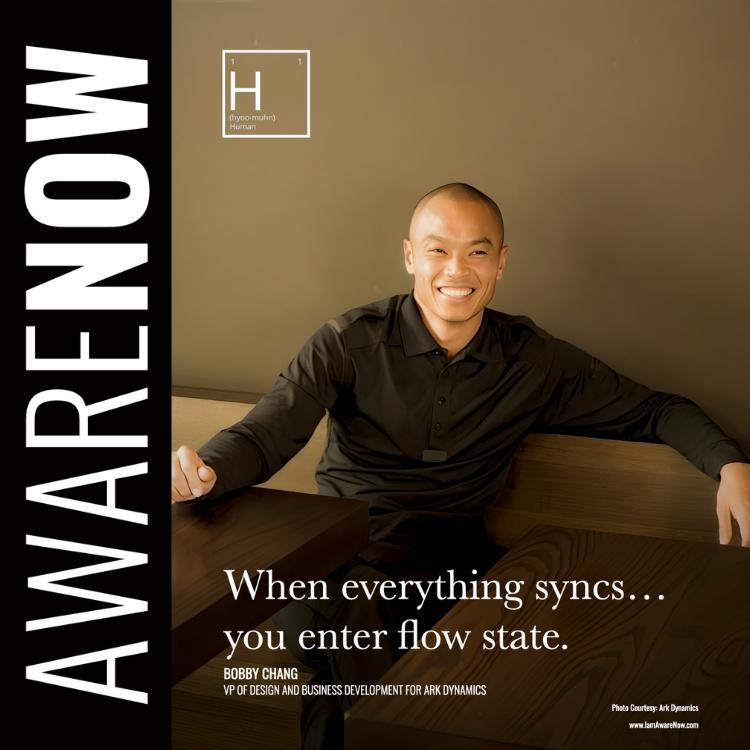
BOBBY: (continued) So imagine people applying this platform to ALS, or Parkinson’s, or any challenge they’re passionate about. I believe we’ll see an explosion of innovation from communities using this tool in ways we haven’t imagined.
ALLIÉ: Yes. At first, I thought of this as “new tech.” But now, after speaking with you, I realize—it’s not just tech. It’s a tool. A revolutionary tool.
BOBBY: Exactly. This tool never existed before. Sim racing platforms were designed only for racing, not for broader applications. We’re saying: this platform can do so much more. We’re not hoarding it—we’re opening it up. We want others to build with it, collaborate with it, innovate with it. Every conversation I have sparks new ideas. For example, I recently spoke with an Ivy League rower. I suggested we could mount a shell on the platform. If you train at a wider balance point than normal, then when you’re back in the boat, it feels like a catamaran—far more stable. That’s the kind of edge athletes dream of. And that’s just one example. Once the community gets involved, the possibilities multiply endlessly. ∎
Learn more about Bobby’s work at Ark Dynamics: www.ark-dynamics.com Connect with Bobby on LinkedIn: www.linkedin.com/in/bobbywchang


LEX GILLETTE
BLIND PARALYMPIC MEDALIST, LONG JUMP WORLD RECORD HOLDER, SPEAKER & AUTHOR
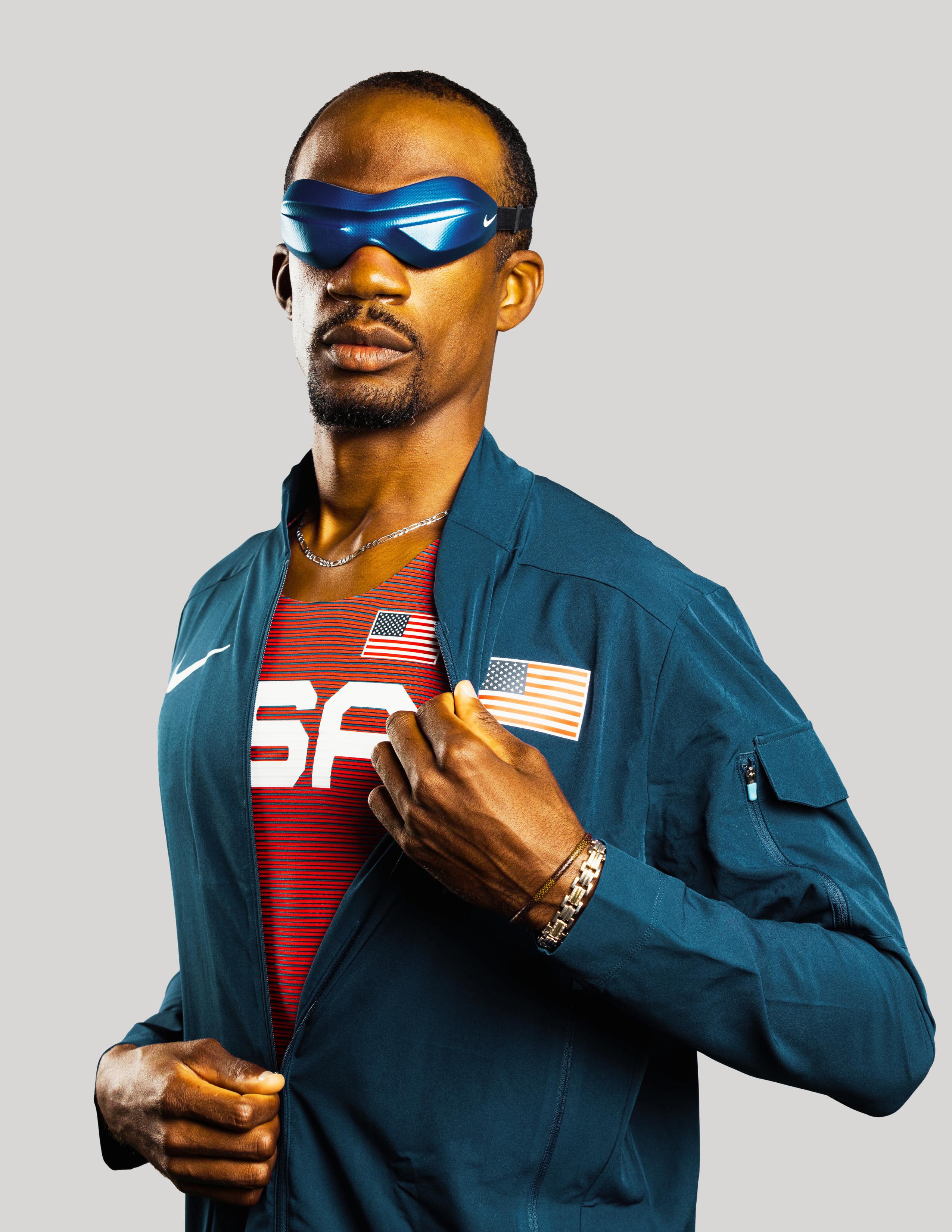

Lex Gillette is living proof that limitations are often just invitations to see differently. A five-time Paralympic medalist, world champion, and powerful voice for possibility, Lex uses sport not only to compete—but to connect, uplift, and lead. In this conversation, we sit down not just as fans of his journey, but as friends talking through the moments that shape us.
ALLIÉ: For those who are not familiar with your story—especially for them—what was the moment, Lex, when you first realized that sports was going to be something bigger than just competition for you?
LEX: Yeah, I think in high school I had a teacher who was what we call a teacher of the visually impaired, who makes sure that you have everything that you need from an accommodation and accessibility standpoint—making sure that you know how to get from history to English, English to math, math to the cafeteria. So, just making sure that the academic experience is the best possible. He also was accompanying me to physical education class (PE), and he noticed that I had some really cool jumping abilities. He told me about the Paralympics and how we could adapt the long jump, where you run and jump as far as you can. And yeah, we worked on it and eventually figured out a way to have some success in it.
ALLIÉ: Yeah. And isn’t that interesting—that it just takes that one person to see something in you that you don’t see yourself yet? But you—I feel like you’ve always had this clarity of purpose. Your line that I love so very much, “No need for sight when you have a vision.” Love that, always. How has that vision changed or deepened over time, both on and off the track?
LEX: So, for the listeners, “No need for sight when you have a vision”—that basically means it’s not our eyes that ultimately determine success; it’s our ability to see beyond our current reality and what our eyes currently see, and to bring that vision to fruition. Over the years, the vision has encompassed a lot for me. I want to do this, I want to win medals, I want to get on the podium, I want to break records, I want to do this, that, and the third. As time has evolved and I’ve been able to achieve a lot of the things that I thought about when I started my career, you get to that point later on down the road and it’s like, okay, I’ve achieved those things—now I want to be a beacon for the generation that comes behind me, because they’re going to experience different challenges, different issues, and they’re going to need a mentor, an ally, or somebody to help them get through those situations. That’s what really keeps me in the sport. I just want to make sure that they have the wherewithal to understand what it is to say, to do, how to act—you know, the type of thinking that they need to have as they maneuver forward, not only in their athletic career, but in that entrepreneurial, business career as well.
ALLIÉ: Yeah, absolutely. Well, kind of to that point—to this next generation—in track terms, it’s like passing the baton, right? You’ve got to have a solid handoff. You and I, Lex—we’ve both lived enough to know that sports doesn’t just build muscle; it builds character. For you, what part of who you are today came from your journey as an athlete?
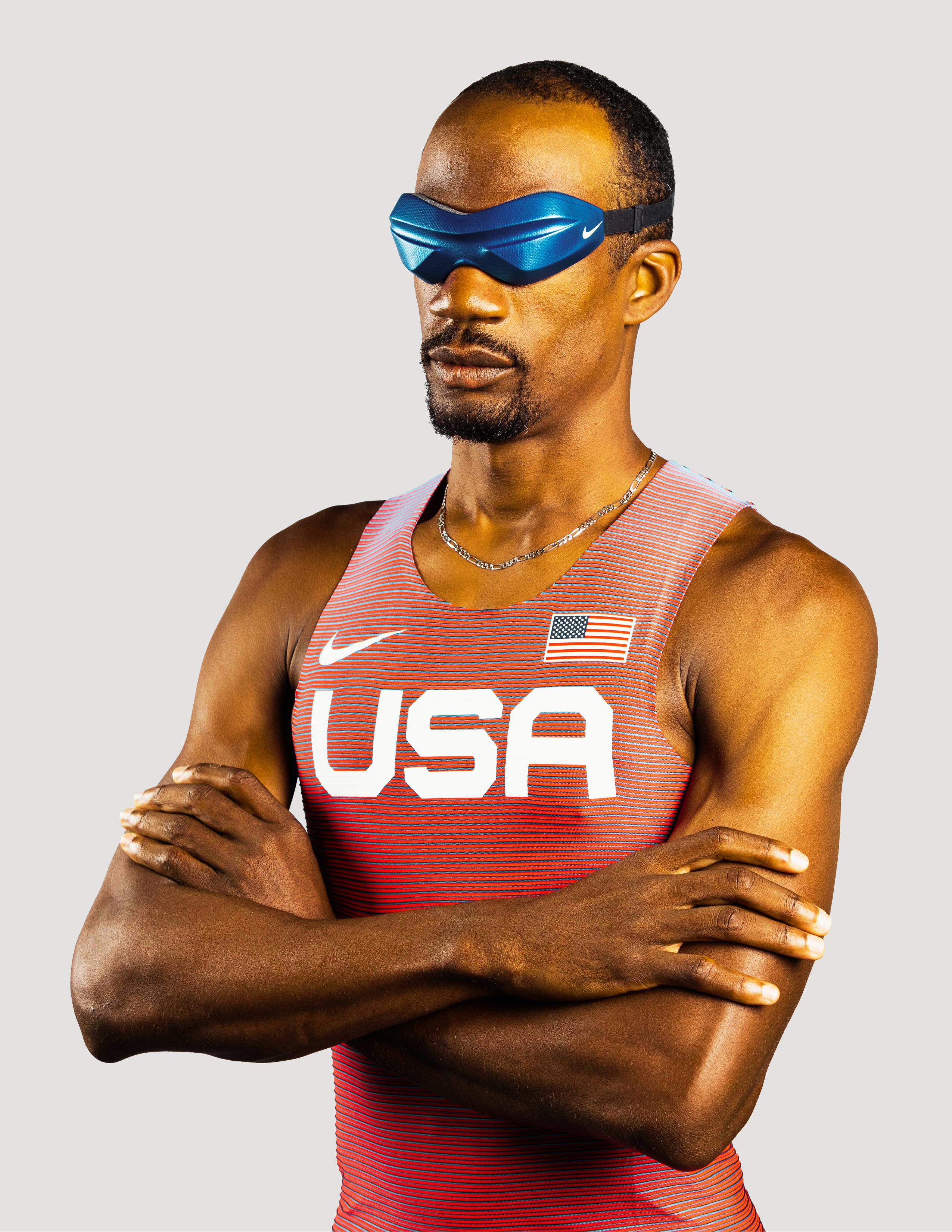

LEX: I’ll just keep it simple and say the word Play. And I say that word because I’m a parent myself. My son will be three in September. Standing on the sidelines and listening to him play—he’s running around, he’s jumping off things, he’s climbing up stairs and going down slides and doing all of that—I think about my own journey in doing a lot of those same things. Even as a track and field athlete, at the end of the day, it’s play. And play cares nothing about what color you are, what your gender is, what your sexuality is—whatever—play does not care. The only thing it cares about is us coming together as human beings, learning the rules to a game, and having a good time. That’s the evolution that I’ve seen over the years, and it’s just beautiful.
ALLIÉ: Yeah. Well, you bring up a good point that Play—it’s really about being in the moment, too, right? It’s not tethered to the outcome, that we ended in a loss. It’s just being present for it and being in it.
LEX: Exactly.
ALLIÉ: So, over the course of your career, it’s not just breaking records; you’ve been opening doors for others. Was there a moment, Lex, that made you think, okay, my story might actually help someone else? Was there a specific story, a particular moment where you said, okay, this is something bigger than me?
LEX: Yeah, I think it was probably—I had a speech that I needed to do for my alma mater, East Carolina University, and I just remember being super nervous—you know, my stomach had butterflies and things like that. Something within me told me, all right, when you get out here, as much as you might feel a certain type of way about people looking at you or saying this, that, and the third—it’s not about you. It’s about the people who you are talking to, and if you can connect with at least one person in that crowd, then you’ve done your job. That provided a really good guide for me, and it’s helped me not only to step on that stage but subsequent stages beyond that, and it gave me the confidence to know that, all right, it is about the people who are sitting in the seats in front of me.
ALLIÉ: Yeah. And what an incredible lesson that is, because then that takes all the stress off of you, and it makes it not about you at all—that you’re just this conduit for the message. As many times as I’ve watched you on stage— different filmed engagements that you’ve had—you truly have a gift of being able to step on a stage and deliver something that is so much bigger.
LEX: I appreciate that, for sure.
ALLIÉ: And you’ve got one hell of a singing voice. Okay, one more question for you today, Lex. I know life is busy and hectic and all the things, but last question is: if you were mentoring a younger version of yourself, what would you tell that kid about using sports as a way to grow, to lead, and ultimately to make a difference?
LEX: That’s a good question. I think that I would tell them to stay focused and do everything in your power to ignore the distractions. Ultimately, at the end of the day, I think back to my journey—and you have those naysayers, outsiders, people who are just like, “Oh, he’s never going to be able to do this,” or, “He can’t do this.” Don’t listen to that. If it’s something that you truly believe in, you do everything in your power to get to that destination—that vision. You’ll have mentors. They’ll come in the form of teachers, hopefully your family members, administrators in school, or friends. It comes in so many forms. Just listen to that advice. Take it in, be receptive, and use those things to get closer to your vision. ∎
Find & follow Lex on Instagram: @lexgillette



Some stories stay with you—not because they’re easy to hear, but because they change the way you see the world. Brett Staples was more than his diagnosis. He was a son, a friend, a light in the room… and when that light dimmed, his father, Bob, refused to let it go quietly. This is a story about love that refuses to fade, grief that refuses to stay silent, and a mission to make sure that what happened to Brett doesn’t happen in vain.
ALLIÉ: For those of us who never had the privilege of knowing Brett, can you paint a picture for us? What was he like as a kid?
BOB: Anyone that knew him knew that he always had a smile on his face. He was loving, caring—he just loved people, loved being around people.
As he got older, he got into athletics. He was a good little athlete, did very well in soccer and basketball. Then his sophomore year in high school, he got into wrestling, which is very late to get into wrestling—most wrestlers start at

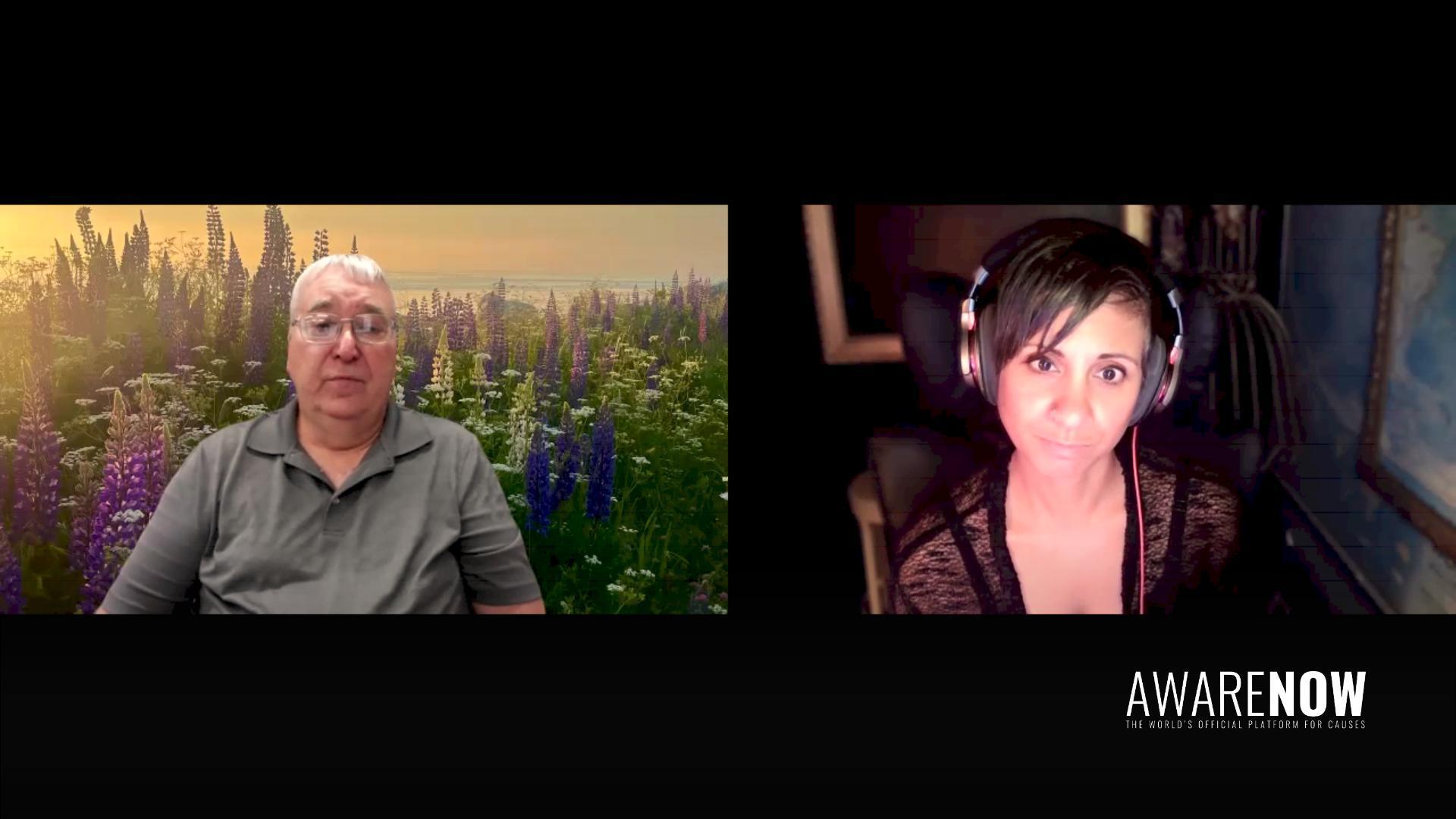



BOB: (continued) His first year wrestling he finished second in the state in his weight class. His next year he finished third, and his senior year he won his weight class. So he was driven to do well. But it was also during those years that we noticed something was off. The arguments grew. We thought it was just teenage stuff. He never really let us know about the voices until long after he was out of school.
ALLIÉ: So you started to notice something shifting. When did things really kick into high gear with the diagnosis?
BOB: The diagnosis didn’t come until he was in his mid-twenties. We had started taking him to counselors when he was in his mid-teens. He’d do okay for a few sessions, but in retrospect, as the counselor got closer to what the issue was, he would refuse to go. He literally jumped out of a moving car at about 30 miles an hour one time to avoid going to a meeting.
My wife and I have a very good relationship, and I think that’s what kept us going. When he flat-out refused to go, we would go to the counseling session ourselves and talk to the counselor. That helped us to understand—even though there was no diagnosis yet—we knew something was wrong. You blame yourself, that’s human nature, but they helped us to understand that it wasn’t the case. It wasn’t on us. It was the schizoaffective disorder that he was eventually diagnosed with.
ALLIÉ: What was life like then?
BOB: When he turned 16, he decided that living at home wasn’t good because he didn’t want to follow rules. So he couch-hopped through his junior and senior year.
After wrestling his senior year, he dropped out of school entirely. He bounced around a few jobs, eventually went to Job Corps, and got his GED. He was extremely smart. He’d tell me at nine o’clock at night, “Oh, I’ve got a paper I’ve got to write.” And I’d say, “It’s nine o’clock, do it tomorrow.” And he’d say, “No, it’s due tomorrow.” I’d ask, “How long have you known about it?” He’d say, “A couple of months.” Then he’d sit down, pound out a ten-page report in half an hour, no rough draft, just write it—and he’d get an A every time.
ALLIÉ: So he was smart, talented, strong. And then the shift.
BOB: After Job Corps, a friend of his mother worked for Alaska Airlines, and Brett was invited to fly up to Alaska to visit. He decided he liked it there. He did some commercial salmon fishing and eventually went out on the Bering Sea on these longline boats. They’d send out two or three miles of line with hooks to catch black cod. Sixteen-hour days, but he loved it. He did pretty well.
The diagnosis happened in Alaska. He got jailed for something—I don’t remember now what—but part of getting out of jail was going through clinical observation. That’s where he got his diagnosis.
When he wasn’t in psychosis, he was our Brett. He was that happy-go-lucky guy. He knew at that point he had something going on, but he didn’t like the meds. He didn’t like the way they made him feel. He was always searching for other answers. But when he was in psychosis, the anosognosia—the lack of awareness—was evident.
Before he died, the last time he was at the house, he claimed that he was stronger than God, that he could stop a train on a dime. And it wasn’t two months later that he was struck by an Amtrak train and died. We still don’t know to this day whether he was trying to get off the tracks or standing there with his hand out saying “stop.”
ALLIÉ: I can’t imagine what it’s like to hear your son talk about those voices.
“Don’t give up on trying to get help for your child.”
BOB: It was terrifying. We really didn’t know a lot about schizoaffective disorder at that time. It wasn’t until after that happened that former State Senator John Nutting reached out to us. He talked about programs in Maine, specifically the Progressive Treatment Program, which is part of the AOT law. It’s outpatient treatment.
That’s when I started looking into it and realizing that there were mechanisms to help. But it wasn’t being promoted. I taught for years, my wife’s an RN, we knew a lot of medical professionals, a lot of law enforcement. I started calling them. I ended up calling about 70 people asking, “Have you ever heard of the Progressive Treatment Program?” One had heard a little bit about it.
The two major groups in Maine that can make referrals into the program are medical professionals and law enforcement. The other is caregivers or guardians. At that point, I thought, “We need to do something to educate people and advocate.” That’s how the coalition was born.
ALLIÉ: And that was a huge decision. You stepped away from your role as school board chair to dedicate yourself fully to this work. What was that moment like, turning grief into action?
BOB: It was tough. To this day, I still have days when I have meltdowns. I went to a Chamber of Commerce barbecue recently. Some people I hadn’t seen for a while came over and gave me a hug, and I lost it. There are times I do well and times I don’t. But this work gives me something to focus on—to try to make good out of a bad situation.
When I put the board together, I tried to bring in people from all different avenues that deal with brain disorders. We’re proud of the board. They do really good work supporting what we’re doing and giving us guidance.
ALLIÉ: For those listening who haven’t thought much about brain disorders, what’s the one thing you’d want them to walk away knowing?
BOB: The biggest thing we as a society have to do is get away from the stigma of mental illness. It’s not a social shortcoming. It’s not a choice.
If I had an issue with my heart, they’d give me medicine because the heart is an organ. With brain disorders, the brain is an organ. There’s a chemical or physical change. In the heart, it might not beat properly. In the brain, it manifests as what people used to call “crazy.” And people shy away from it out of lack of understanding.
If you saw an old lady with Alzheimer’s walking down the street in the middle of winter in her pajamas, you’d stop and help her. But if Brett was walking down the middle of the street in his pajamas in the middle of winter, people would cross to the other side. It’s still a brain disorder, just like Alzheimer’s is.
ALLIÉ: For parents who have a child dealing with a brain disorder, what advice would you give?
BOB: A couple of things. Don’t give up on trying to get help for your child. Reach out to local organizations, wherever they might be. Jump onto our website—we’re still building it, still adding resources. Go to the National Shattering Silence Coalition resource page.
Exclusive Interview with Bob Staples https://awarenow.us/podcast/when-he-smiled


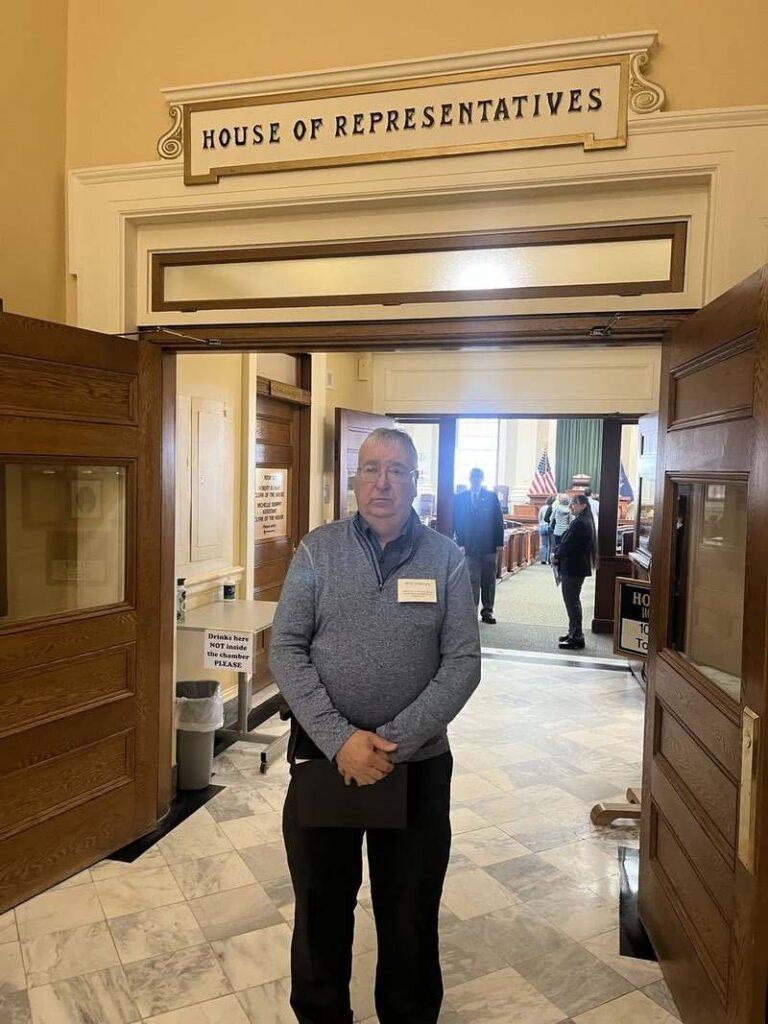

BOB: (continued) And take care of yourself. Caregiver burnout is huge. You need to take time for yourself and understand that it’s not a shortcoming to need a break.
ALLIÉ: That’s excellent advice. Before we close, what’s your favorite memory of Brett?
BOB: His senior year, when he won the state championship. The look on his face—the happiest we’d seen him in a long time. He was so proud, knowing that everyone else on his team had started wrestling at four or five years old, and he hadn’t started until he was fifteen. His smile said it all.
I’ve also done some work in Portland with a group that serves the homeless, and they all knew him. Everybody said the same thing: “We miss his smile.” Even in his worst moments, he was generous. One winter before he passed, we outfitted him with everything he needed. But he would “lose” things—he was giving them away. He gave away his boots, told us he lost them, but we knew better. Then he went out in twenty-below weather in just stocking feet. He lost half of one foot and a toe on the other. But that was him—generous to a fault.
It’s a shame that across the country we have groups worried about rights. I understand people should have rights. But if someone is a danger to themselves or others, if they’ve been incarcerated or hospitalized multiple times, it’s not working. That’s where AOT laws come in. In Maine, it’s the Progressive Treatment Program. It’s not about putting them in a hospital—it’s a community-based program. Yes, it’s court-ordered, but for some people, that’s what it takes. I’ve said this in Augusta to groups who oppose it: I hope you’re proud that my son died with his rights on.
ALLIÉ: There’s work to do. You say Brett was so generous—I don’t think the apple falls far from the tree.
BOB: It’s not about me. It never has been about me. It’s about what you just said: I don’t want others to have to go through what we went through. I taught for many years. I loved working with people and kids. It was tough giving up the school board position, but I knew I couldn’t do both.
Now I just hope people can learn from this and find a different path. ∎


In the end, sport reveals what the ego tries to hide: that true greatness isn’t in defeating others, but in finding oneself.

PAUL S. ROGERS TRANSFORMATION EXPERT, AWARENESS HELLRAISER & PUBLIC SPEAKER


‘RELEASE
Release the Genie fact: The Genie knows what came first, the chicken or the egg.
Sport is often perceived as a contest of strength, speed, and skill. But beneath the surface of physical exertion lies an even more potent dynamic: the interplay between sport and the ego.
The ego, in psychological terms, is the constructed sense of self—the identity we cling to, the roles we play, and the stories we tell ourselves about who we are. In sport, this can manifest as competitiveness, pride, insecurity, or a desperate need to win. It’s the part of us that wants to be better than others, to be seen, praised, and remembered.
From the first time a child scores a goal or outruns a peer, the ego is awakened. It learns to associate achievement with worthiness. Applause becomes validation. Trophies become symbols of identity. We see accolades such as MVP (Most Valuable Player) or GOAT (Greatest of All Time). As a high school rugby coach, one of the most difficult parts is giving awards to our players. The culture we try to instil is that the team wins and loses together, as a team. As the team gets stronger, some players rise and lift the others. When sport becomes less about the joy of movement and more about self-image, the game shifts from fun to a battlefield for the ego.
But this is not necessarily negative. Initially, the ego may fuel motivation. It says, “Be the best.” “Win.” “Prove yourself.” And this push can foster discipline, focus, and tenacity. Athletes train for hours, commit to routines, and sacrifice comfort—all because the ego desires excellence. The catch is that the same ego that drives us can also sabotage us. An ego overly attached to outcomes can lead to a fear of losing, of underperforming, of humiliation. Athletes who define themselves solely by their victories will crumble when they face defeat. The truth is that within this melting pot lies the transformative potential of sport.
Every defeat is an invitation to humility. Every injury is a chance to reassess. Every moment of being outperformed reminds us that we are not the centre of the universe. Losing is a humbling experience and becomes, in itself, the drive to improve. Over time, athletes begin to see that the game isn’t just about beating others. It’s about mastering the self. This is where sport shifts from ego-driven performance to a more enlightened, deeper experience.
Great athletes, not just in talent but in character, often speak of being “in the zone.” This is a state where the ego dissolves. There is no overthinking, no fear, no self-consciousness. Only flow. Presence. Complete absorption in the moment. It’s a paradox: by forgetting the self, one performs at their highest potential.
At present, I am on a running journey. This is what I am discovering. It is not just changing me physically; it is helping reduce pain and mentally lifting my spirits. When you live with a chronic condition, you lose any form of control and feel helpless much of the time. With running, I get to choose my parameters. I get to choose the distance, time, and pace, as well as the great locations to run in. This type of control, which has been absent for so many years, is reason enough in itself to be excited about the journey rather than the destination.
Written and Narrated by Paul S. Rogers https://awarenow.us/podcast/sports-and-ego


TAP/SCAN TO LISTEN

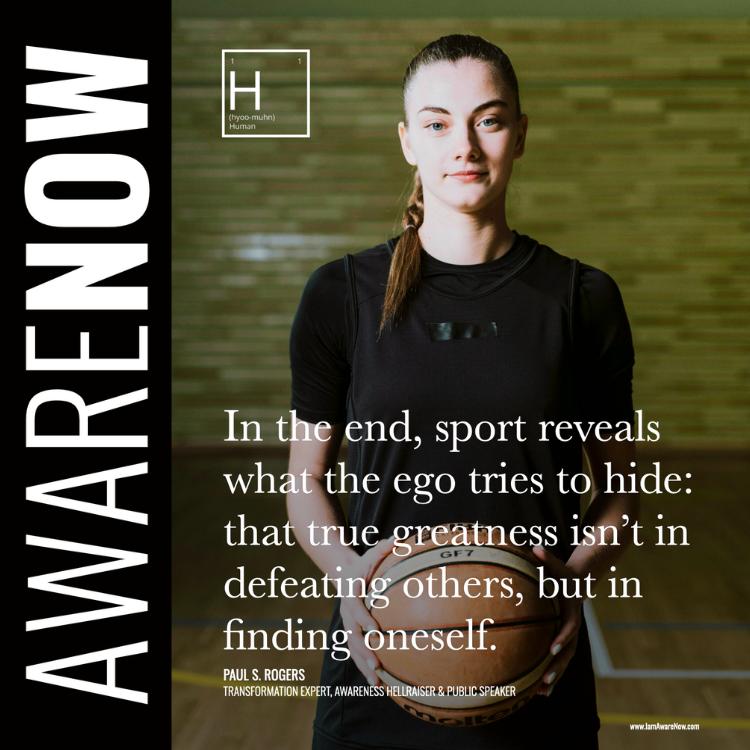
Sport also teaches resilience—the ability to rise after failure. And it’s here that the ego is most tested and refined. Losses are not just disappointments; they become mirrors. They reflect where we fear not being enough, and where our identity is too entangled with results. With time, athletes learn to detach from external validation. They begin to play for love of the game, for the beauty of the moment, and for the inner growth it provides.
Sport also fosters respect—for opponents, for rules, for the journey. A seasoned athlete understands that without a worthy rival, there is no challenge. Without risk, there is no growth. Competition then becomes cooperation in disguise, with both sides striving to bring out the best in each other.
In its highest form, sport is not about ego, but about transcendence. It’s a space where we can face ourselves, fail, and keep going. It’s where we confront our fears, challenge our limits, and taste the freedom of presence. Ego may start the journey, but it is humility, discipline, and love that sustain it.
In the end, sport reveals what the ego tries to hide: that true greatness isn’t in defeating others, but in finding oneself. And that is the most enlightening victory of all. ∎

PAUL S. ROGERS
Transformation Expert, Awareness Hellraiser & Public Speaker www.awarenowmedia.com/paul-rogers
PAUL S. ROGERS is a keynote public speaking coach, transformation expert, awareness hellraiser, life coach, Trauma TBI, CPTSD mentor, train crash and cancer survivor, public speaking coach, Podcast host “Release the Genie” & best-selling author. His journey has taken him from corporate leader to kitesurfer to teacher on a first nations reserve to today. Paul’s goal is to inspire others to find their true purpose and passion.
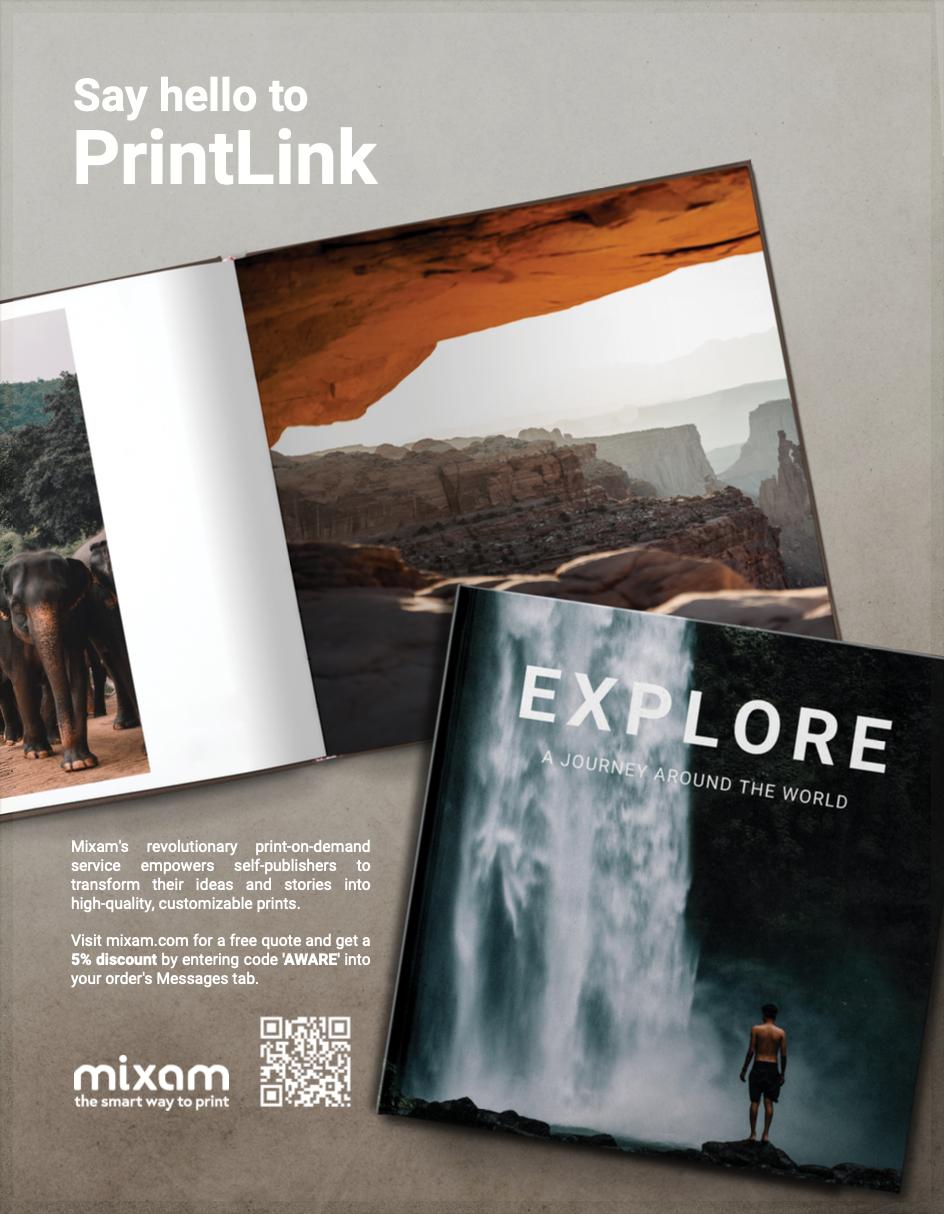




SCHLONER
As
someone living with MS, every year I like to add on to my story and share it in hopes it will help those either living with or recently diagnosed with MS.
As a child and into my teenage years I was very active. I went swimming, bowling, horseback riding & ice skating. I went to Israel for a year and worked and studied Hebrew.
After I returned from Israel, I went to work for my father at his department store in Windsor, Ontario in the stock department. During that time, I was diagnosed with MS and had to take some time off but when I recovered, I went back to work until the department store closed it’s doors. I have amazing memories for those years.
Soon after, I began working for my sister at her law firm doing everything from administrative work to filing in courts & delivering subpoenas and motions. I loved how this role gave me the opportunity to be out and about, and not behind a desk all day. I was constantly in motion and the walking felt great for me.
Here’s my MS story…
My multiple sclerosis was diagnosed in July of 1977. I was 27 at the time and there were no meds. I lost the use of the whole right side of my body and feared MS was a death sentence.
I prayed a lot and my amazing, wonderful father bought me exercise balls to stimulate my arms and legs. He would help me exercise daily, and I promised myself that if I recovered, I would start swimming every day and not let this hideous disease defeat me.
Thank goodness. After 3 months I recovered and started swimming every day. I had little flare ups in between but my MS was pretty much in check.
Then, in 2014 I had a flare up in which I lost feeling in my stomach, hands and feet. I began exploring medication and chose one after consulting my doctor and researching all of the options to treat MS. Unfortunately, nothing worked. The next year I had another bad flair up and lost the use of my right leg from the hip down. I was hospitalized for two weeks and put on another MS med. Unfortunately, I had a negative reaction. But I didn’t give up and I’m proud to say I’m on copaxin, a terrific medication which has been a game changer for the last nine years. MRI’s show no new lesions in the spine or brain.
Another huge part of my MS mitigation is focused on pushing physical activity. In 2015, I joined Yoga Moves MS. I had a hard time doing certain poses, moving and doing breath work. Yoga breathing was extremely difficult. Fast forward to 2025, I have come so far, including learning the yoga breath which helps me tremendously when I am stressed and in pain. I can now do poses and stretch, which I had such a hard time with initially. I have met so many wonderful friends and we have such a wonderful time together inside and outside of class. We dance to 60s, 70s and 80s music before we start our yoga, and it's a constant reminder of what's possible with perseverance. ,




“My
I've even given names to my walker and cane. Bunny, my cane goes everywhere with me. I even dance with her and she's my companion to MS Yoga. I do so many exercises with her in different poses. Everyone at MS Yoga knows Bunny, and anyone who meets Bunny loves her. My cool walker named Red has the most comfortable seat, and they are two of my best companions.
Whether you have had MS for a long time or have just been diagnosed, I want to let you know that MS Yoga was the best decision I have ever made. We have teachers, some of whom have MS, who instruct us and help us with our moves.
I also walk at Costco a few days a week which comes with the perks because I get to taste all of the great samples. When it is warm out, I will resume swimming and ride my stationary bike which I bought after getting out of the hospital in 2015.
My advice for anyone living with MS is never give up. Be as active as you can be while knowing your limitations. I believe having a great outlook, exercising, and refusing to give up has served me all these years. I have had MS for nearly four decades and here I am going strong and so proud of my great accomplishments. I love being me. MS is a part of who I am, and I intend to be on that Smucker’s jar on the Today Show at 100. Join me in my journey. ∎
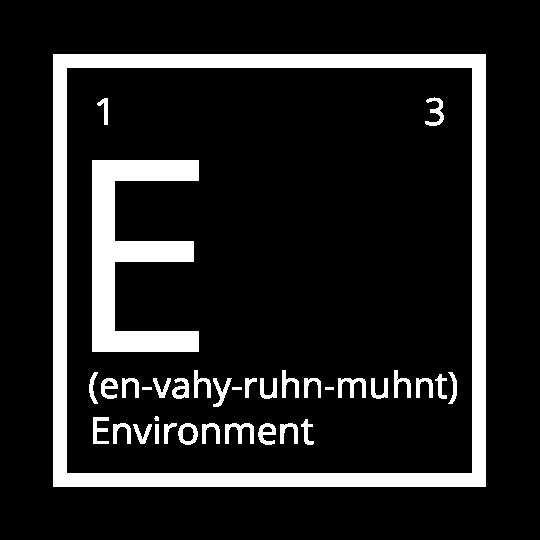
Once tossed aside as useless waste, bicycle inner tubes are now at the heart of an eco-fashion renaissance.
UPCYCLING DESIGNER & ECO ENTREPRENEUR


‘TIRELESS’ EXCLUSIVE COLUMN BY
LAURA ZABO
In a world where landfills are overflowing and fast fashion dominates, a quiet revolution is taking place—led by creatives who see beauty in the discarded. One of the most underrated yet surprisingly versatile materials in the upcycling world is the humble bicycle inner tube.
Flexible, durable, waterproof, and often destined for the bin after a single puncture, these rubber tubes can be transformed into stunning, stylish, and functional items. From edgy statement jewelry to minimalist wallets, belts, and keychains, inner tubes offer a leather-like finish without the environmental or ethical cost.
Best of all? They’re free. Collected from local bike shops or salvaged from personal bikes, inner tubes are a material almost anyone can start experimenting with. All you need is a sharp pair of scissors, some creativity, and a willingness to give waste a second chance.
Crafting with inner tubes is accessible and deeply satisfying—perfect for DIYers, artists, or eco-conscious makers wanting to reduce waste while creating unique products with a bold aesthetic. Whether you’re into intricate earrings, durable accessories, or sculptural fashion pieces, the possibilities are endless. With a bit of soap, water, and imagination, trash becomes treasure, and rubber becomes runway-ready.
Once tossed aside as useless waste, bicycle inner tubes are now at the heart of an eco-fashion renaissance. For the creatively inclined, they’re a free ticket to sustainable self-expression—and an incredible alternative to leather.
Imagine turning black rubber into bold statement jewelry, sleek wallets, or wearable sculptures. Inner tubes are surprisingly easy to cut, shape, paint, and stitch. They respond beautifully to heat and pressure, hold their form well, and can be styled in both raw and refined ways. Their matte finish and industrial texture give every piece a contemporary, edgy vibe that’s hard to replicate.
Designers and hobbyists alike are now tapping into this rubbery goldmine—not just for the cool factor, but because it makes sense. Why pay for materials when bike shops are thrilled to hand over bags of tubes headed for the landfill? Not to mention, reworking waste into wearable art is a deeply empowering, planet-positive practice.



With a bit of soap, water, and imagination, trash becomes treasure, and rubber becomes runway-ready.
UPCYCLING DESIGNER & ECO ENTREPRENEUR
Beyond fashion, inner tubes are also finding their way into practical, everyday objects—think sturdy coasters, protective phone sleeves, even plant holders that double as conversation starters. The material’s natural durability and weather resistance make it ideal for both indoor and outdoor creations. Each piece carries with it not just functionality but also the story of reinvention, of something saved from waste and given a new life.
What makes inner tube crafting especially compelling is the individuality baked into every project. No two tubes are exactly alike—each carries scuffs, markings, and textures that turn into unique design features. Instead of hiding imperfections, makers celebrate them, transforming what might look like flaws into one-of-a-kind details. This celebration of imperfection gives each creation an authenticity that mass-produced goods can never match. Whether you're crafting delicate earrings or a rugged utility pouch, working with inner tubes is like giving new life to what others deem trash. It’s creative, conscious, and completely addictive. So grab a blade, rescue a tube, and join the growing movement proving that style doesn’t have to come at the planet’s expense. ∎



CLICK, TAP OR SCAN TO WATCH NOW

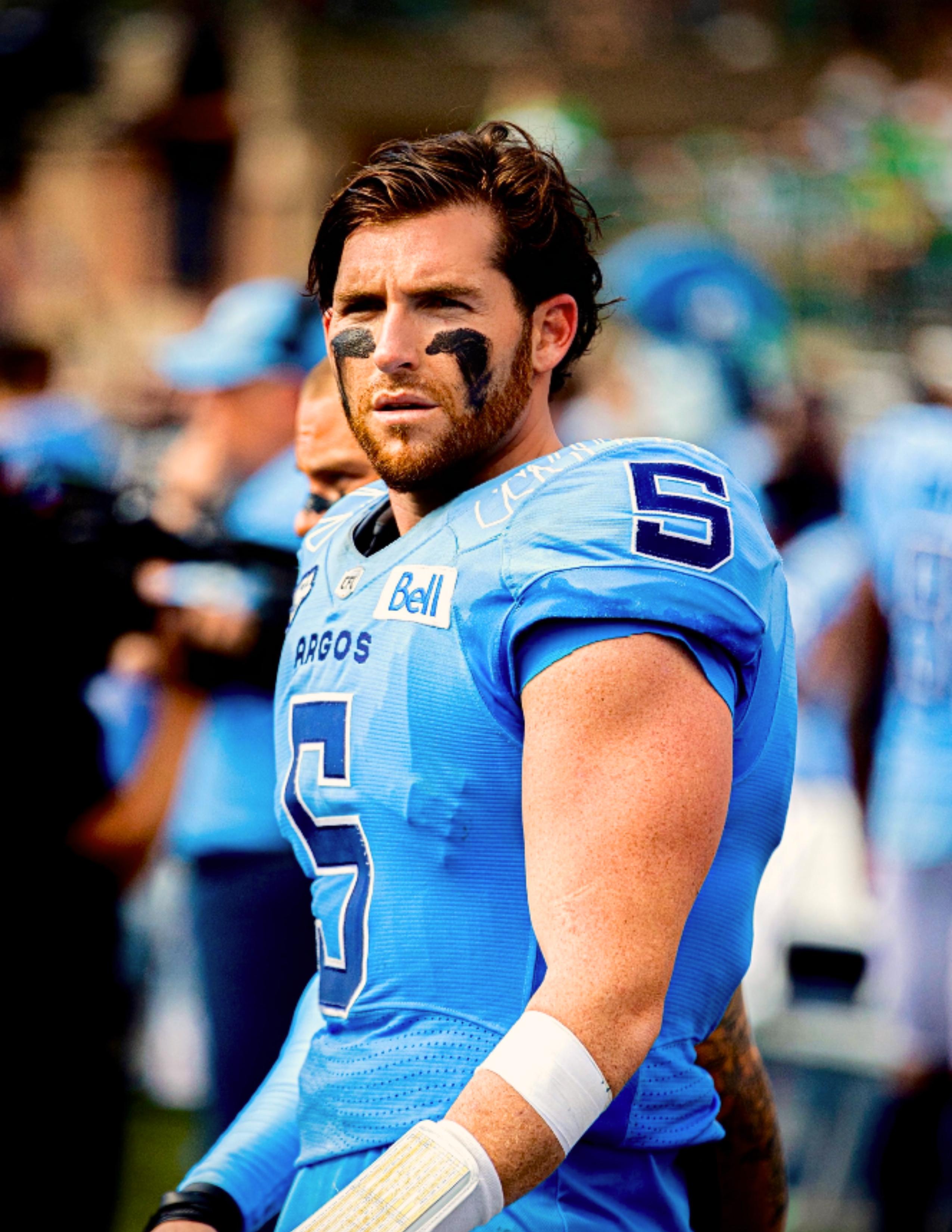

I’m gonna rise to


BRYAN SCOTT PROFESSIONAL FOOTBALL PLAYER
Bryan Scott is the highest drafted Division 3 Quarterback in professional football history. In this exclusive interview, Bryan shares pivotal moments from his journey, revealing the challenges faced during high school and college that shaped his resilience in pursuing his football passion. Join us as we delve into Bryan's story, exploring the influence of his grandfather, Major General James H. Patterson, his leadership experiences, the dynamics of balancing life between Los Angeles and Toronto, and his vision for inspiring and mentoring others to achieve the impossible.
ALLIÉ: Bryan, your journey to becoming the highest drafted Division 3 Quarterback in the history of professional football is truly remarkable. Can you take us through some key moments or challenges that stand out in your mind, particularly during high school and college, where you had to overcome adversity to pursue your passion for football?
BRYAN: Absolutely. I mean, even you just saying those words about ‘the highest drafted’ and everything, it's crazy. It's very humbling. To take you through my journey and how it all started in high school, it was just being that guy that was


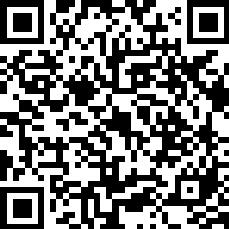

BRYAN SCOTT PROFESSIONAL FOOTBALL PLAYER


“I’m 17-years-old, and now I have to lead 22-year-old men.”
BRYAN: (continued) supposed to accomplish the things that you just mentioned. For me, I think it was the adversity as a freshman being 5’2” and having to earn everything. I think it's just something that I've been able to look back on now with where I'm at. I'm extremely thankful for that time because it's built me into who I am now.
Going into my senior year of high school, I was always the short little kid that just had a dream and a vision. All I wanted was to be the starting quarterback for my high school. And I was able to work really hard to accomplish that. I had to overcome a lot of adversity when I was younger, but it didn't stop there.
We loose our first three games my senior season. So, I'm bummed, and I'm like, “Oh, maybe this isn't what I wanted.” But after that game, I kind of flipped a switch, and we won 13 games straight to win our first state championship in 50 years. Being able to accomplish that was definitely something that I still hold dear to my heart. So yeah, I loved having to go through all those things. It's shaped me into the man that I am today.
ALLIÉ: There are some who work hard and win in the end. You, Bryan, have worked hard and found wins at every level. What has been instrumental in being able to be a champion at every level you have played at?
BRYAN: Something that I'm able to look back on and be grateful for, even though it was hard, was just going into my freshman year of college being 17-years-old, right? I was just young… I was coming off this crazy year where all I wanted was to be a starting high school quarterback. We end up winning. All of a sudden I snap my fingers, and I'm playing college football. How did all this happen, right? And then when I go to college, I'm starting as a freshman because a guy gets injured. I'm 17-years-old, and now I have to lead 22-year-old men. I had to flip that switch and say, “All right, Brian, you don't have time to learn. You're getting thrown right into the fire.” But I think having to go through what I did in high school made me ready for that situation… as ready as I could be. Every single year, I learned things I could get better at from a leadership standpoint, how to win, and how to become a better quarterback. But I think God, throughout my life, has given me opportunities to lead and to do it the right way. I think how I've been able to be successful and win at every level, Allié, is just creating that family atmosphere. It was creating that culture with the guys. It was saying, “I'm just one of you guys.” I might be the quarterback, but I come from such a humble beginning just wanting to be that. I'm not gonna sit here and say that I was born to do this. No. It's just something that I feel in my heart. I just want to be a good teammate. I want to be a good leader. I want to give my guys as much as I can of myself so that we are successful. So, building that family, building that culture… We used to call it the foxhole mentality, where it's like, “Hey, we're in this together. It might be 12 of us against a hundred, and we're gonna get this done because I believe in you and you believe in me.” Creating that true belief in one another, I think, is why I've been able to be successful.
ALLIÉ: The path you took to professional sports was different. It was not the traditional way forward. In finding your way, you used ‘invisible superpowers’ to find pride in your alternative path. Please tell us about these superpowers that can’t be seen only known.
BRYAN: Well, yeah. Thank you for calling them that. I'm wearing the D3 hat today. I found pride later in life about where I went to school (Division 3). And I think for me it's just the mental strength and going through the challenges. It was having the trust and belief, obviously in God's plan, but the trust and belief in my ‘why’ too. When you initially reached out to me wanting to talk and tell my story, the biggest thing that I wanted to share is not my entire story of



BRYAN SCOTT PROFESSIONAL FOOTBALL PLAYER


BRYAN: (continued) football and my career. I wanna make an impact on other people's lives. And if people can see me and say, “Oh, well Byian can do it? Byian's a Division 3 football player. How is he playing professionally? If Bryan was a short little kid in high school, then I'm able to accomplish that too.” I'm not here to just tell this great football story about being a good quarterback. I feel like my story is bigger than that. My story is that I was able to find my ‘why’. I was able to find my purpose and my passion. I don't wake up or at any point in my day saying, “I'm not living my dream.” This is what I wanted for my life. I had this vision and this true belief that this is what I wanted. So, I just feel extremely blessed and extremely grateful that I found my ‘why’.
Talking to younger kids or adults in the everyday workforce who are challenged, I ask what do you want to do for the rest of your life? And why do you want to do it? In college, why are you studying until one in the morning in the library? Well, I wanna have a great job, or I wanna be a doctor. Well then, at least you know you want to be a doctor. It's not, “Why am I in here? Or why am I doing this?” It's “I wanna be a doctor, or I want to be a lawyer, or I wanna get straight A's in high school because I wanna go to Harvard.” Some will say that you can't go to Harvard. You're not smart enough, or you don't speak well enough. But if you find your ‘why’ and you are willing to do whatever it takes and have that true belief in yourself that you can get it done. I'm a true example of that.
ALLIÉ: I love how you talk about the ‘why’, and that it’s not asking why… it’s knowing why.
BRYAN: Oh yeah. I was talking to these little kids the other day. I was like, “All right guys, how many of you wanna go to the NFL?” They all raise their hand, right? And it's like, “Okay, you wanna go to the NFL. Why do you wanna go to the NFL?” Nobody gave me an answer. So I said, “Okay, if you were to run 150 laps and you're about to throw up and you're like, ‘God, I don't want to do this anymore.’ Well, that’s a thing that creeps into your head. Okay, now you gotta do two more reps. Then there’s that thing that switches in your head… ‘I'm gonna do two more reps because I wanna buy my mom the house… I wanna do two more reps because I want these guys to believe in me and see me as a leader… I wanna do two more reps because this person told me they didn't believe in me.’ That is your ‘why’.” When you're about to quit and you need to find that extra switch, I think the sooner you can find that in your life, the better off you'll be.
ALLIÉ: Your grandfather, Major General James H. Patterson, is a notable figure in the Aviation Hall of Fame. How has his influence shaped your mindset and approach to life, both on and off the field?
BRYAN: That's my hero. Just plain and simple, he and my dad are my heroes. But the parallels between myself and my grandfather is that the quarterback and the general are one in the same, but one’s a lot more brave and badass. I'm nowhere near his level of heroism. For a general, when everything's going wrong, when people are fighting and when everyone's nervous and panicking, you're in these crazy situations. And who do the people next to you look at? On the battlefield, they were looking at my grandfather. What are you gonna do? Are you panicked? Are you worried? How are you gonna act in this moment? He was always very calm and he rose to the moment.
Something my mom always used to say to me, whether it's in sports or life, she said, “Bryan, you need to rise up. Rise up, and be there. Be in the moment. Take over the moment.” That's something that I'm extremely thankful for, from him and my mom as well, just finding that peace and that calm in the most hectic moments. I've been able to do that with football where there's 30,000 people cheering against me to lose the game. But I'm there, and I'm just calm. I'm gonna rise to the moment for the people next to me. I always found that in my career I was able to do that, because I know my ‘why’.
I wanted to get it done, and I wanted to get it done for the four people in the stands cheering for me to score the touchdown (which is my family) or for the 11 guys in the huddle with me who are looking at me. How am I gonna react? “Hey guys, I'm with you. I'm here for you. We're gonna go get this done. No matter how many people think we're not, we're gonna go get this done because I believe, and you guys believe in me.” So the parallel between my



BRYAN SCOTT PROFESSIONAL FOOTBALL PLAYER


“Being a quarterback isn’t just what you do on the field.”
BRYAN: (continued) grandfather and me, I would say, is just our ability to rise up in the moment and be there for the people that need us the most.
Another thing with this is both on and off the field. When off the battlefield, my grandfather, James H. Patterson was always ‘General Patterson’. He didn't just stop being a general when he wasn't at work. He was just the general every day of life. And I feel that way about myself. I'm a quarterback, you know. Being a quarterback isn't just what you do on the field, it's off the field. It’s the burden that you have as well. That's something that I take pride in and want for my life. I want to be the general off the field, just as he was.
ALLIÉ: You are recognized for your leadership skills and ability to connect with people to create success. Can you talk about your leadership style and an instance where your leadership played a crucial role in your team's success?
BRYAN: It’s just being able to connect with everybody. I'm just myself, and I would encourage anybody out there to just be yourself. I think people will always gravitate to the person that is genuinely and truly confident in themselves, no matter what it is. You could put me anywhere on any field or any classroom, or any church. It doesn't matter. I'm just gonna be myself. I would encourage everyone out there to just go out there and be yourself. Be who you are, or be the person you want to be, but always stay true to your character, your morals, and the things that you see fit for your life.
After my freshman year of college, I was selected to play for my country, Team USA. We just talked about my grandfather too, which obviously made this an extreme honor for me. They picked the best athletes under 19 in the nation, and I happened to be one of them. So we go all the way to Kuwait, which is in the Middle East, and it's 120 degrees. We're playing at midnight in a different country during Ramadan. It was just insane with things happening all around us.
A way that I was able to find success was to just not worry about the other stuff. Like we just talked about, just being there for your teammates… being there for our troops. I think one of the really cool things that we did as a team is we went to the army base in Kuwait where we were able to actually meet and talk to some of the troops that were fighting the battle so that we could play this great game.
So going into the gold medal game, it was us versus Canada. And it was kind of like, okay, we're kind of supposed to win. We're the USA playing American football, right? I don't play the first half. We're losing 14 to 7, and the guys are panicking thinking that we just spent six weeks of our lives for nothing. We're gonna come home with a silver medal. That's not really okay. And so coach opted to put me in the game, and I just say, “Hey guys, we got this. We're gonna be alright. We're gonna do this.” And I was able to score five straight touchdowns coming out of the third quarter.
The craziest thing about all that is I felt like it was gonna happen… The night before, I felt like this situation was just gonna happen, and it ended up happening. So it was kind of, in a way, God getting me ready for that moment. And still, me being 27 now, just looking back, that's probably one of the greatest achievements I've ever had. It was winning a gold medal in front of our army troops, and in a foreign country. To win the gold medal for all those guys on my team, it was an unbelievable feeling for me. We still all stay in touch. It was nearly 10 years ago. So that just tells you the importance of it, you know? It was definitely one of the most special moments of my life for many reasons.
Exclusive Interview with Bryan Scott https://awarenow.us/podcast/finding-your-why




“Do whatever it takes to go get it.”
ALLIÉ: Your goal, Bryan, is to help the everyday person achieve the impossible, not just in sports but in various aspects of life. How do you envision using your story to inspire and mentor others?
BRYAN: Ultimately, that's why I want to be sitting down and talking with you today. My story is well documented, but I really just wanted to share my experiences, the things that I went through, and the different journey that I took to get where I'm at now. And for the younger people out there in all aspects of life, it's okay to take the different path. If someone tells you ‘no’, if someone says that this isn't the way your life is supposed to go, if they say you can't or shouldn’t do this… Yes, you can. And knowing your purpose and knowing your ‘why’, as we talked about earlier… find that. Find why you're doing what you're doing, and if it's true to your heart and that's what you want to do, then go get it. Do whatever it takes to go get it.
I wake up and I look forward to beating myself yesterday, to being the best version of myself every day because I know my ‘why’. You know? And I think it's okay to change that sometimes too. I think if you were to ask me six years ago, “Bryan, why are you doing what you're doing?” I want to prove everybody wrong. I wanna prove wrong the people that said I wouldn't be a pro football player and that I wouldn't go to the NFL. But now, for me, it's proving the five to six people that told me I could… When I don't wanna do anymore, I think about them. I think about those people that wanted me to be successful and that thought I would be here.
Finding that ‘why’, truly believing in it, and having that true belief in yourself, your work ethic, your dream, and your vision for your life, I feel like you'll be a much happier person. And it’s just being able to be truly yourself and to be able to connect with other people from all aspects of life. So everybody, I just want you to go chase your dream, chase your vision, find that ‘why’, and attack it every day. ∎
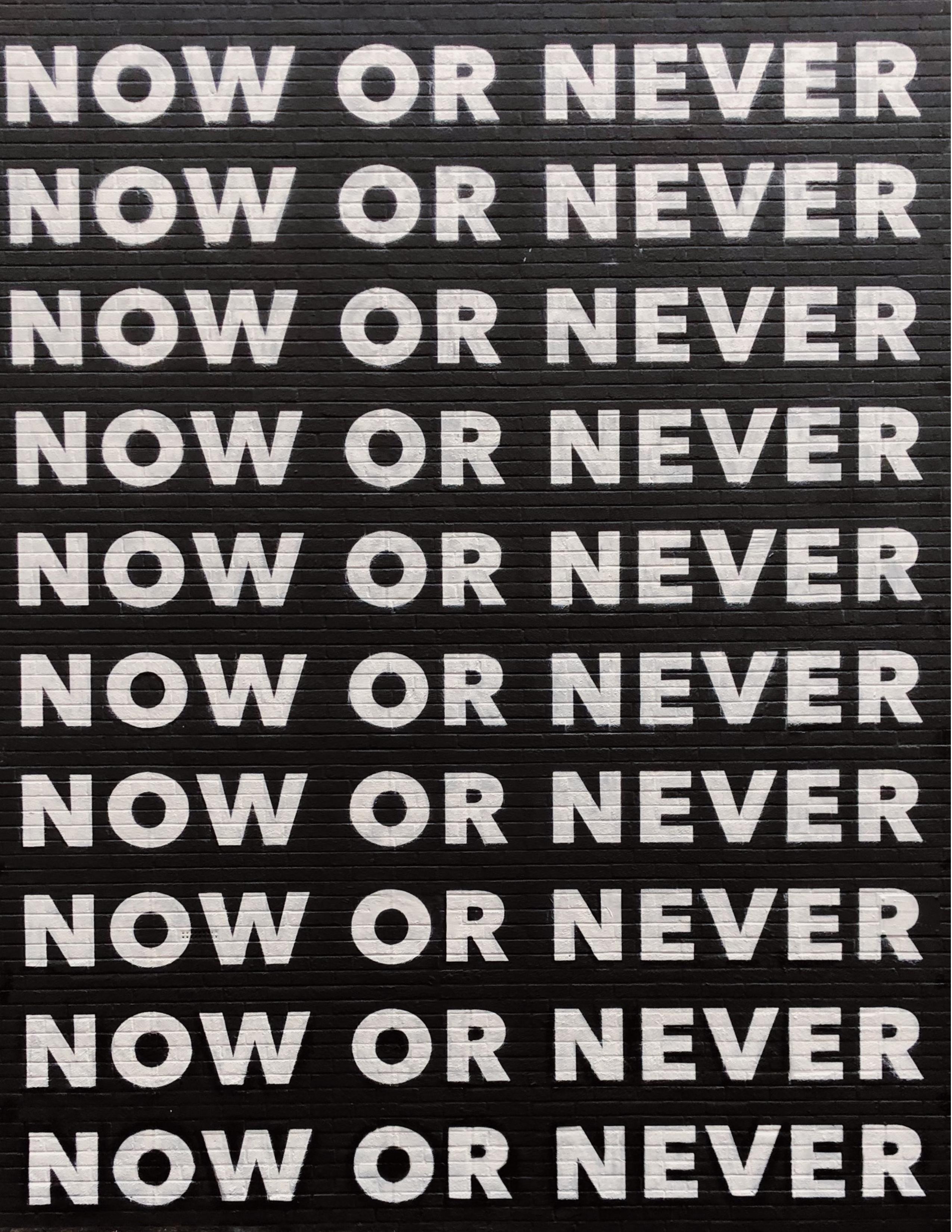

I never knew people could be so cruel until I lived it.
ERIN MACAULEY INTERNATIONAL DIRECTOR OF ADVOCACY FOR #SAMEHERE GLOBAL


FEATURE STORY BY ERIN MACAULEY
It’s funny how things that happened thirty years ago can still impact you in the present day. My final year of primary school was meant to be my year. I was Head Girl and was moving on to a private all girls school the following year. I had always been a popular kid at school and had a lot of friends. But all of this changed in year seven and I will never forget it.
As well as being Head Girl, I was vice faction captain, head of the debating team, sang in the school choir, played netball and was in the dancing team. I had excelled at school up until this point. Why you ask? Because I was relentlessly bullied by not only my peers but also by their parents.
I was at netball training one afternoon and was told by the girls that their parents had started a petition to remove me from my position as head girl. They had also been prank calling me in the middle of the night and isolating me from my group of friends at school. Mum and I went to see the Principal of the school the next day to tell him about this. He did absolutely nothing about it.
I was at a girls house after school and our photo with the dance team was in the paper. The mother said to me verbatim, “That’s a good photo but a terrible photo of you Erin”. I was twelve years old. I believe this is one of the many comments that sparked my anxiety and problems with my mental health.
We went on an excursion the day before we were meant to finish school for the year. This is something I don’t remember because my brain has blocked it out as it was so traumatic, but the kids on the bus kept flicking me with elastic bands. Mum said I got off the bus and just cried and she said I never had to go back to that school. Apparently I was steadfast in my reply and said I was going to finish the year off as I had to give a speech to the school along with the Head Boy. One of the mothers was filming this and when it came for me to give my speech she snapped her camera shut and looked away.
The bullying didn’t stop when school finished for the year and we were moving onto high school. During the holidays we received so many prank calls and had people spitting on our front door. It was awful.
When I moved to my new school I had to catch a bus and train home. I walked the short distance to my house from the train station alone. For a while the people who had been in primary school with me would wait at the train station for me so they could abuse me and tease me. Thankfully this stopped after a while.
This trauma was never addressed by the school. Every time I mentioned it to a teacher they told me that I was Head Girl and I had to deal with it. Nobody told the bullies off or got them to stop. It was pure torture. My brain has blocked so many things out that happened and this is where PTSD comes into it.
Because it was so relentless by every kid in my year and their parents, I developed post traumatic stress disorder. My brain blocking things out is a protection mechanism that happens to traumatised individuals. To this day I cannot remember a lot of what went on and Mum fills in the blanks for me.
I thank god that I grew up in an era without Facebook, Instagram, Twitter and TikTok because it would have been so much worse. It was horrendous with just having a home phone and then being able to abuse me with their voices whenever I saw them over the Christmas period and into year eight.
I don’t know what sparked the bullying and I don’t think I ever will know. But for those out there being bullied, speak up. Please talk to somebody about it because it is not okay and can impact you later in life like it has me. For people bullying people - think again. You have no clue how much weight your words carry and what your actions do to people. If someone was doing this to your child how would you feel about it?
I largely blame the school for not holding the bullies accountable for what they did to me. Also their parents - had the tables been turned they would have fought for their kid as well. My mum tried everything she could to help me but we were just rebuffed by the school. A psychologist told my Dad that because of this trauma my brain has stopped and on the inside I am still a 12 year old girl. I don’t know how much of this is true. I would need to research PTSD more to find this out.
When your peers, their parents and teachers don’t nourish your life at such a pivotal age it wreaks havoc on you. I became a shell of myself. I will never get over what happened to me as it was so traumatic but I want to speak up about it to help others who might be going through the same thing. Nobody understands how damaging it can be until you’re in the situation and my primary school has a lot to answer for because of their lack of support or help.
The kids that bullied me have gone on to have kids of their own now and I really hope nothing like what happened to me happens to their children. I haven’t forgiven nor have I forgotten the bullies and I don’t think I ever will. I never knew people could be so cruel until I lived it. So my message to everyone is to be kind. You never know what damage you are causing and how your actions will impact a person for the rest of their lives. ∎
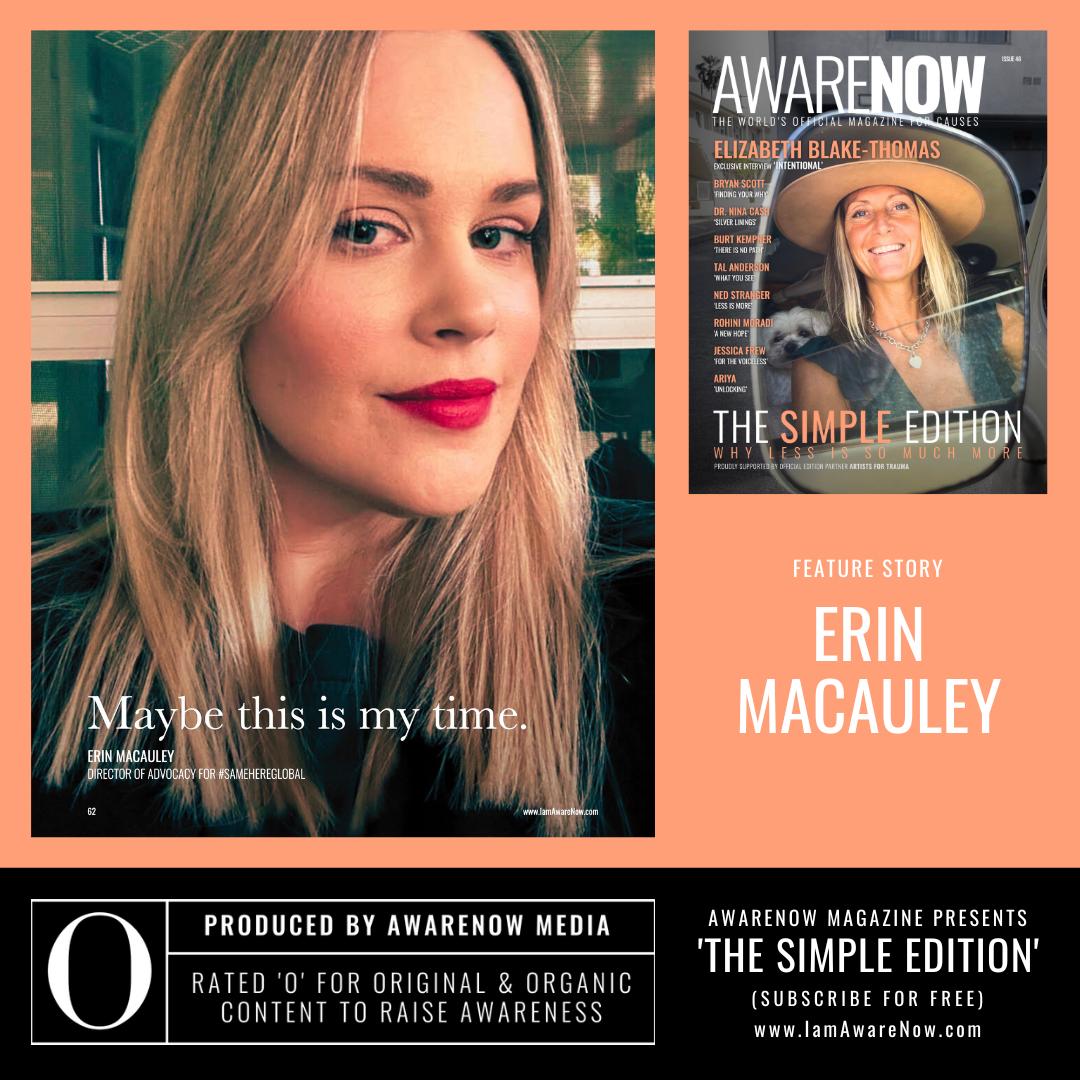
ERIN MACAULEY
International Director of Advocacy for #SameHere Global www.awarenowmedia.com/erin-macauley
ERIN MACAULEY is passionate about all things mental health and is a compassionate voice for those who are struggling with mental illness. Driven to help those most in need, through her vulnerable and open blogging about her own personal struggles, she lifts up others up and gives them hope.


Expanding democratic government beyond the nation-state is the next necessary step in the political evolution of humankind.
ANDREAS BUMMEL
CO‐FOUNDER AND THE EXECUTIVE DIRECTOR OF DEMOCRACY WITHOUT BORDERS


‘ARTICLES
In a world fractured by borders yet bound by shared crises, Andreas Bummel has dedicated his life to championing a bold idea: global democracy. As the co-founder and Executive Director of Democracy Without Borders, he envisions a United Nations Parliamentary Assembly that finally gives citizens—not just governments—a seat at the table. His work is a call to ignite the untapped power of global citizenship and chart a democratic future for all of humanity.
ALEX: What drives your commitment to global democracy, and how do you stay motivated in the face of challenges?
ANDREAS: What drives me is a firm belief that global democracy is essential to tackling today’s global challenges and to ensure a flourishing of all life on Earth. Expanding democratic government beyond the nation-state is the next necessary step in the political evolution of humankind. I'll admit staying motivated is a daily challenge given the state of the world, but I believe persistence ultimately will lead to success. Major battles in history like abolishing slavery, expanding suffrage, ending colonialism, or dismantling apartheid, were all won because people refused to give up. And there are people everywhere who already identify as global citizens, who are tired of nationalism, and support steps forward.. There’s untapped power waiting to be stirred and it is our task to ignite it.
ALEX: In your view, Andreas, what are the most pressing global issues that the current international system fails to address effectively?
ANDREAS: We need to recognize that we are facing a global polycrisis, a web of interconnected global challenges that can no longer be addressed in isolation. The climate crisis is one of the most important ones but there are many others, such as war and violent conflict, state fragility and state collapse, which is related to food security, economic inequality, the rapid advance of technologies like artificial intelligence, and the ongoing risk of global pandemics. The current international system, as it stands, is not capable of addressing any of these challenges effectively, let alone the web as a whole. The underlying reason is a mismatch between the planetary scale of the problems and the structure of the international system, which is still based on the idea of sovereign nation-states. What is needed is a leap towards a democratic global polity.
ALEX: Could you elaborate on the envisioned role of World Parliamentary Assembly? I understand it would complement the existing UN General Assembly?
ANDREAS: The idea behind a World Parliamentary Assembly is to give citizen-elected representatives a say in global affairs. Right now, the UN General Assembly brings together representatives from each country, but these are all diplomats appointed by the executives. A World Parliamentary Assembly by contrast would enable broader representation and reflect the diversity of countries and the world better. In particular, it will be a vehicle to give a voice to political opposition which is currently shut out at the UN.



ANDREAS: (continued) This new body certainly would complement the UN General Assembly, not replace it. In our vision, the World Parliamentary Assembly would act as a voice of humanity, providing democratic oversight, debating global issues in a more open and transparent way, and in the long run even help shape binding global laws on things like climate action, global health, or digital governance.
In short, this assembly would help bring democracy to the global stage. It is about making global decision-making more effective and accountable to people, not just to governments. On top we also support additional changes like a World Citizens’ Initiative or Global Citizens’ Assemblies which will provide opportunities to everyday citizens to have a direct voice as well.
ALEX: Looking ahead, what milestones do you hope to achieve in the next decade?
ANDREAS: My organization, Democracy Without Borders, has developed a long-term Theory of Change that envisions the adoption of a global constitution by 2045, guided by key milestones. By 2030, when the UN Sustainable Development Goals are reviewed, we hope a majority of UN Member States will commit to establishing a Parliamentary Assembly.
Once established, the assembly is expected to generate new momentum. It would form its own portfolio committees to address urgent global challenges and bring democratic solutions to global institutions.
We believe this assembly will help strengthen democracy both globally and nurturing a sense of global citizenship. More broadly, we need to shift the global conversation. One of the pressing challenges of our time is the lack of bold, future-oriented visions that can inspire shared purpose and hope. ∎
Support the efforts for global democracy at www.democracywithoutborders.org/donate

Social Entrepreneur www.awarenowmedia.com/alexander-taylor
Alexander is a market entry consultant & professional coach currently living in Dubai. He spoke at the United Nations European Headquarters to lead their social entrepreneurship program: 1M2030. For these efforts, he received the McKinsey & Company Achievement Award, a scholarship from a Nobel Prize Family member, as was featured on NBC News. He is certified by PwC in Business Fundamentals and from the UN in Sustainable Finance. Visit his YouTube at: tinyurl.com/artemnexgen




